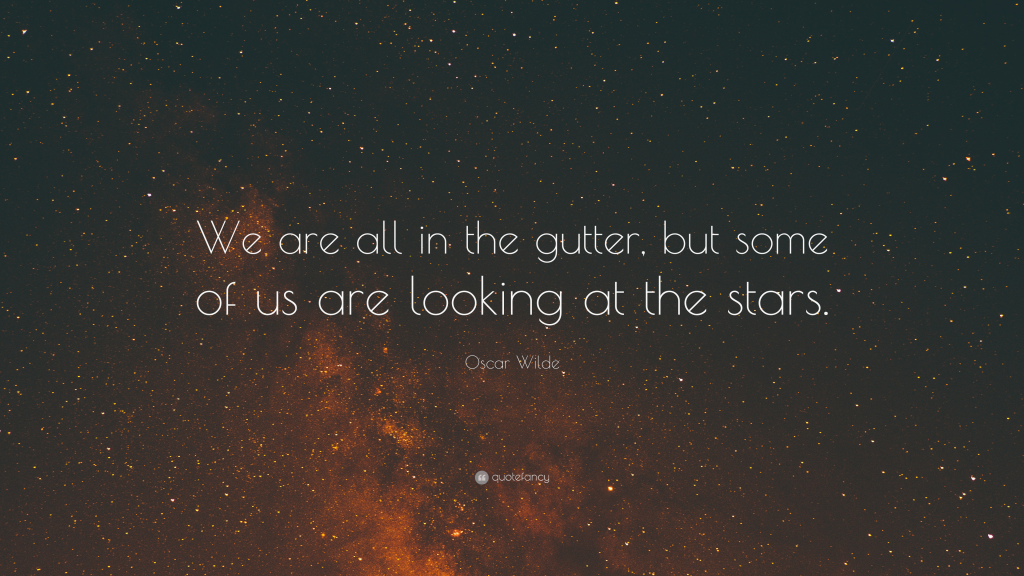Eskişehir, Türkiye, Sunday 3 July 2022
There are many similarities between my neighbourhood here in Eskişehir and the old neighbourhood I left behind in Landschlacht, Switzerland – open fields across from the apartment building, a football pitch a stone’s throw away, and a bus stop close by to busier urban areas.
The main two differences between Landschlacht and Eskişehir are the presence of the wife in Switzerland and her absence here in Turkey, the presence of starry skies in Landschlacht and the absence of celestial bodies overhead in Eskişehir.

Starry, starry night
Paint your palette blue and gray
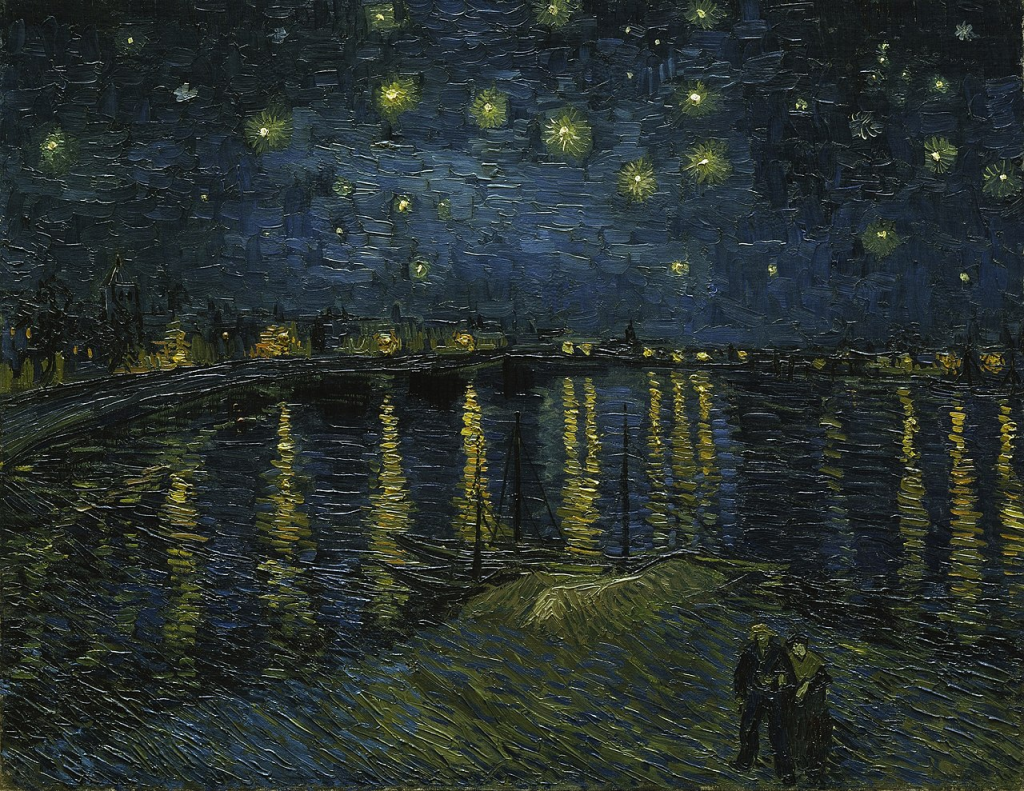
Look out on a summer’s day
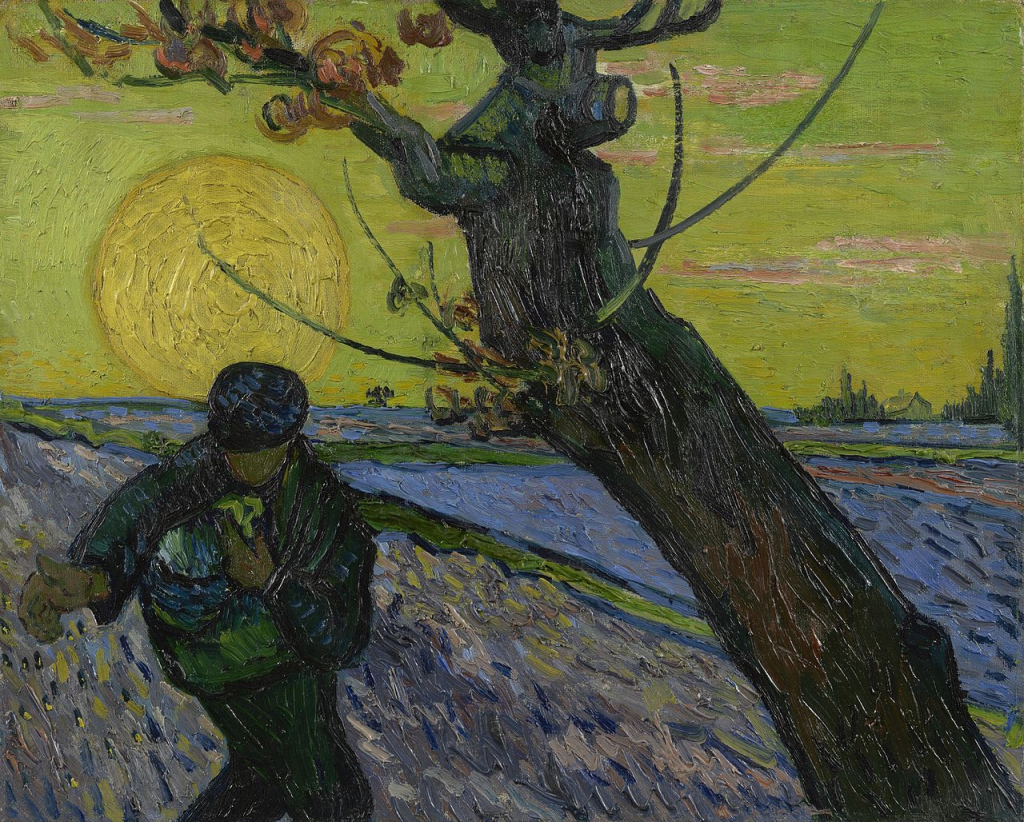
With eyes that know the darkness in my soul
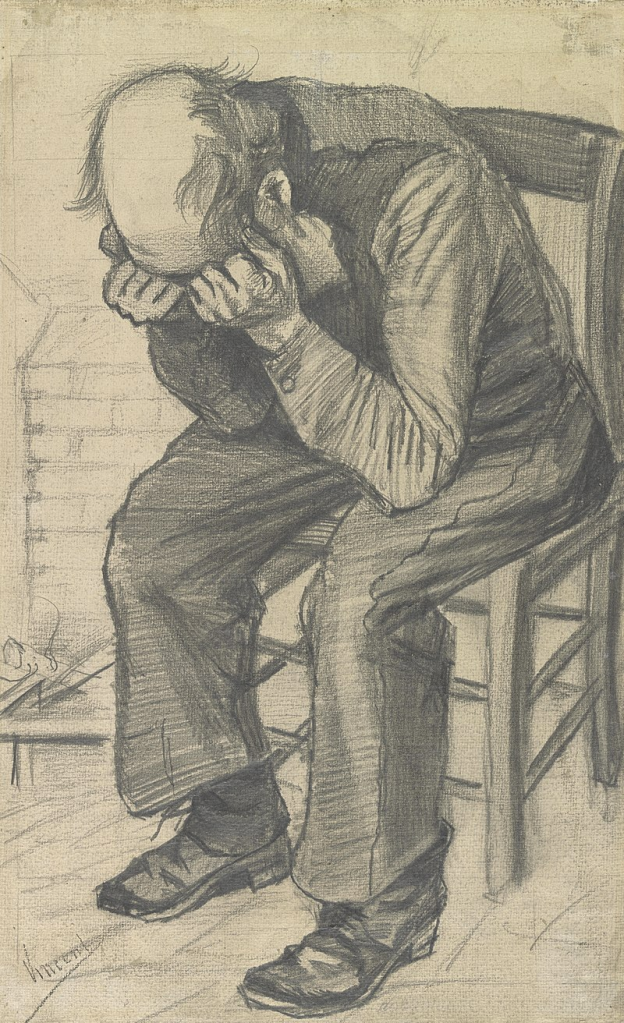
I have chosen absence over presence by residing here, but this does not mean that the absence isn’t keenly felt.
My blogs – this one and my sadly neglected Chronicles of Canada Slim – try to be varied, bouncing between travels of myself and others, of subjects recent and rare.
But because I am so far removed from the familiar, there is sometimes a compulsion in me to remember places past and to reflect on their meaning.

From my kitchen window in Eskişehir I can see foothills in the distance.
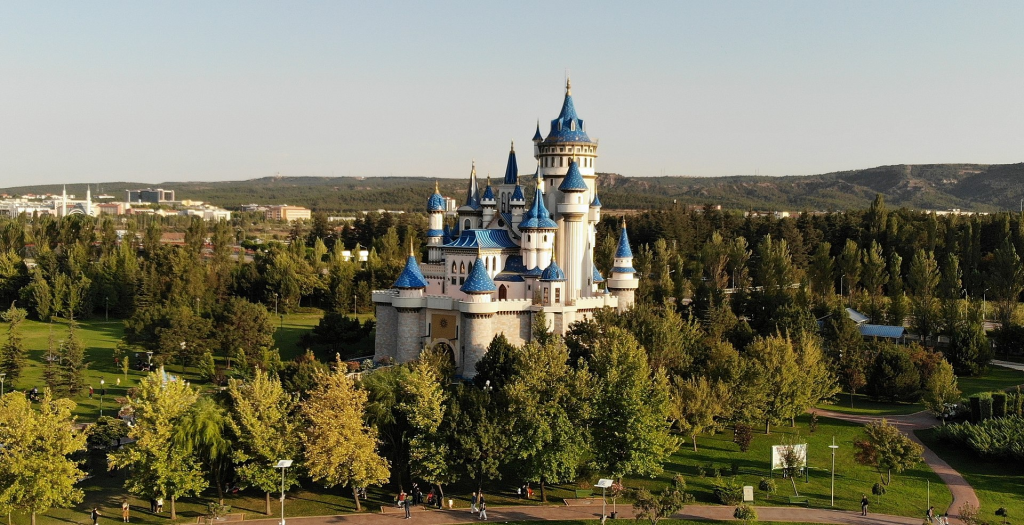
On an exceptionally clear day one can see Mount Säntis from our living room window in Landschlacht.

Shadows on the hills
Sketch the trees and the daffodils
Catch the breeze and the winter chills
In colors on the snowy, linen land

During the mini-sabbatical between school contracts the wife insisted that we spend the night on Säntis.
What follows is that story…..
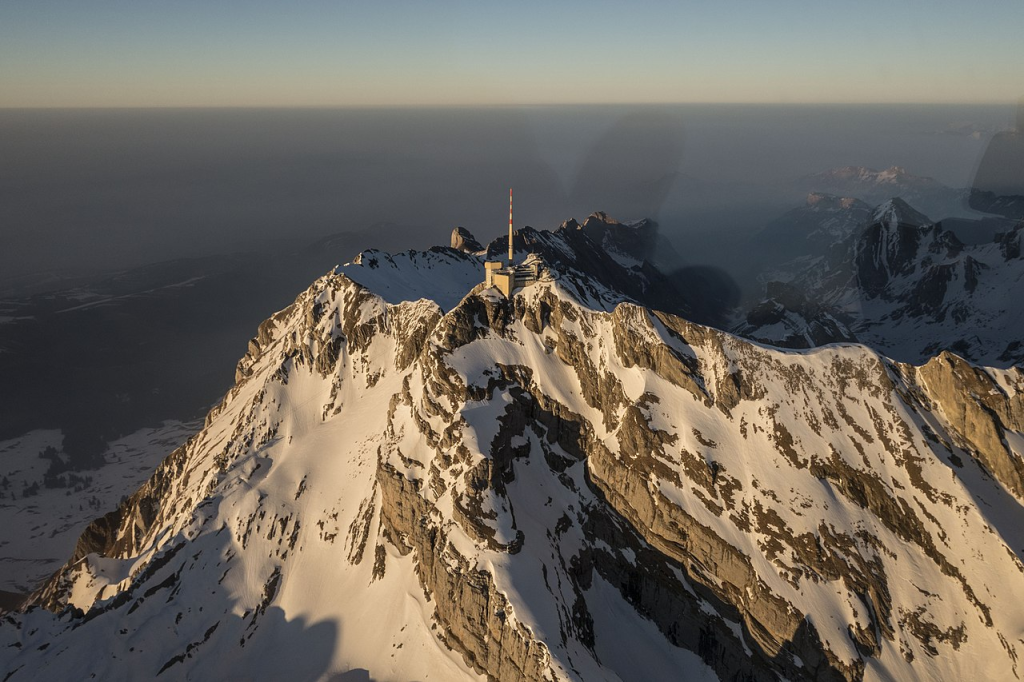
Schwägalp, Switzerland, Thursday 30 December 2021
At 2,501.9 metres (8,208 ft) above sea level, Säntis is the highest mountain in the Alpstein massif of northeastern Switzerland (Schweiz).
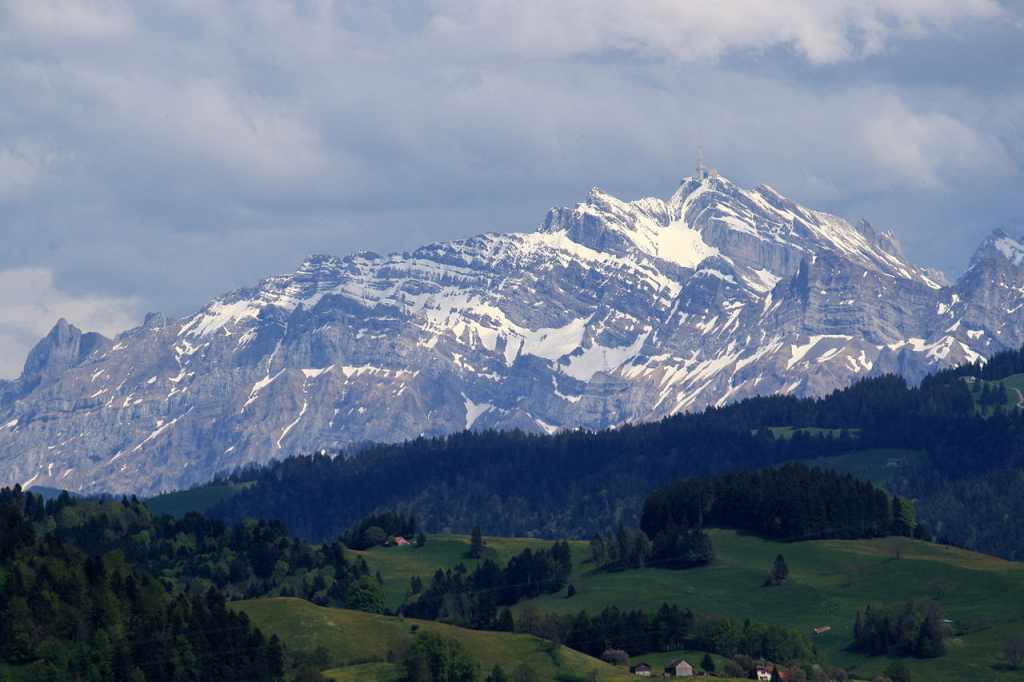
It is also the culminating point of the whole Appenzell Alps, between Lake Walen (Walensee) and Lake Constance (Bodensee).
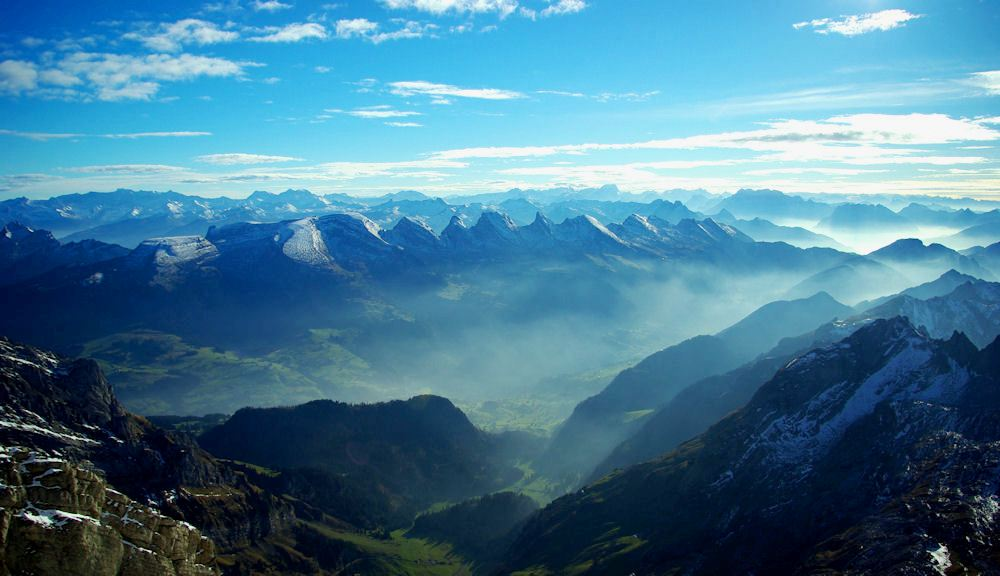
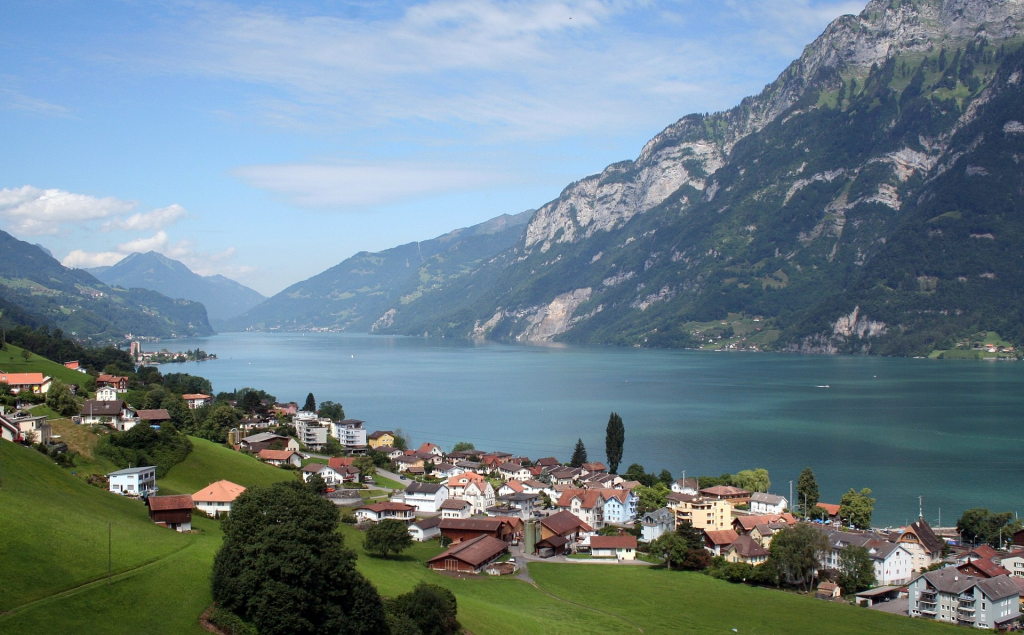

Shared by three cantons, the mountain is a highly visible landmark thanks to its exposed northerly position within the Alpstein massif.

As a consequence, houses called Säntisblick (Säntis view) can be found in regions as far away as the Black Forest (Schwarzwald) in Germany (Deutchland).

Säntis is among the most prominent summits in the Alps and the most prominent summit in Europe with an observation deck on the top.
The panorama from the summit is spectacular.

Six countries can be seen if the weather allows: Switzerland, Germany, Austria (Österreich), Liechtenstein, France and Italy (Italia).






Säntis is located in the Alpstein region, nearly 10 kilometres (6.2 mi) (as the crow flies) southwest of the town of Appenzell.
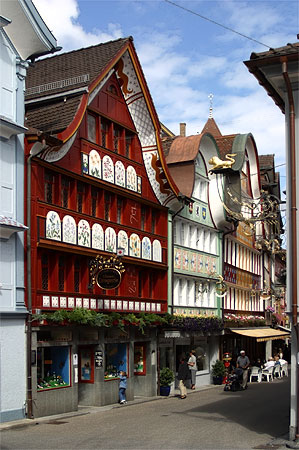
Three cantons meet on Säntis: Appenzell Ausserrhoden, Appenzell Innerrhoden and St. Gallen, the Mountain being split between the municipalities of Hundwil, Schwende and Wildhaus – Alt St. Johann.


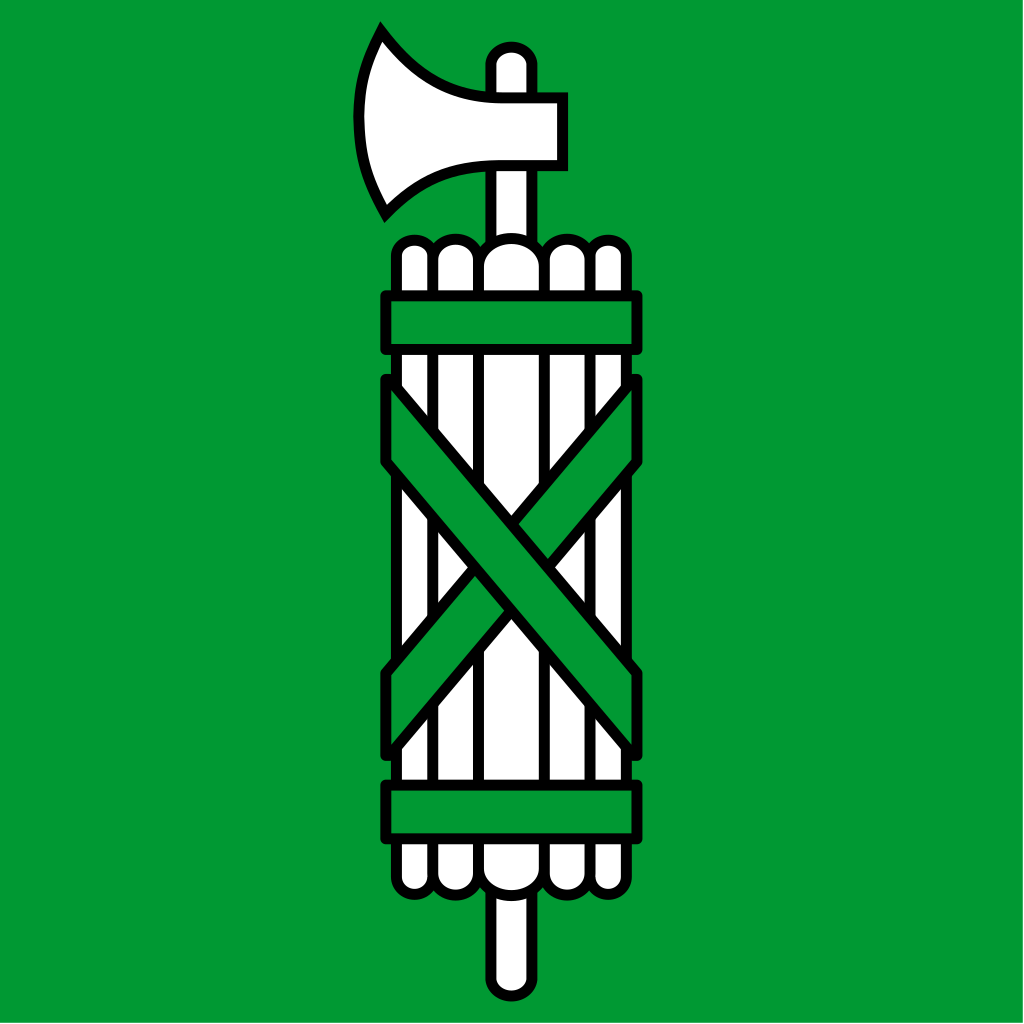


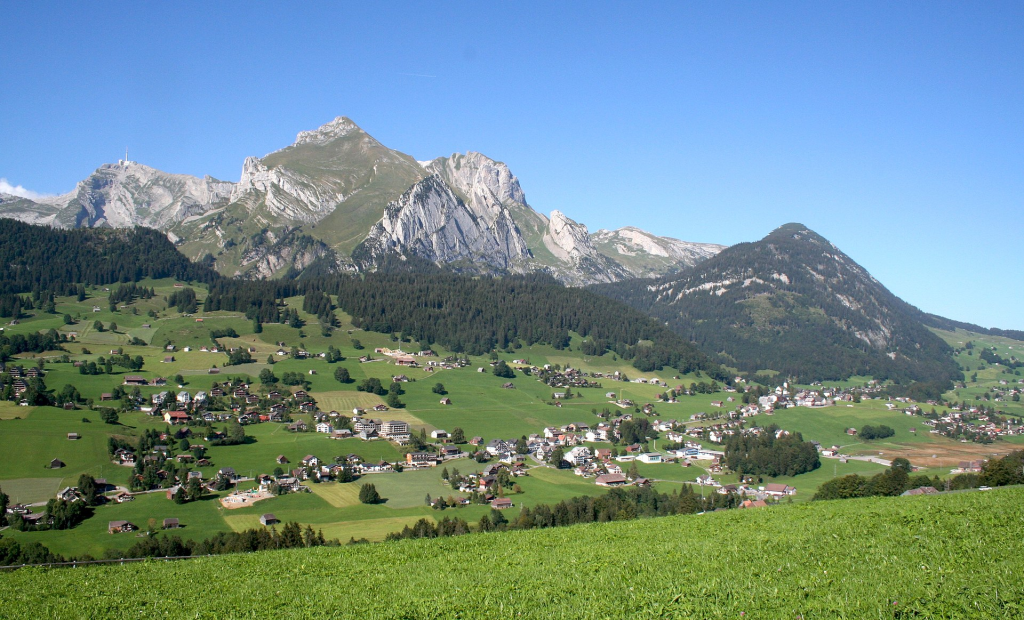
Even though its summit is at only 2,502 metres above sea level, the Mountain ranks number 13th in the Alps and 29th in Europe in topographic prominence at 2,021 metres (6,631 ft).

Peaks with high prominence often have impressive summit views, even if their elevations are relatively modest, Säntis being a prime example.
Säntis is also the highest mountain of both cantons of Appenzell Ausserrhoden and Appenzell Innerrhoden.
So, yes, Säntis is well below the proportions of the Alps, but nonetheless it is the highest point for many kilometres around.

The exposed position of Säntis results in weather conditions normally observed in the high Alps, which means being a typically polar climate, but with heavy precipitation not found in most of the Arctic.
This day, this penultimate day of 2021, found us at the base of the mountain in -3° C and at the summit in -8° C temperatures.
The exposed location of the Säntis makes for extreme weather conditions.
The mean temperature is −1.9 °C.
The lowest temperature ever recorded was −32 °C in January 1905, the highest 21.0 °C on 26 June 2019.
For 1991 to 2020, the annual mean temperature is -0.7 °C, with the coldest monthly mean temperatures being measured in February at -7.5 °C and the warmest in August at 6.8 °C.
On average there are around 238 frost days and 149 ice days expected.

With an annual mean of 2,837 mm, the Säntis is the “wettest place” in Switzerland.
The highest daily total of precipitation was 180 mm in June 1910.
The highest precipitation in one hour was measured in July 1991 with 81.9 mm.

During Hurricane Lothar on 26 December 1999, a record wind speed of 230 km/h was measured.

Coming from France at a forward speed of 100 km/h, starting in northern Brittany at around 0400, the storm hit Brittany (Bretagne), the Black Forest (Schwarzwald), Switzerland, Liechtenstein and Austria (Österreich), for about 2.5 hours from 1000 to 1200.
The hurricane caused the highest storm damage in recent European history, especially in northern France, Switzerland, southern Germany and Austria.
As a result of the storm and the cleanup effort, about 110 people died, including 88 in France.
In Baden-Württemberg (southwest Germany), 13 people were killed on the day of the storm, and 14 people died in Switzerland.
Weeks after the storm, people were still dying during the clean-up work, mostly in private forests, where untrained forest owners and their families were mostly killed by live tree trunks during the timber salvage work.
In Switzerland alone, 15 people died from such accidents, in Austria there were no serious injuries at the end of 1999.
In honour of the Swiss National Day, which is celebrated 1 August each year, the world’s largest Swiss flag was to be seen on Säntis from 31 July – 2 August 2009.
The square national flag was 120 meters each side and weighed 1.2 tons.
The flag ripped on 2 August 2009 due to strong winds in the area.
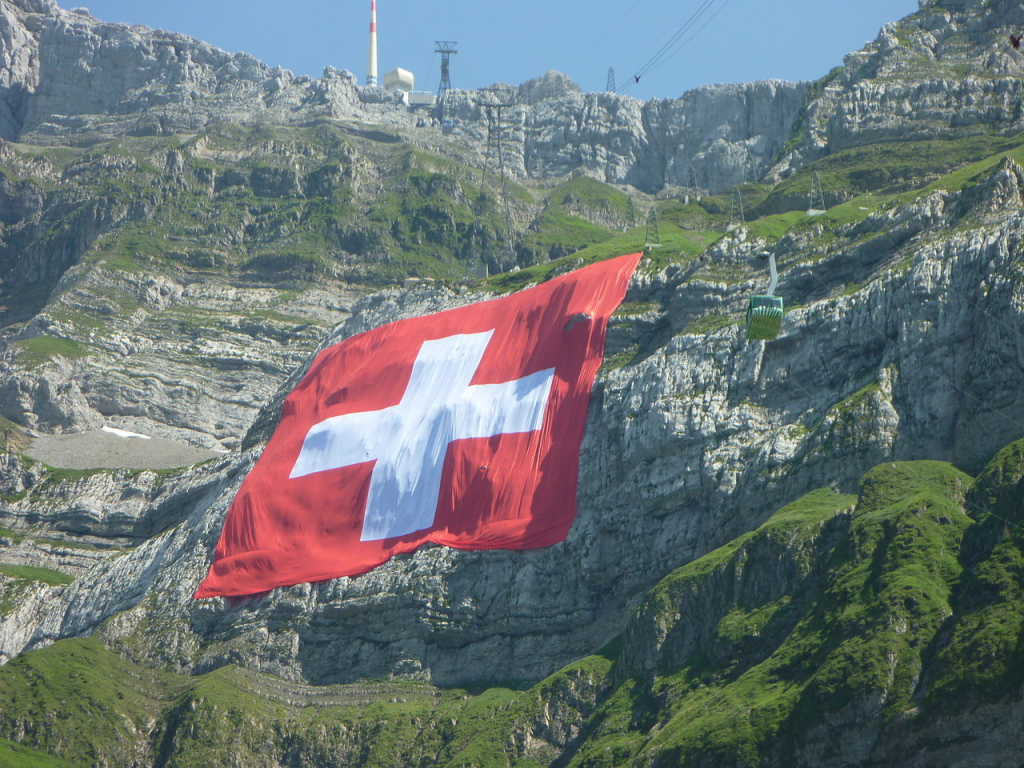
On 21 April and 23 April 1999, below the summit in the northern snow field of the mountain, the highest snow depth ever recorded in Switzerland was measured at 816 cm.
Snow has to be expected in all months:
In August 1995, for example, there was one meter of snow.
Every year there is 1,003 cm of fresh snow on the Säntis, with December snowing the most (165 cm) and August the least (12 cm).
There is at least 1 cm of fresh snow on 114 days per year, with March and December being the months with the most days of fresh snow (15.0 and 15.7 days respectively).
There are no months of the year on average without one day of fresh snow.
The fewest days of snowfall are in August (1.7 days).
There is an average of more than 1 cm of snow on the Säntis on 285.7 days a year.
Even in August there is snow on average on 3.3 days.
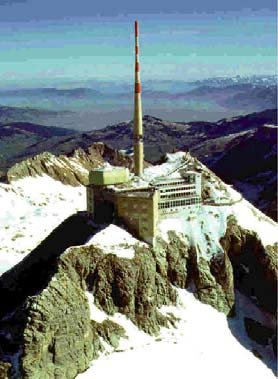
Each year, Säntis is struck by around 400 lightning bolts.
During the first measurements, the engineer Antoine-Joseph Buchwalder and his assistant were struck by lightning on 4 July 1832.
The assistant died at the scene of the accident.
With difficulty and in great pain, Buchwalder reached Alt St. Johann and was only able to resume his work the following year.
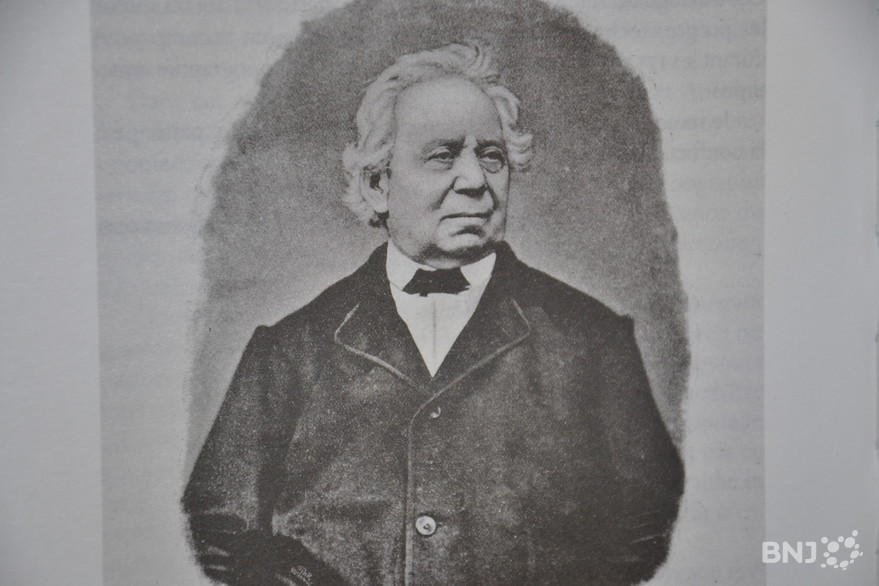
From the summer of 2010 to around June 2011, around 50 lightning strikes were registered in the transmission tower.
Säntis has one of the highest rate of lightning strikes in Europe.
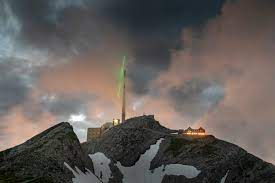
In 2010 a lightning measurement station was installed atop a 120 m (390 ft) tall telecommunications tower on the mountain by the Electromagnetic Compatibility Lab of the EPFL in Lausanne.

The Säntis station automatically records about one gigabyte of data per lightning strike and then notifies researchers.
In the first nine months of operation it recorded about 50 strikes, including seven positive lightning strikes.
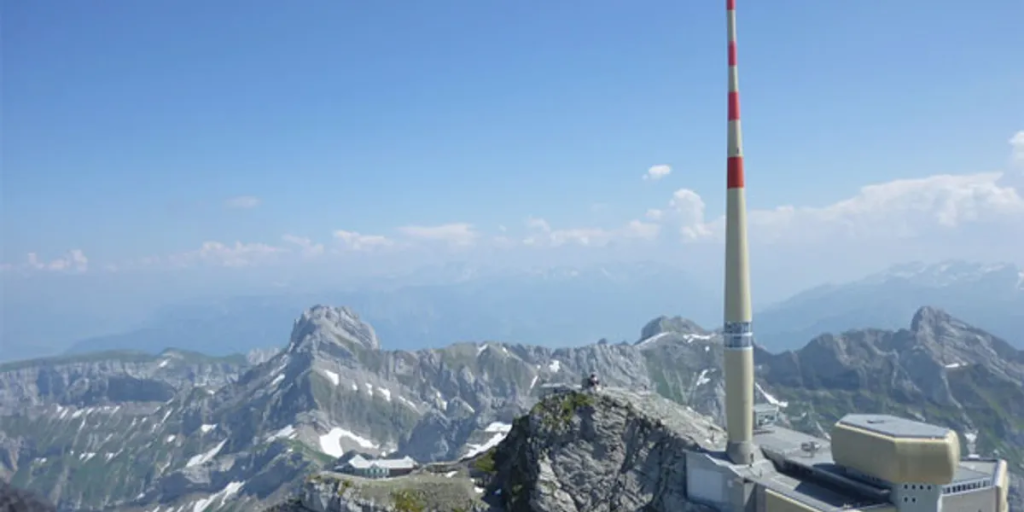
(Cloud-to-ground (CG) lightning is either positive or negative, as defined by the direction of the conventional electric current between cloud and ground.
Most CG lightning is negative, meaning that a negative charge is transferred to ground and electrons travel downward along the lightning channel (conventionally the current flows from the ground to the cloud).
The reverse happens in a positive CG flash, where electrons travel upward along the lightning channel and a positive charge is transferred to the ground (conventionally the current flows from the cloud to the ground).

Positive lightning is less common than negative lightning, and on average makes up less than 5% of all lightning strikes.
Positive lightning strikes tend to be much more intense than their negative counterparts.
An average bolt of negative lightning carries an electric current of 30,000 amperes (30 kA), and transfers 15 C (coulombs) of electric charge and 1 gigajoule of energy.
Large bolts of positive lightning can carry up to 120 kA and 350 C.
The average positive ground flash has roughly double the peak current of a typical negative flash, and can produce peak currents up to 400 kA and charges of several hundred coulombs.
Furthermore, positive ground flashes with high peak currents are commonly followed by long continuing currents, a correlation not seen in negative ground flashes.
As a result of their greater power, positive lightning strikes are considerably more dangerous than negative strikes.
Positive lightning produces both higher peak currents and longer continuing currents, making them capable of heating surfaces to much higher levels which increases the likelihood of a fire being ignited.
The long distances positive lightning can propagate through clear air explains why they are known as “bolts from the blue“, giving no warning to observers.
Positive lightning tends to occur more frequently in winter storms, as with thundersnow, during intense tornadoes and in the dissipation stage of a thunderstorm.)
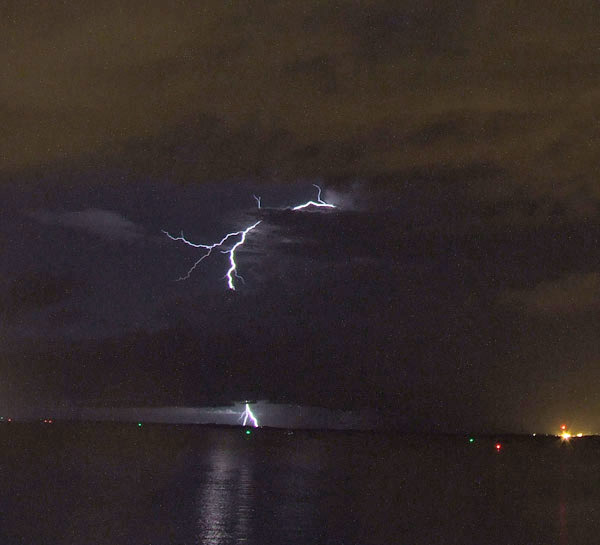
Since 2021, a research consortium led by Jean-Pierre Wolf has been testing a laser lightning rod system from here, firing short 0.7 TW laser pulses into clouds to stimulate lightning discharge.
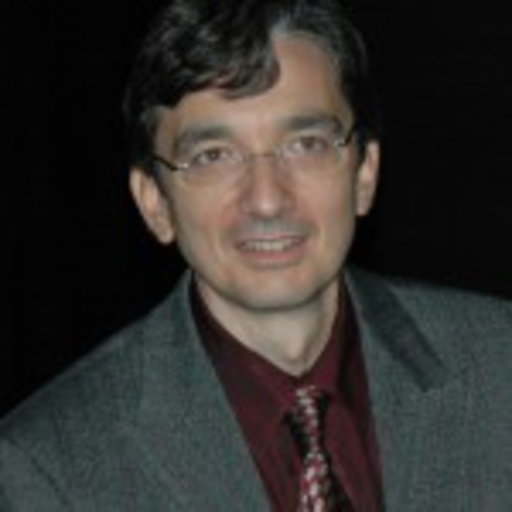
The name Säntis dates back to the 9th century.
It is an abbreviation of the Romansh language (one of Switzerland’s four official languages – the others being German, French and Italian) for Sambatinus (the one born on Saturday), which was thought to be the name of a nearby area.
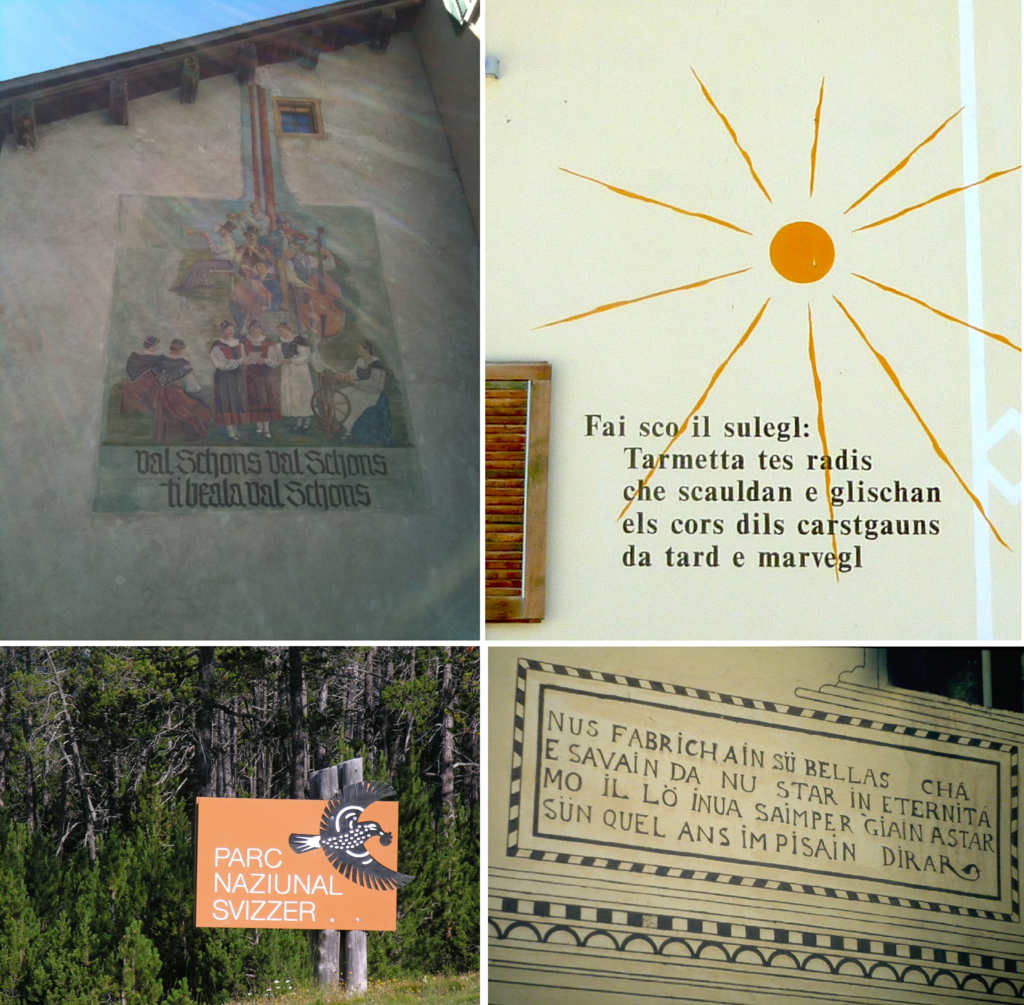
(I have visited Säntis at least a half dozen times over an eleven-year period, but for some unknown reason never on a Saturday.)
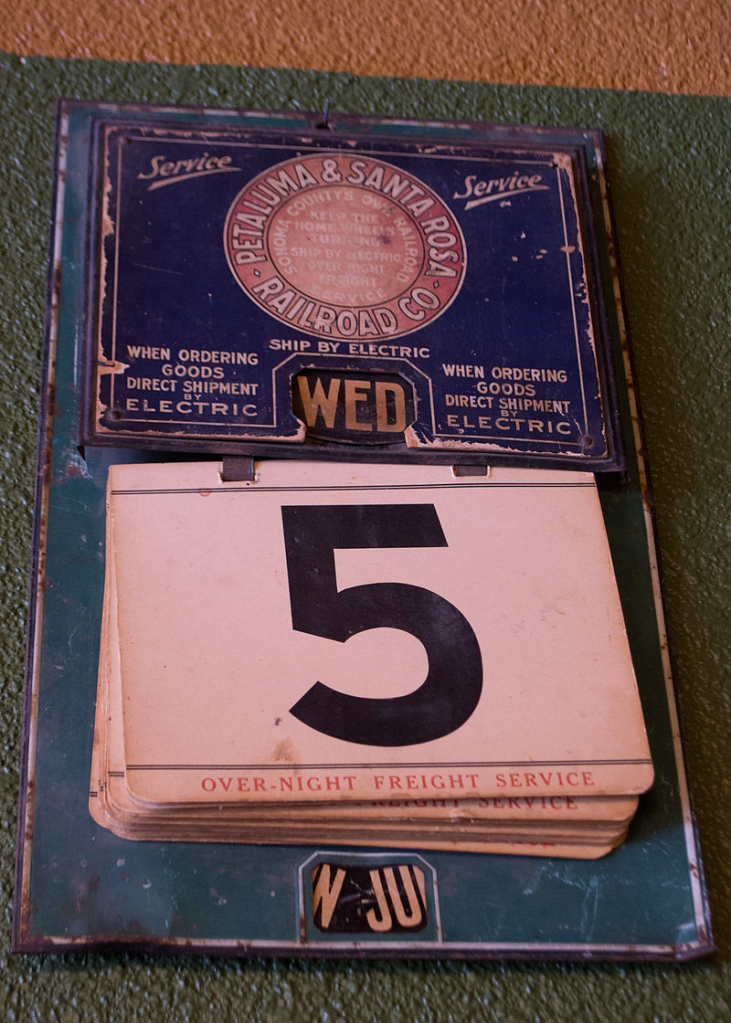
The name was later used to refer to the summit.
In the German language it was called Semptis or Sämptis.
The Mountain later gave its name to a canton of the Helvetic Republic (1798 – 1803).
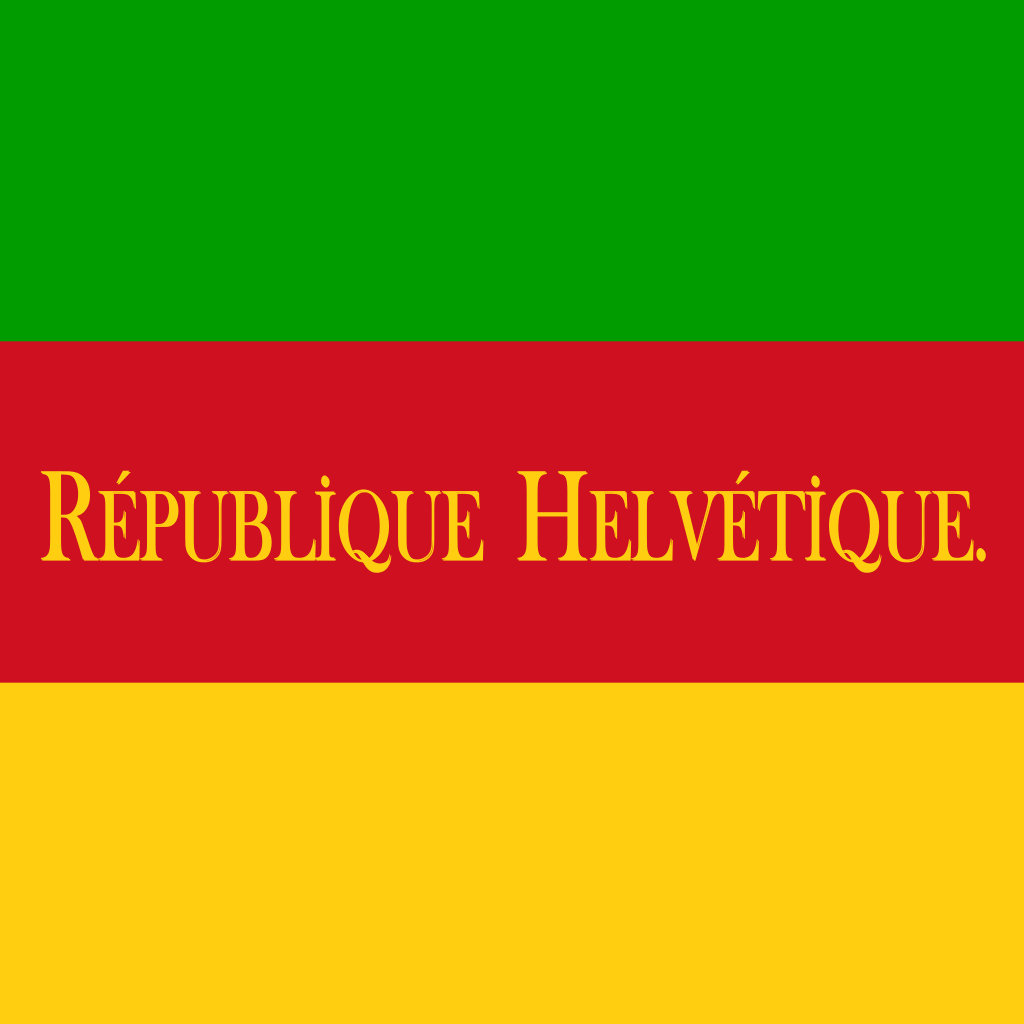
(Säntis Canton consisted of the territory of St. Gallen, Appenzell and Rheintal (Rhine River Valley).
Its capital was St. Gallen.
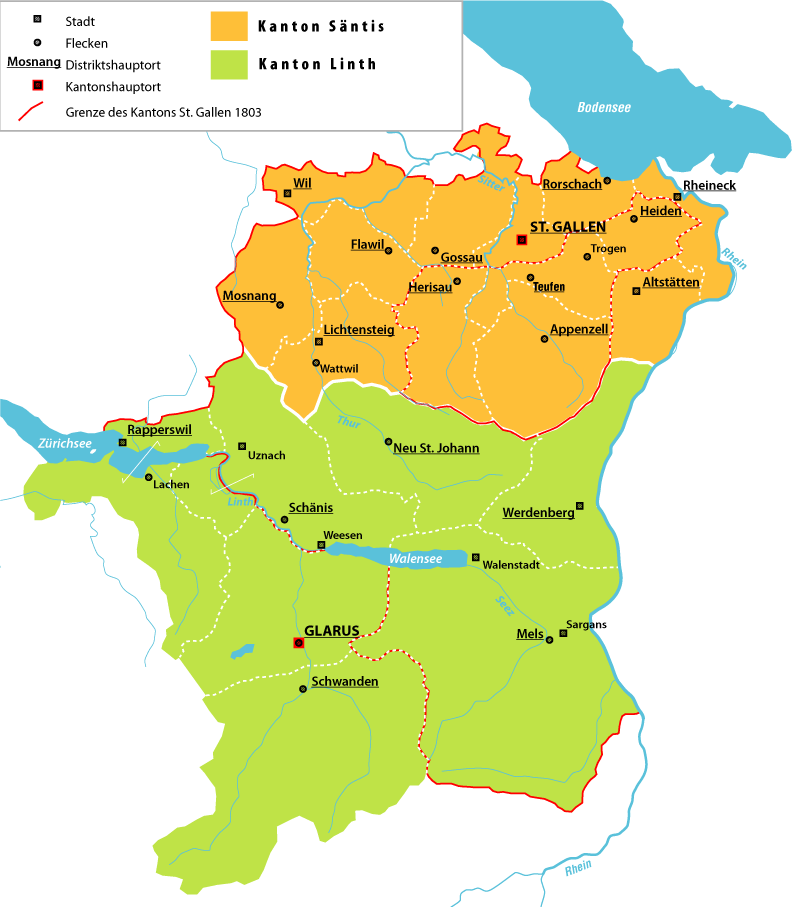
The Helvetic Republic (République Hélvetique) was a sister republic of France that existed between 1798 and 1803, during the French Revolutionary Wars (1792 – 1802).
It was created following the French invasion (January – May 1798) and the consequent dissolution of the Old Swiss Confederacy (Eidgenossenschaft / Corps des Suisses / Confoederatio helvetica) (1300 – 1798), marking the end of the ancien régime in Switzerland.
Throughout its existence, the Republic incorporated most of the territory of modern Switzerland, excluding the cantons of Geneva (Genève) and Neuchâtel and the old Prince-Bishopric of Basel.
The Swiss Confederacy, which until then had consisted of self-governing cantons united by a loose military alliance (and ruling over subject territories, such as Vaud), was invaded by the French Revolutionary Army and turned into an ally known as the “Helvetic Republic“.
The interference with localism and traditional liberties was deeply resented, although some modernizing reforms took place.
Resistance was strongest in the more traditional Catholic cantons, with armed uprisings breaking out in spring 1798 in the central part of Switzerland.
The French and Helvetic armies suppressed the uprisings, but opposition to the new government gradually increased over the years, as the Swiss resented their loss of local democracy, the new taxes, the centralization and the hostility to religion.
Nonetheless, there were long-term effects.
The Republic’s name Helvetic, after the Helvetii, the Gaulish inhabitants of the Swiss Plateau in antiquity, was not an innovation.
Rather, the Swiss Confederacy had occasionally been dubbed Republica Helvetiorum in humanist Latin since the 17th century, and Helvetia, the Swiss national personification, made her first appearance in 1672.
In Swiss history, the Helvetic Republic represents an early attempt to establish a centralized government in the country.)

The Säntis is one of the Alps climbed early on, including for hunting.
Benedictine Father Desiderius Wetter (1702 – 1751) reports in his chronicle that on 14 December 1680, two clergymen and a natural scientist from Zürich climbed the Säntis with a guide from Innerrhoden in order to spot a comet with a tail that was the largest ever seen…..
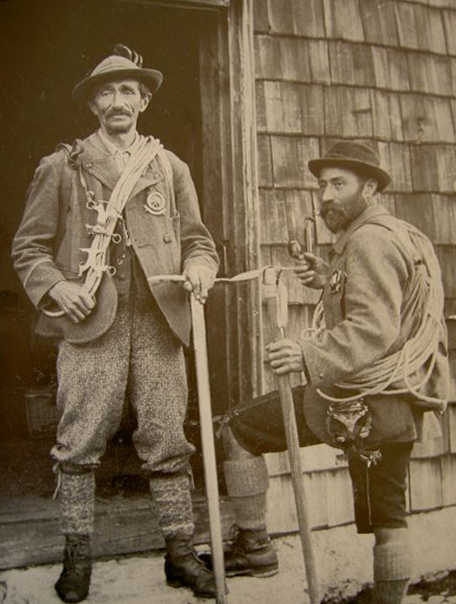
(C/1680 V1, also called the Great Comet of 1680, Kirch’s Comet, and Newton’s Comet, was the first comet discovered by telescope.
It was discovered by Gottfried Kirch (1639 – 1710).
It was one of the brightest comets of the 17th century.
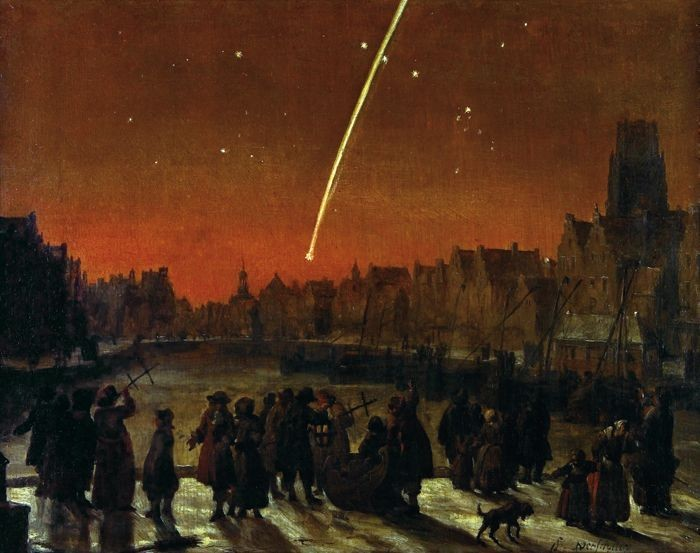
It became one of the brightest comets of the 17th century – reputedly visible even in daytime – and was noted for its spectacularly long tail.
Passing 0.42 au – (An astronomical unit (au) is is a unit of length, roughly the distance from Earth to the Sun and equal to 150 million kilometres / 93 million miles) or 8.3 light minutes.) – from Earth on 30 November 1680, it sped around an extremely close perihelion (the nearest point respectively of a body’s direct orbit around the Sun) of 0.0062 au (930,000 km / 580,000 miles) on 18 December 1680, reaching its peak brightness on 29 December as it swung outward.
It was last observed on 19 March 1681.
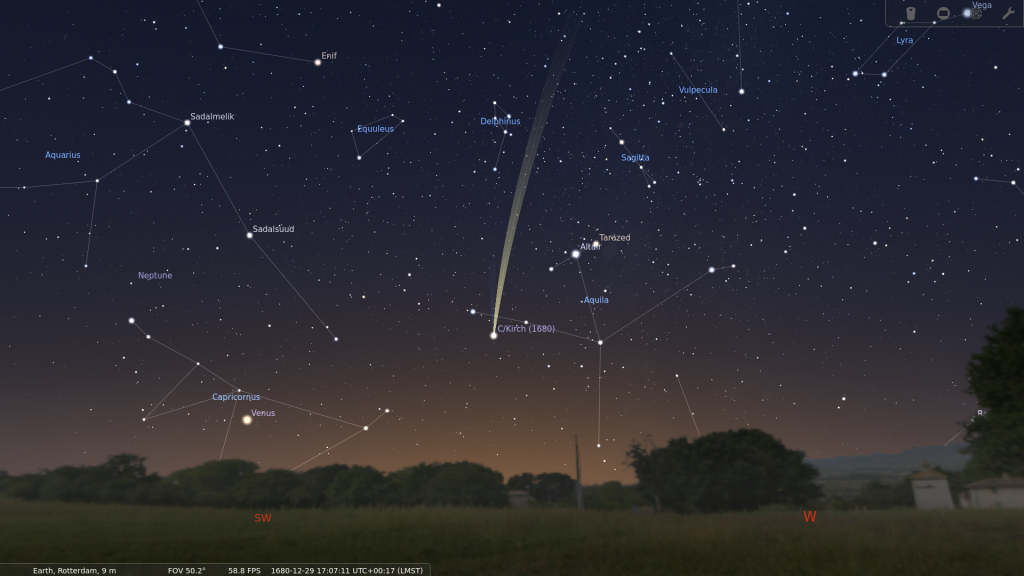
By 1680, the telescope was an instrument that had been used by astronomers for 70 years, but comets had only been spotted with the naked eye.
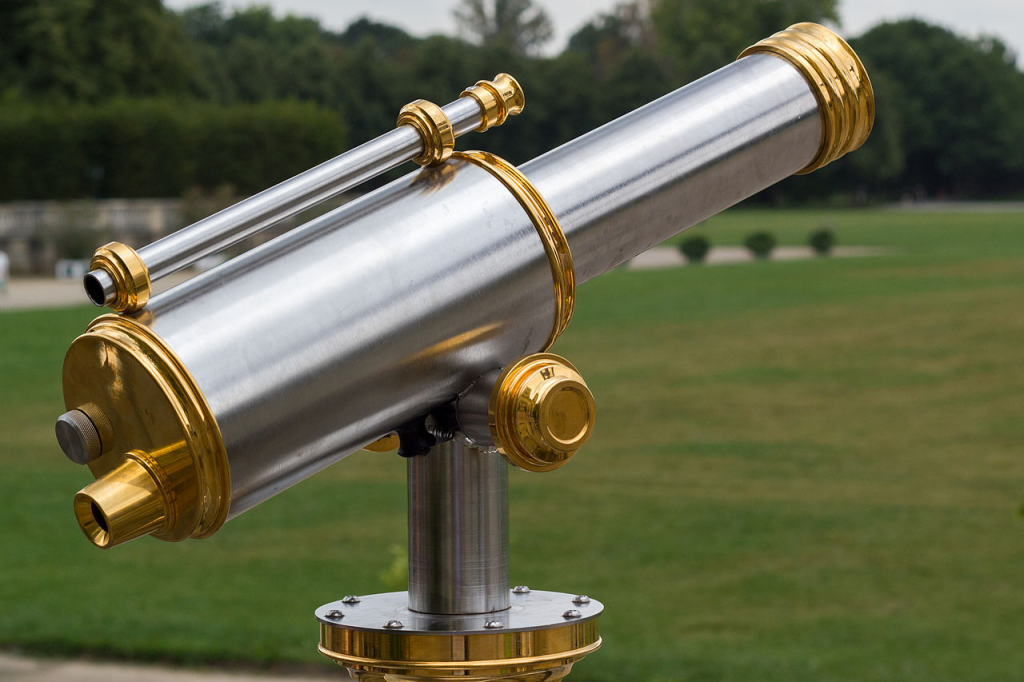
This changed when Gottfried Kirch observed the Moon and Mars with a telescope in the early morning of 14 November 1680 in Cobourg.


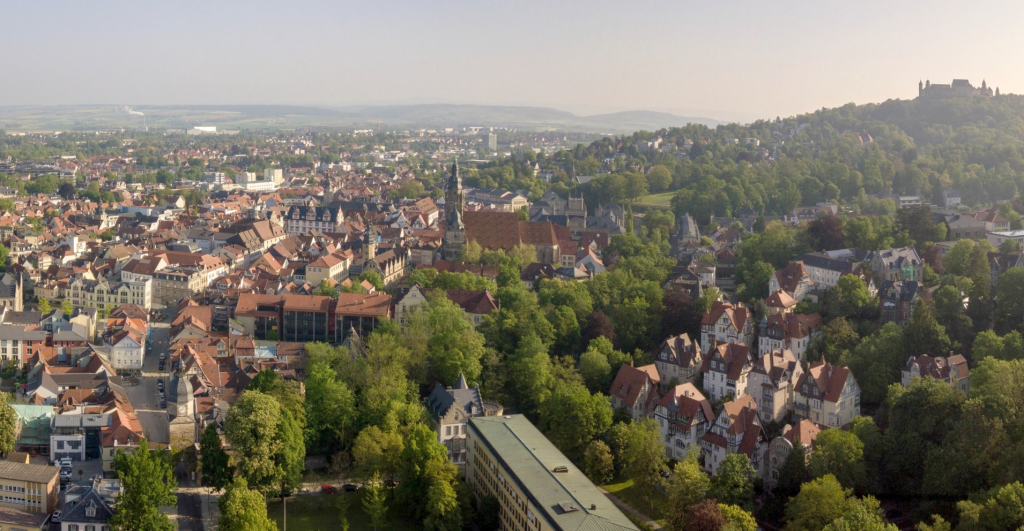
He saw a star next to the Moon that was not listed in Tycho Brahe’s (1546 – 1601) star catalogue.
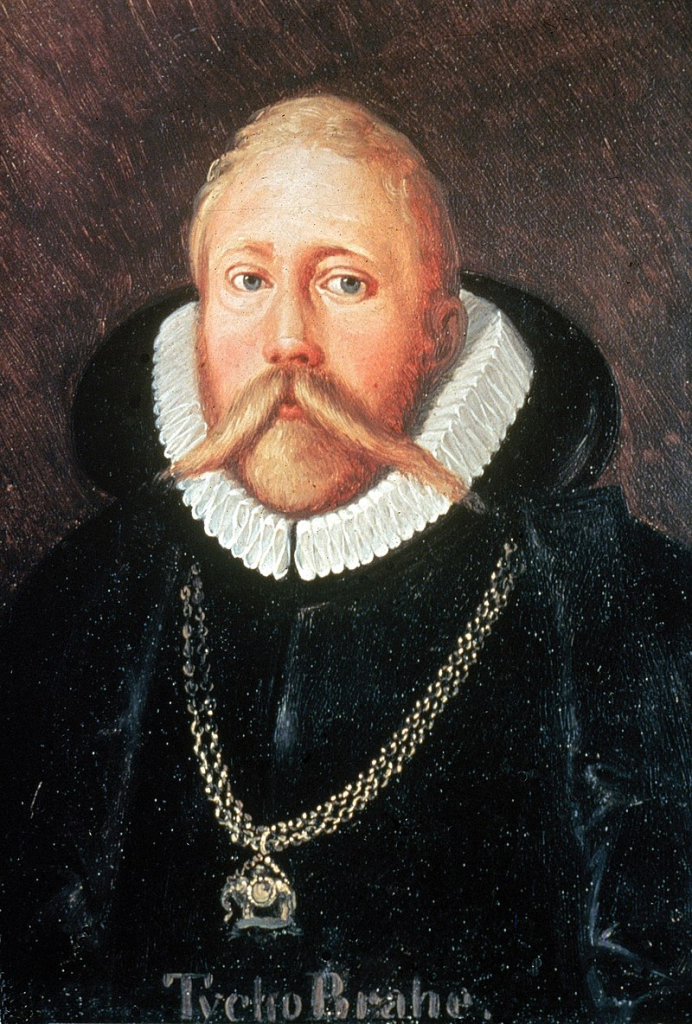
As Kirch moved his telescope to pinpoint the position of this star, he encountered what he later described as “a kind of nebulous speck of unusual appearance” which he took to represent either “a nebulous star resembling that in Andromeda’s belt” or thought it was a comet.

Indeed, his “nebulous star” was a new comet, and Kirch’s accidental discovery went down in history as the first comet discovery using a telescope.
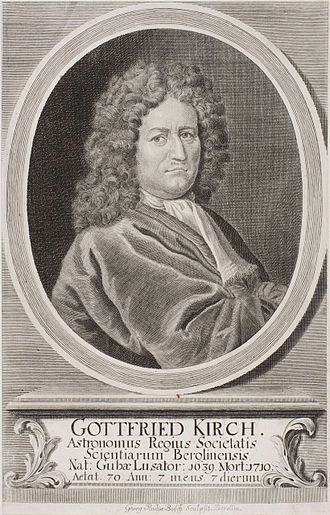
At the time of its discovery, the comet had not yet developed a tail and was not yet visible to the naked eye.
Two days later the comet had changed position and a faint tail of ½° length could be seen in the telescope.
The comet rapidly increased in brightness and was seen in England on the morning of 21 November.
By the end of November it had developed into a conspicuous phenomenon.
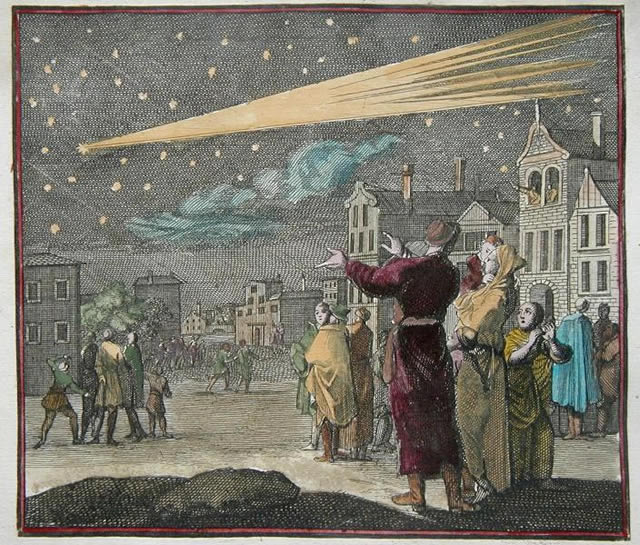
According to JD Ponthio, a tail of 15° longitude was observed on 27 November in Rome.
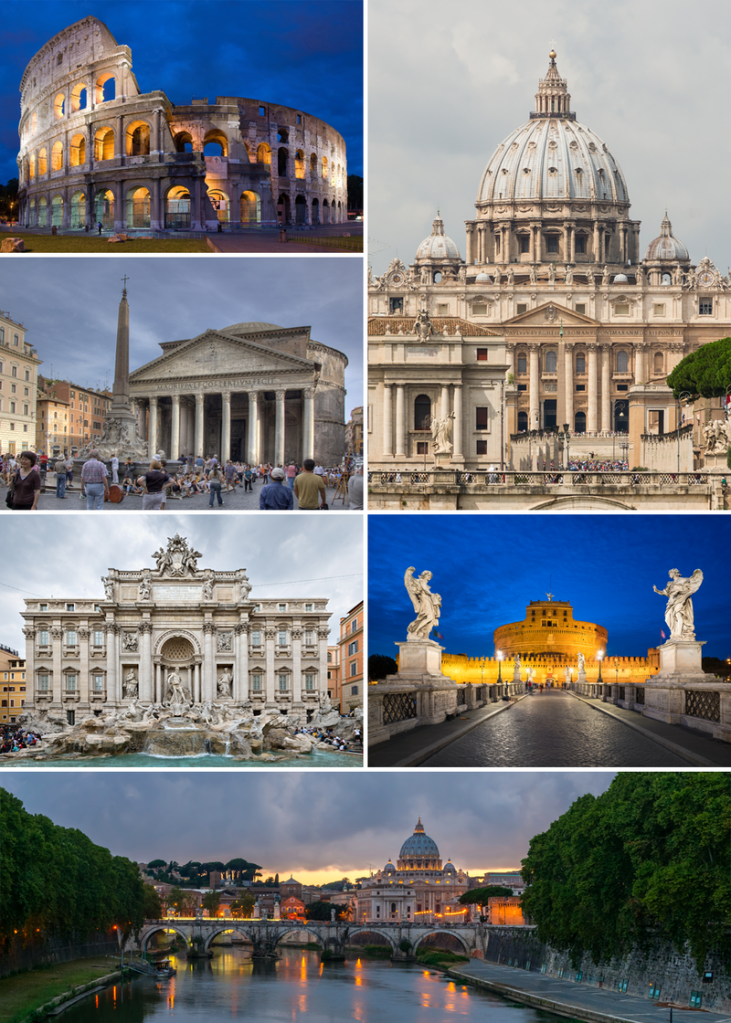
Two days later, Arthur Storer in Maryland estimated the tail between 15° and 20°.
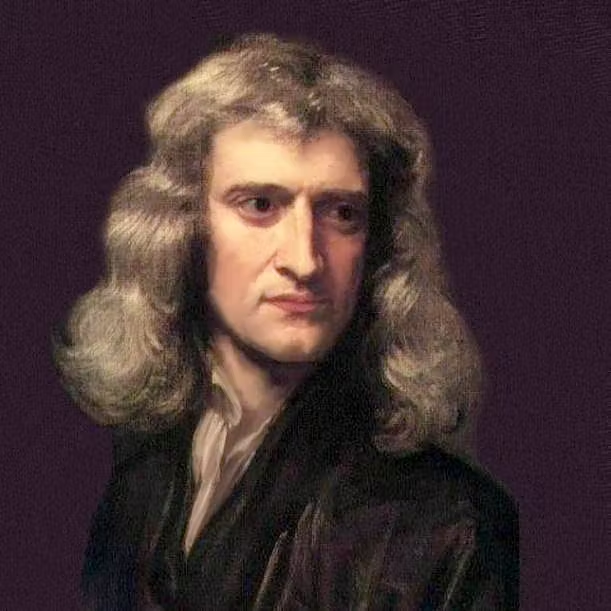
In April 1681, Storer described the comet as follows:
“It was a very great amazement to many and likewise to myself to see such a long bright stream then in the form like a sword streaming from the horizon about 30 degrees in altitude.”
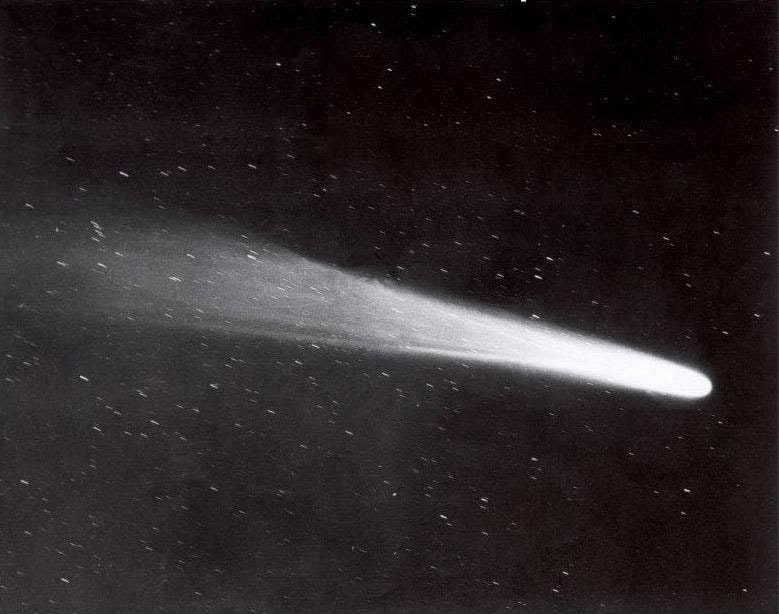
By the end of the month, increasing tail lengths, up to 36°, were being reported and the comet appeared “bigger” than a 1st magnitude star.
At the beginning of December, the comet was getting closer and closer to the Sun.
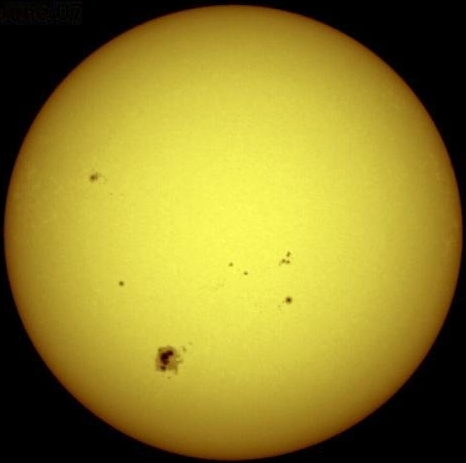
The two small sunspots in the middle are about the same diameter as our planet Earth.
Johannes Hevelius (1611 – 1687) observed the comet from Danzig (Poland) on the morning of 2 December and for the next two days.

Soon after, however, the comet could no longer be observed due to its proximity to the Sun.
Hevelius already suspected that after passing the Sun it would become visible again.
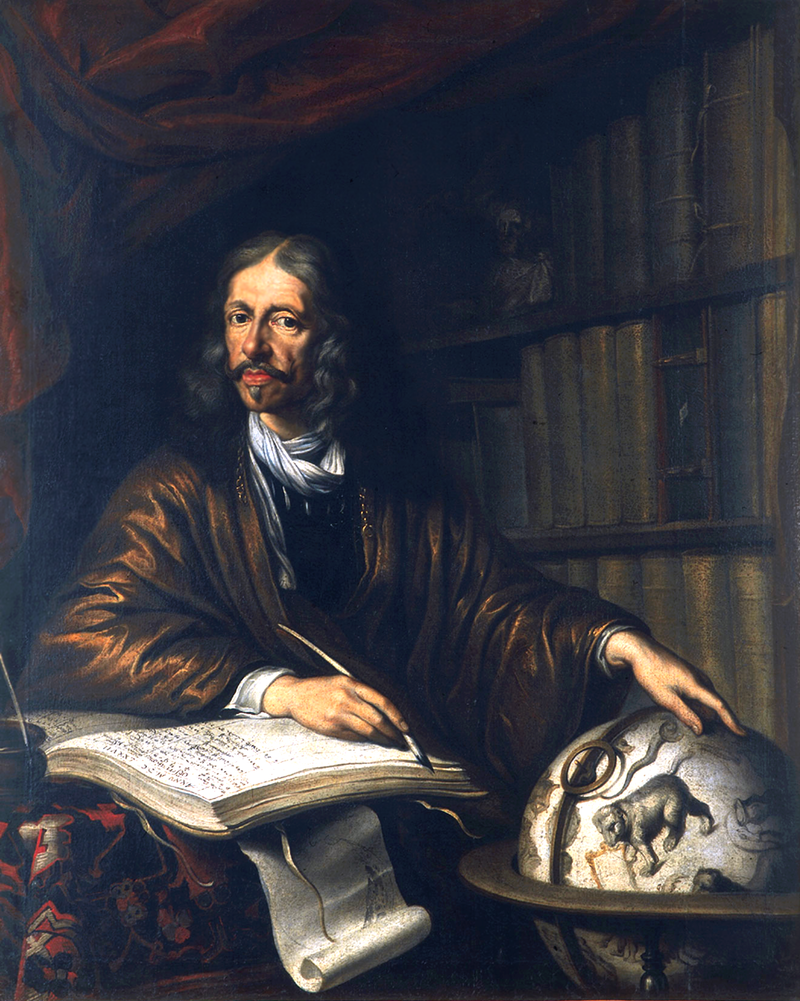
On 18 December, the comet passed its closest point to the Sun (perihelion) (as seen from Earth, it passed directly behind the solar disk for three quarters of an hour starting at about 11:30 UT (Universal Time / Greenwich Observatory).
From 20 December, it could be observed in the evening sky in the southwest as a great spectacle, its tail stretched almost to the zenith (the highest point in the sky observable with the naked eye from the ground).
The comet’s beauty was enhanced by a shimmering golden tail, it was reported.
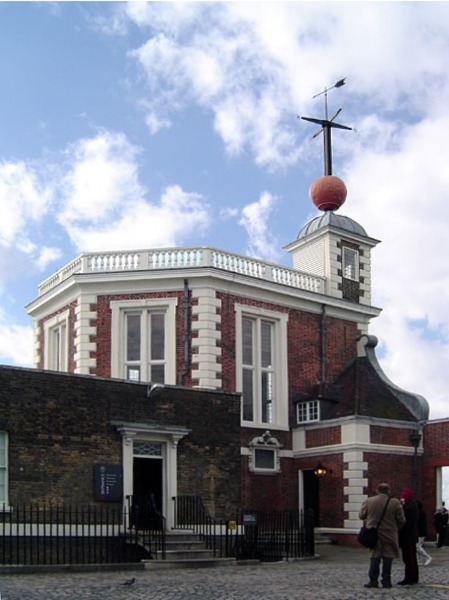
John Flamsteed (1646 – 1719) reported on 21 December 21 a beam of light the width of the full moon extending perpendicularly from the horizon.
Ponthio estimated the tail length on 22 December to be 70° with a latitude of 3° at its tip.
The comet’s head was as bright as a first-magnitude star, and the tail so long that it could be seen on the northwestern horizon for five hours after the head set.
Hevelius saw the comet again on the evening of 24 December, but he could not take exact measurements because his observatory, instruments, and books had been destroyed in a fire the year before.
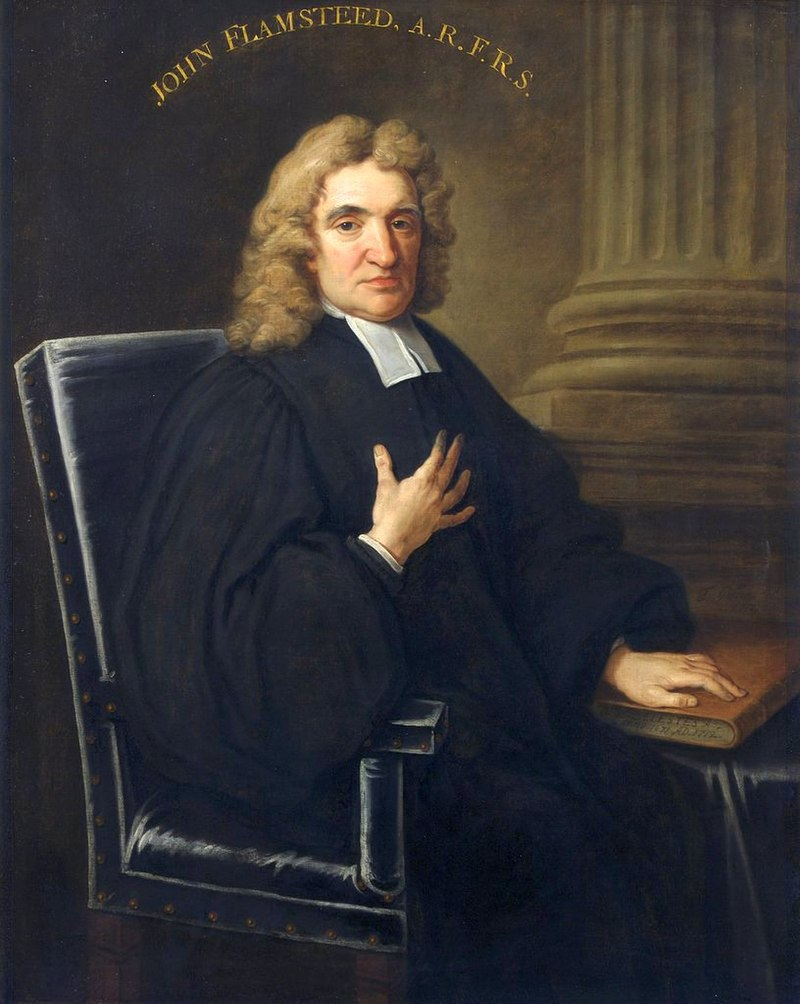
In France, Jean de Fontaney (1643 – 1710) used a telescope to observe striking changes in the comet’s nucleus, possibly jets of dust and gas or fragments detaching from the nucleus.
Robert Hooke (1635 – 1703) described something similar in England, observing a tail of 90° longitude on 28 December, extending over half the firmament (the night sky).

In January 1681, the comet showed the first signs of fading, but the tail remained very long and conspicuous:
According to Flamsteed, the head was dimmer than a 3rd mag star on 5 January, but the tail still measured 55° three nights later.
Kirch also reported a (very faint) anti-tail pointing toward the Sun on 7 January, but no one else has confirmed this observation.
Isaac Newton saw the comet on 15 January with its 40° curved tail.
Flamsteed on January 19 compared the brightness of the comet’s head to that of a 5th magnitude star.
In early February, the comet began to slip out of sight for many observers, with Flamsteed likening its head to a 7th magnitude star on 4 February, but its tail was still visible to the naked eye.
Newton estimated it at 12° longitude on 6 February with good visibility.
The comet was seen again by Flamsteed, Hevelius and Ponthio on 17 February.
In March it was only tracked telescopically by Newton.
The last time he saw it, barely recognizable, was on March 19, just before midnight, just above the horizon.
The comet reached magnitude 1–2 on 29 December 1680.
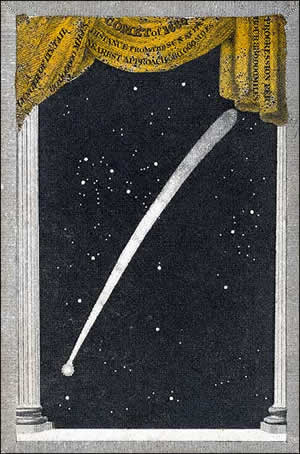
Already on the morning of 20 November 1680, the comet was seen with the naked eye from the Philippines.

Three days later a white “broom star” with a tail of more than 1° length was reported in China.
In China, it could no longer be seen from 7 December because it had migrated too close to the Sun.

Shortly before passing the Sun, however, the comet is said to have been seen in the daytime sky in the Philippines on 18 December (this report is doubtful), as well as (more credibly) on the afternoon of 19 December near New York.

The Chinese saw it again on 21 December in the evening sky with a tail over 60° long.
On 8 January 1681, a tail of 75° longitude was observed in the Philippines.
The comet was last seen there on 14 February.

The Tyrolean Jesuit Eusebio Francisco Kino recorded the comet’s apparent trajectory during his sea voyage to Mexico.
He began his observations while still in Spain late in 1680, because of a late departure.
Upon his arrival in Mexico City, he published Exposición astronómica de el cometa, in which he presented his observations.
Kino’s publication was thus one of the first scientific investigations to come out in the New World.
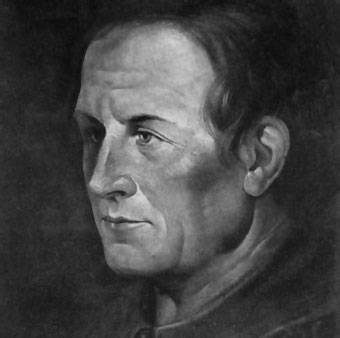
There was an argument with the Mexican polymath and astronomer Carlos de Siguenza y Góngora (1645 – 1700), who in a manifesto strongly criticized the superstition associated with the appearance of the comet.
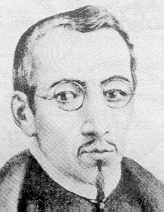
Another Jesuit who observed and reported on the comet in Mexico was Croatian Ivan Ratkaj (1647 – 1683).
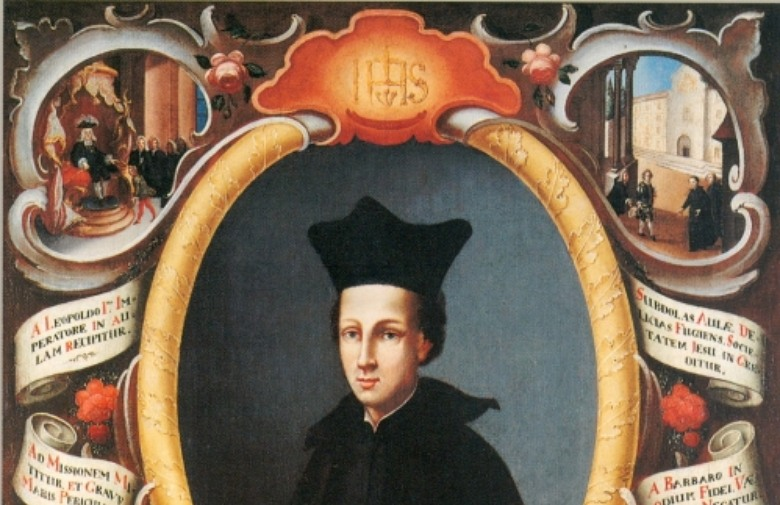
The Jesuit Claude Chauchetière described the concern of the population by the appearance of the comet near Montréal.
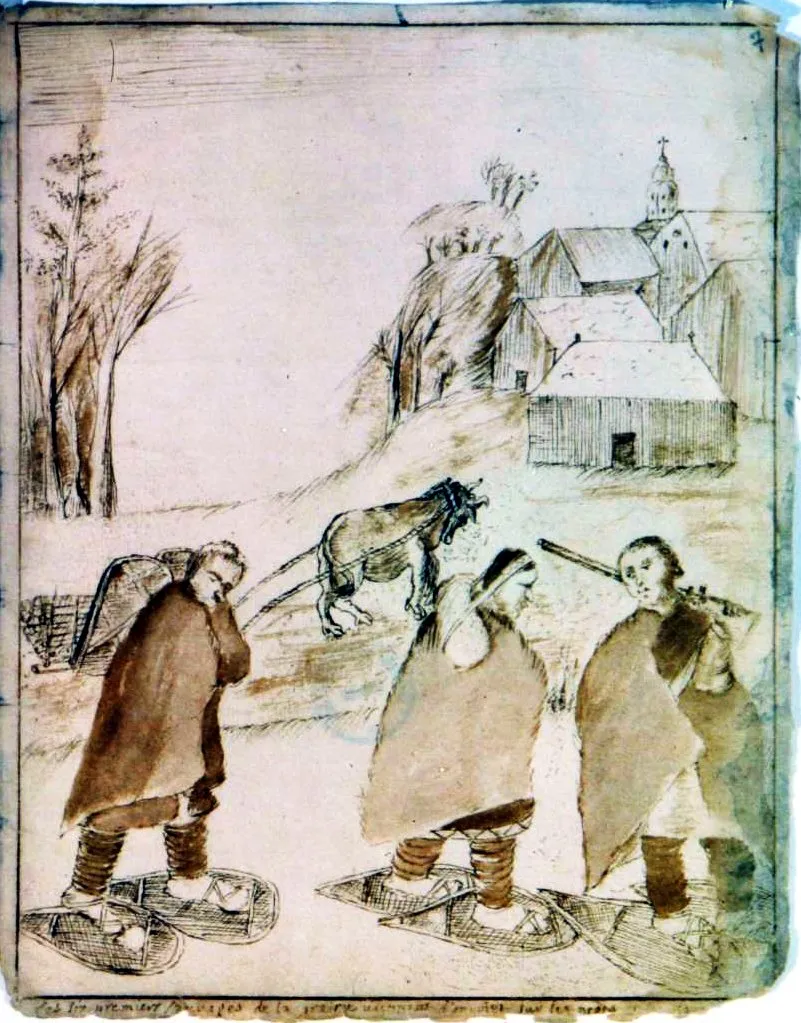
The comet had a tremendous impact on the public.
A flood of writings and pamphlets, mostly inspired by a religiously veiled fear of comets, were still spreading during or shortly after its appearance.
In numerous pictorial representations, the comet is mostly prominently depicted above city silhouettes, as it is admired by huge crowds of people who have gathered.
Crowds of people stood on the hills in front of the walls of Nuremberg and marvelled at the event, some with telescopes.
The Bible refers to God’s forbearance with sinful mankind and His call to repentance in the face of “heavenly torch, rod, and sword“.
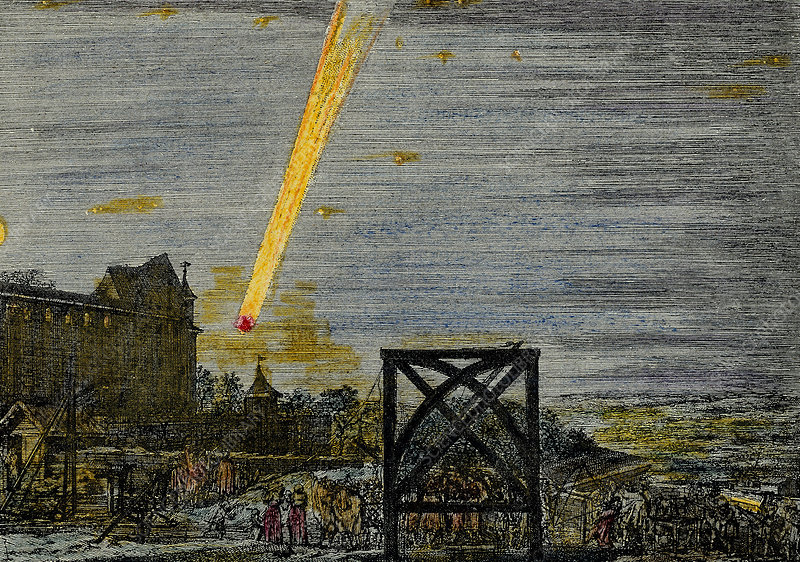
Compared to the comets of previous centuries, the beginning of the Age of Enlightenment (1700) had brought about a marked change with the advent of exact science, in that even writings for the common people referred to the astronomical facts concerning the comet.

However, superstition had not yet disappeared completely and most writings could not avoid going into the “meaning” of the “heavenly sign“.
Like many of its predecessors, this tailed star was also seen as a sign of the approaching end of the world, or at least as a warning from God.
Penitential services were held in churches.

Even in Newton’s time, the comet was associated by William Whiston (1667 – 1752) with a large number of mythological and historical catastrophes, each of which should have separated by 575 years:
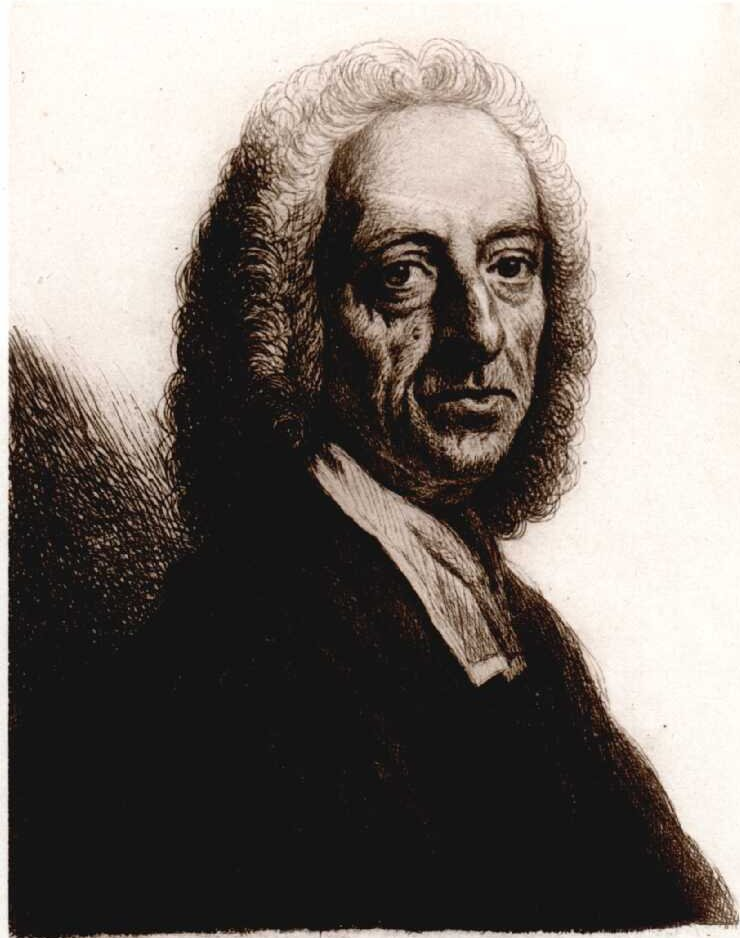
- the Deluge (2916 BCE)

- the inundation of Ogygos (1767 BCE)

- the start of the Trojan War (1260 – 1180 BCE) (thought to be 1192 BCE)
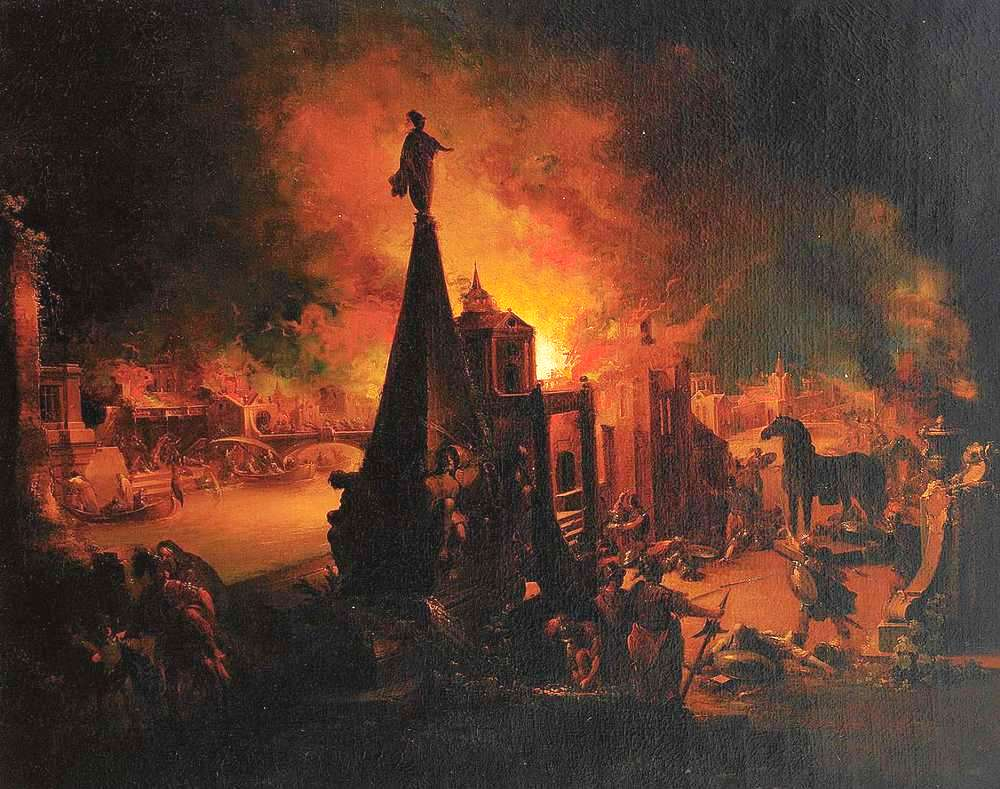
- the destruction of Nineveh (617 BCE)
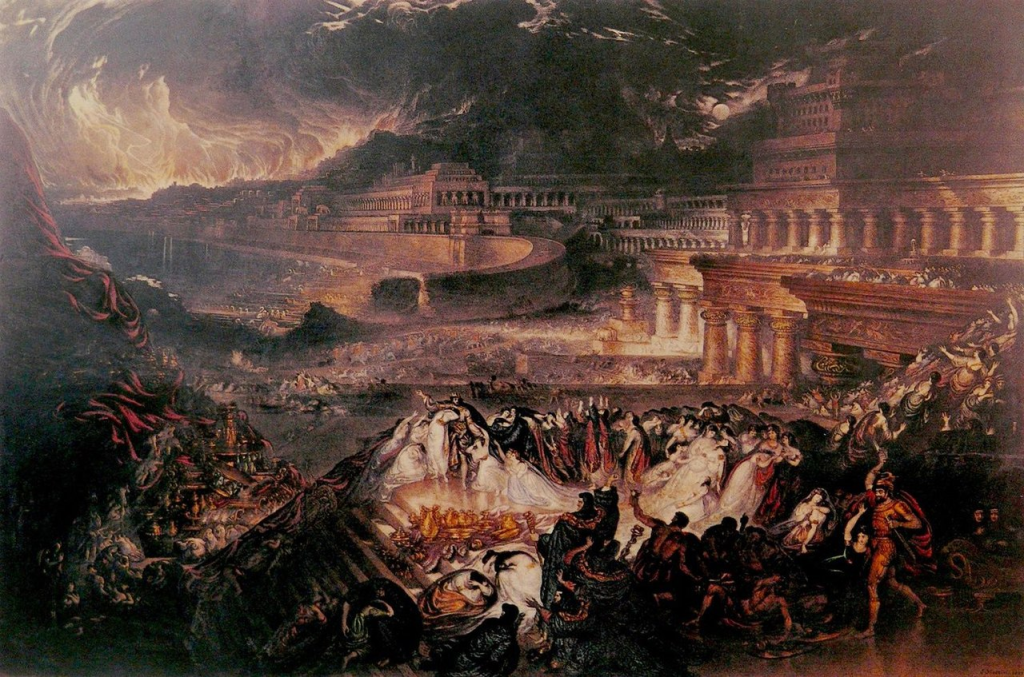
- the year Julius Caesar (100 – 44 BCE) died (thought to be 43 BCE)
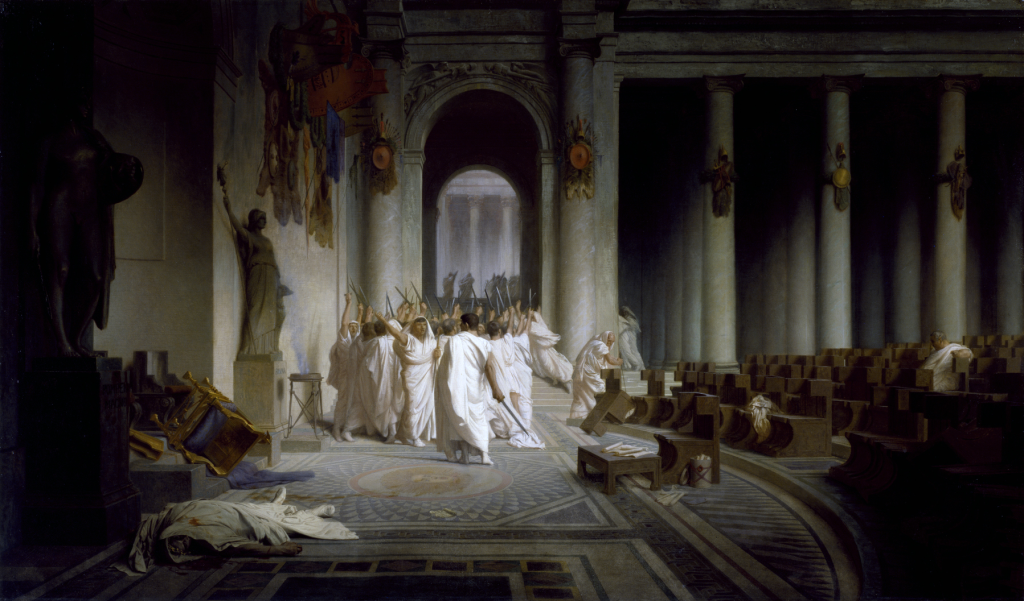
- the beginning of the reign of Justinian I (482 – 565) (531) with many wars, earthquakes and plagues

- the beginning of the Crusades (1095 – 1291) (thought to be 1106)
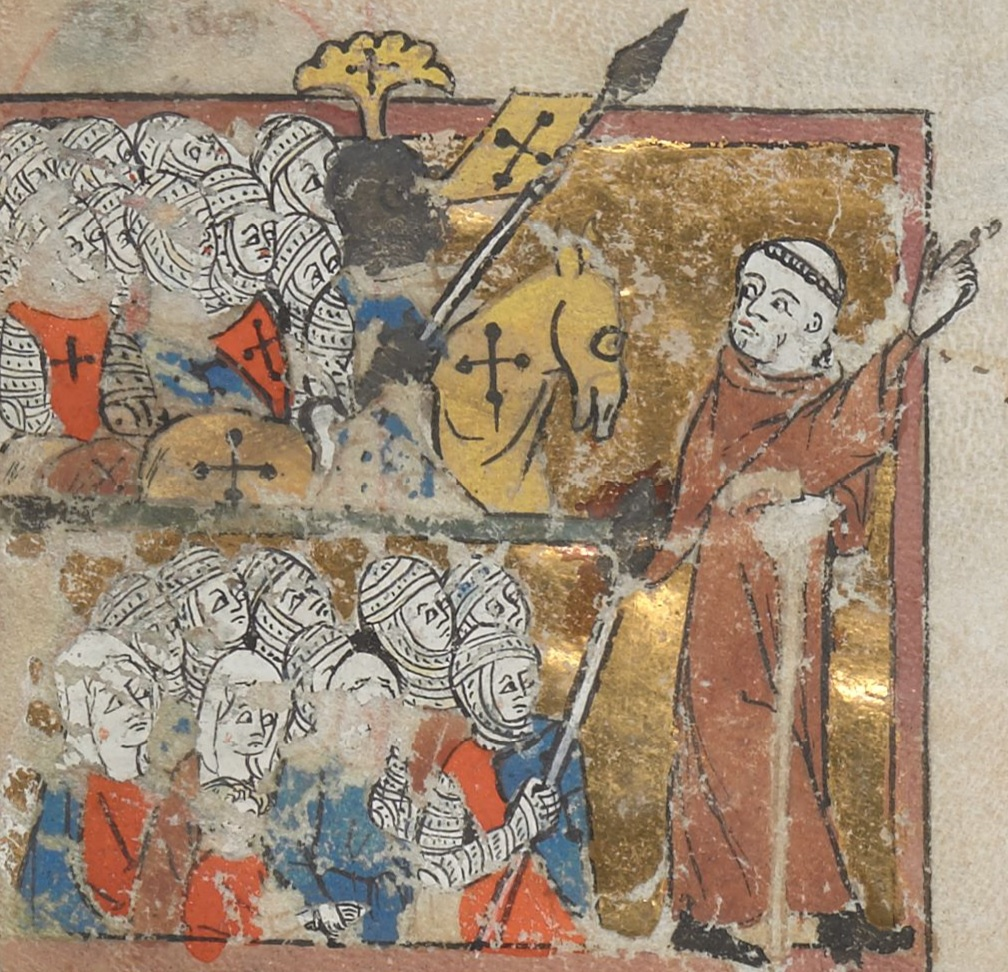
- the apparition in the year 1680
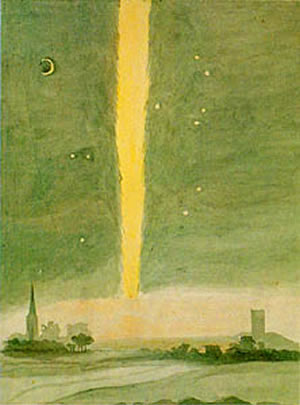
In the year 2255 the end of the occidental culture (i.e. Western civilization) was to be imminent.

This compilation was based on Edmond Halley’s (1656 – 1742) inaccurate calculation of the comet’s orbit with an arbitrarily assumed orbital period of 575 years – (Halley suspected a connection between the comet of 1106 and this one.) – and was published in the 19th century by D’Alembert (1717 – 1783) in the Encyclopédie française and rumoured in almanacs.

It was Edmund Halley, famous for predicting the return of the comet that bears his name, who three centuries ago found a way to measure the distance to the Sun and to the planet Venus.
He knew that Venus would very rarely, every 121 years, pass directly between the Earth and the Sun.
The apparent position of Venus, relative to the disc of the Sun behind it, is shifted depending on where you are on Earth.
How different that shift is depends on the distance from both Venus and the Sun to the Earth.
This rare event, the transit of Venus, occurred again on 8 June 2004.
It was knowing this fundamental distance from the Earth to the Sun that helped us find the true scale of the entire Solar System for the first time.
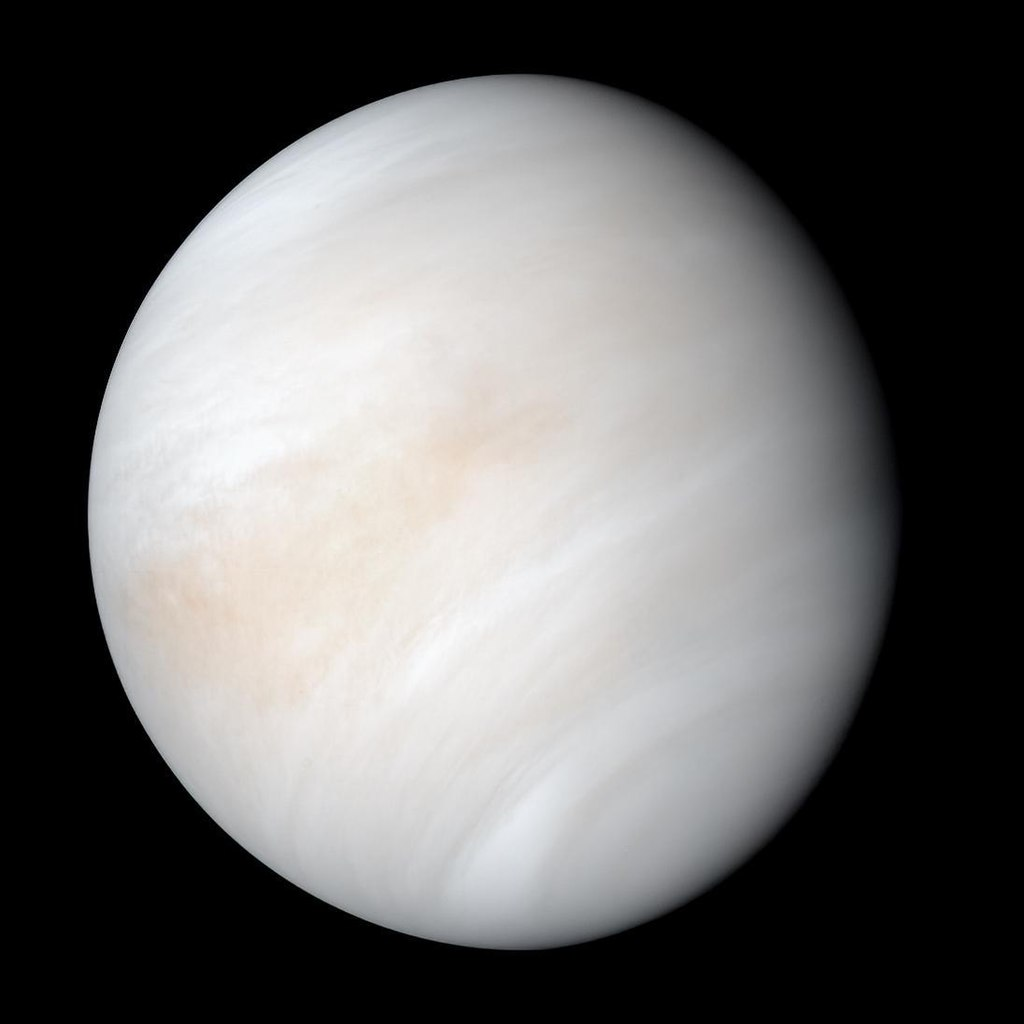
This nonsense only came to an end in 1816 by Johann Franz Encke’s (1791 – 1865) accurate calculations of the orbital elements of the comet of 1680 were made, which revealed that its orbital period is not 575, but almost 10,000 years.

Numerous astronomers watched the mighty tail star with great care.
The astronomer Johannes Kepler (1571 – 1830), who published the laws according to which planets move in elliptical orbits around the Sun in 1609, was still of the opinion that comets move in straight orbits through the universe.

However, Giovanni Alfonso Borelli (1608 – 1679) in 1665 suspected parabolic or elliptical orbits after his observation of the comet of 1664.
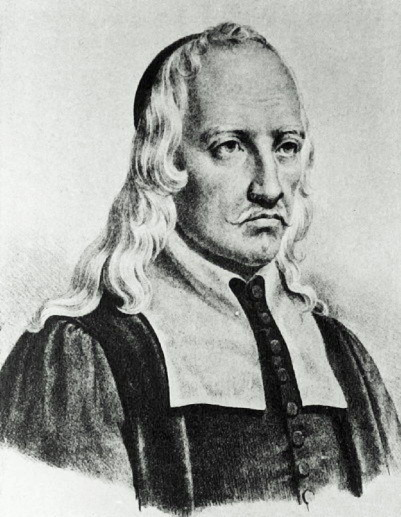
In his Cometographia, published in 1668, Hevelius also took the view that comets move on orbits that are curved towards the Sun, but he did not yet think that these orbits orbited the Sun.
Giovanni Domenico Cassini (1625 – 1712) also took the position in a paper from 1681 that the observations from November to early December were a different comet than the one observed from late December to March.
He couldn’t reconcile the idea of a strongly curved comet’s path.
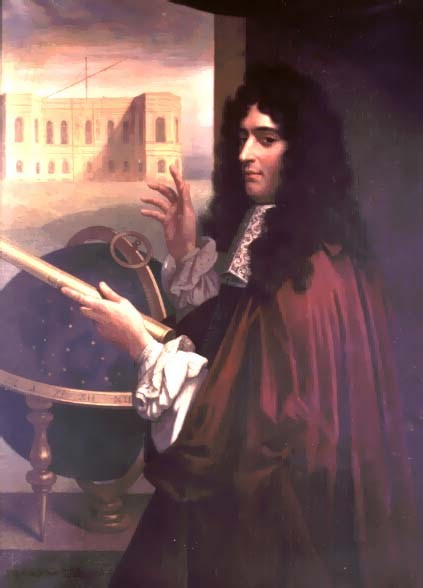
Georg Samuel Dörffel (1643 – 1688), a cleric from Plauen (Germany), who had observed the comet from 2 to 4 December and then again from 28 December to 10 February, first raised the question of whether the orbits of the comets were not parabolas, their focus coinciding with the centre of the Sun.
He was prompted to do so by his observations of the 1680 comet moving first towards and then away from the Sun.
He recorded his thoughts in writing in German.
Had he written his work in Latin, it might have received more attention, perhaps also from Newton, who was also studying comets.

Namely, Newton came to the same thought when developing his general law of gravitation.
He came to the conclusion that the orbits of comets, like the orbits of the planets, must be ellipses with the sun at one of their focal points – not, however, almost circular ellipses, but extremely elongated ones, which means that the comets are not constantly visible, but only when they pass through the part of their orbit that is close to the sun.
But this part, added Newton, could also be approximated by a parabola, which differs little from an eccentric ellipse near the focus.
Newton attempted to test his hypothesis with a real case.
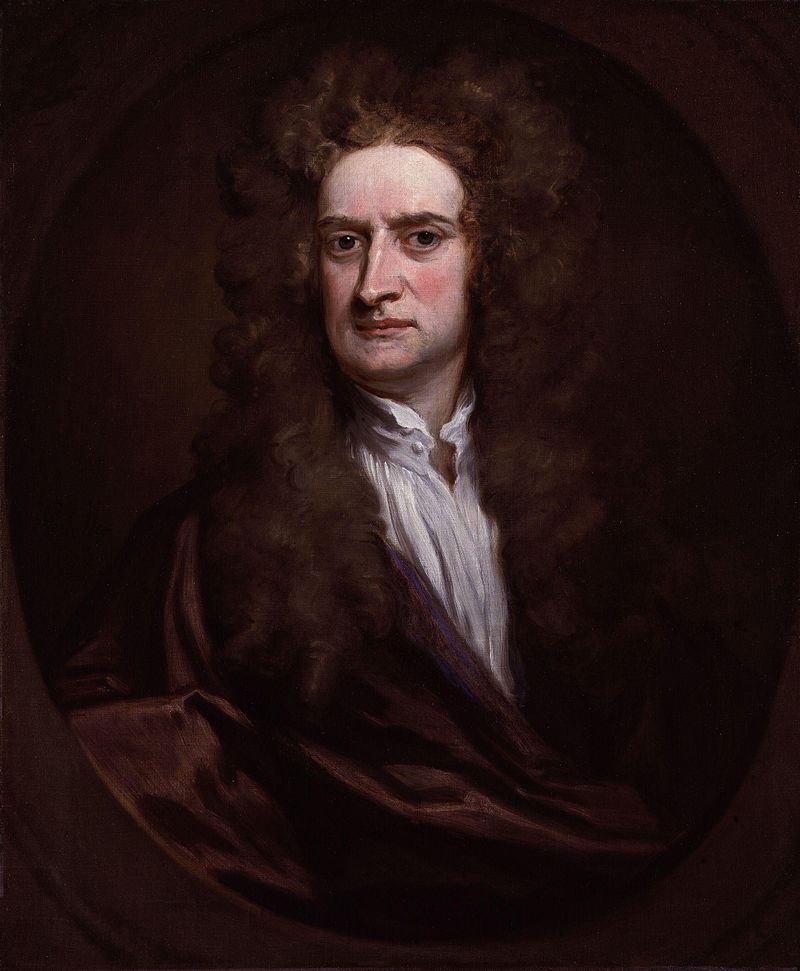
He showed how to calculate a parabolic trajectory of a comet from three observational positions.
As an example, he chose three points from Flamsteed’s observations of the comet in 1680 and calculated a parabolic path from them, which matched all other observations so perfectly that there was no longer any doubt that the true path of the comets had thus been discovered.
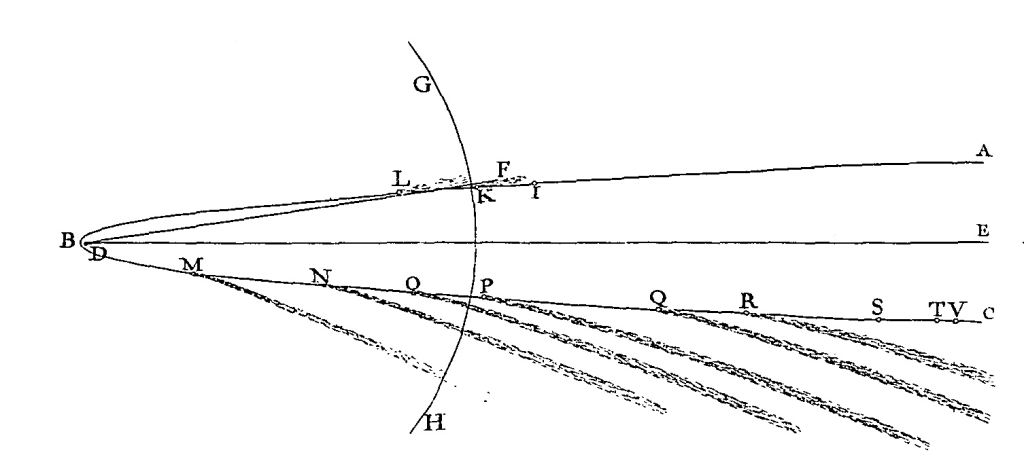
Newton published his discovery in the Philosophiae Naturalis Principia Mathematica, published in 1687.
This also disproved the popular contemporary notion that the 1680 comet was two different comets, one moving toward the Sun in November and another moving away from the Sun beginning in December.

Numerous observers, including Johann Jacob Zimmermann (1642 – 1693) from Nuremberg, provided precise position determinations for this comet from mid-November 1680 to February 1681, so that Newton, Halley, Leonhard Euler (1707 – 1783), Alexandre Guy Pingré (1711 – 1796), Johann Franz Encke (1791 – 1865) and Jakob Philipp Wolfers (1803 – 1878) could calculate again and again similar orbital elements by the middle of the 19th century, though they resulted in very different orbital times.

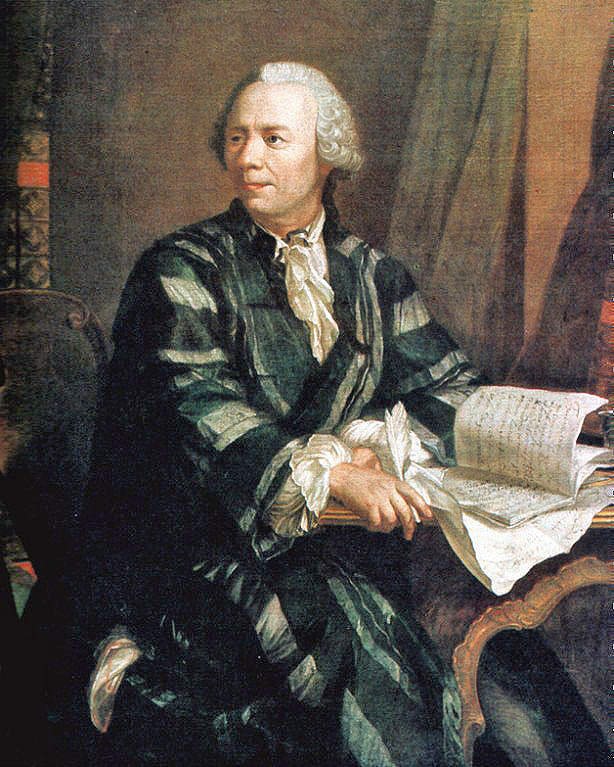
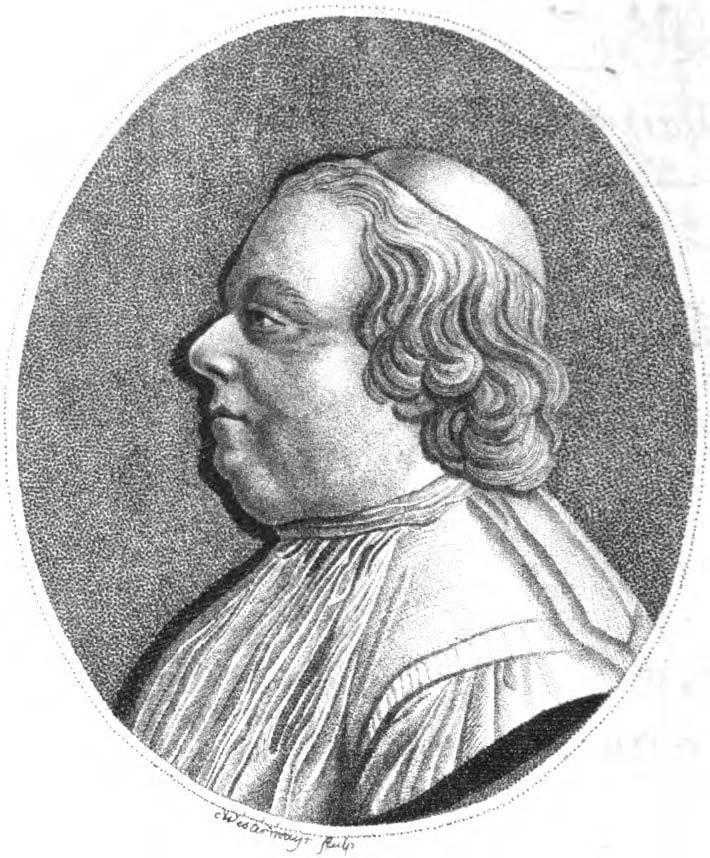

From 30 observations over 125 days, Encke was able to determine an elliptical orbit for the comet, which is inclined by around 61° to the ecliptic (the apparent orbit of the Sun through the fixed sky as seen from Earth over the course of a year).
Its orbit is thus at a steep angle to the orbital planes of the planets.
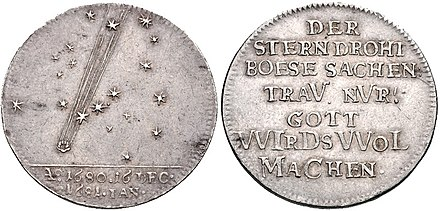
At the point closest to the sun (perihelion), which the comet passed on 18 December 1680, it was only about 930,000 km from the centre of the Sun, which means it was only about ⅓ of the Sun’s radius above the Sun’s surface.
Although the comet was thus undeniably a sun-stroker, it is not a member of the Kreutz group – (after the astronomer Heinrich Kreutz (1854 – 1907), who was the first to recognize the group membership of a group of comets, that come very close to the Sun during their perihelion, which form a subgroup of the sungrazers (sunstrokers or sunscrapers), believed to be fragments of a much larger comet that broke up while orbiting the Sun several centuries ago.) – or any of the other major sun-stroker groups.
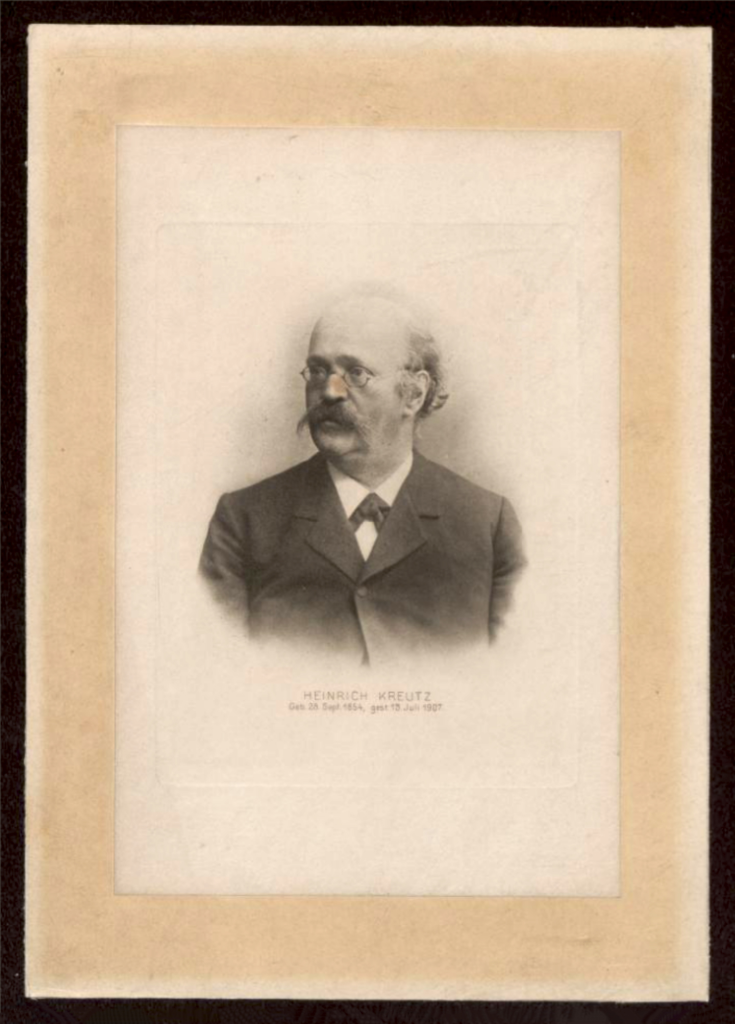
However, Comet C/2012 S1, which dissipated just before reaching perihelion, had similar orbital elements to Comet 1680 and may have a common origin with it.
During its passage through the inner Solar System, the comet also came relatively close to many planets on one or more occasions.
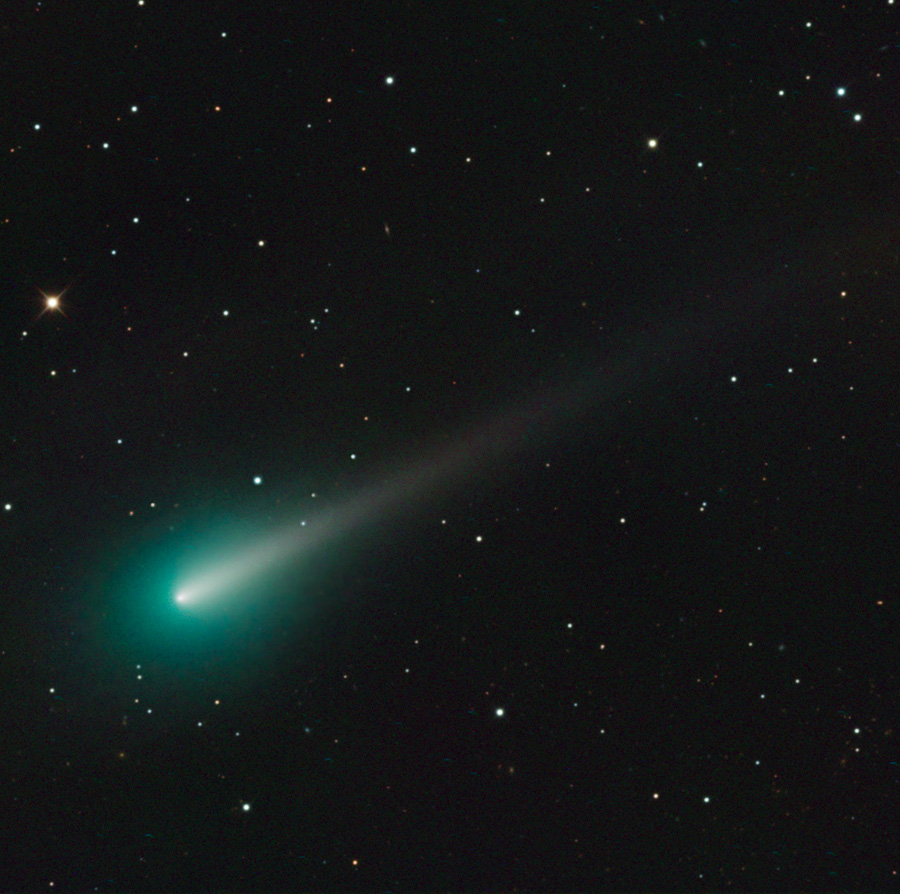
The two approaches to Earth correspond to distances of about 63 million km and 73 million km, respectively.
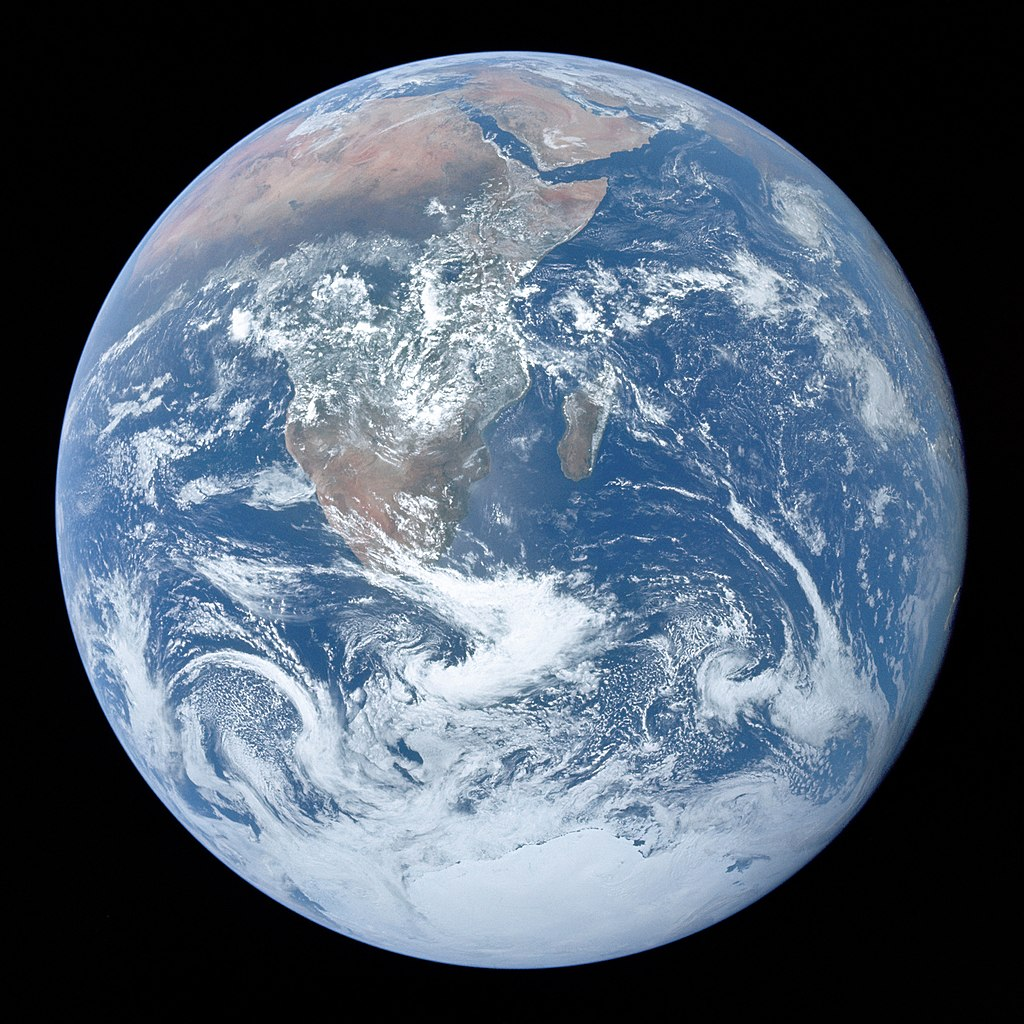
Although the comet came relatively close to the large planets Saturn and Jupiter several times, its orbital shape remained almost unchanged.

According to Encke’s orbital elements, as given in the JPL Small-Body Database, and without accounting for non-gravitional forces on the comet, its orbit would originally have had an eccentricity of about 0.999987 and a semimajor axis of about 465 AU, so that its orbital period would have been around 10,000 years.
Passing through the inner Solar System would have reduced its orbital eccentricity slightly to about 0.999985 and increased its semimajor axis to about 477 AU, increasing its orbital period to about 10,400 years.
In view of the relatively uncertain orbital parameters, however, all the data given should only be regarded as approximate values.
Encke himself assumed a very large degree of uncertainty for his calculation of the orbital period.
As of February 2019, the comet was about 257 au (38 billion km) from the Sun.
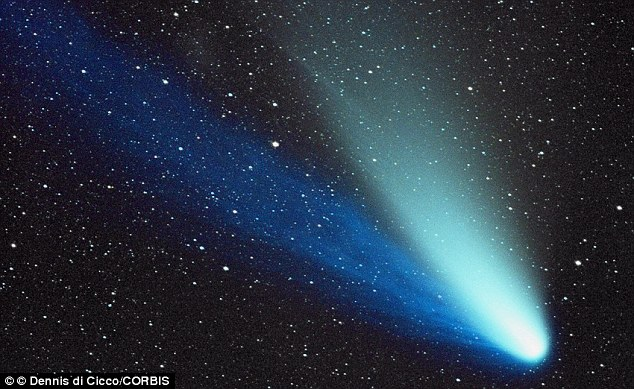
Basil Ringrose (1653 – 1683) was serving under buccaneer Captain Bartholomew Sharpe (1650 – 1702) and made the following observation shortly before raiding the Spanish port city of Coquimbo, Chile:


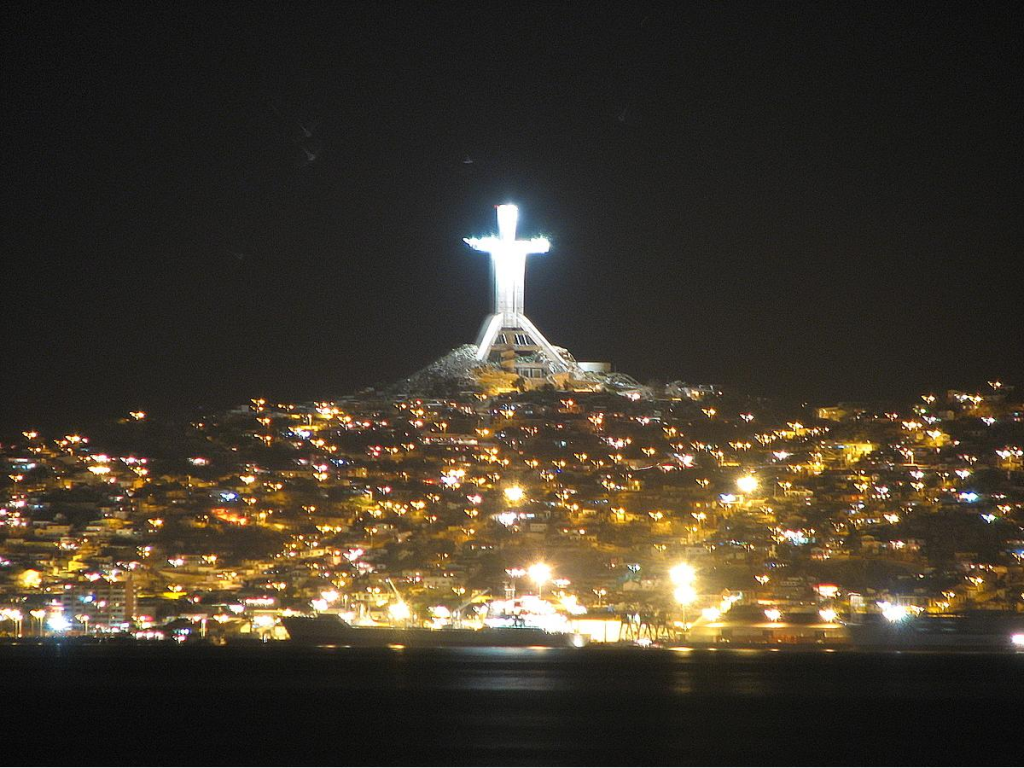
Friday 19 November 1680
This morning about an hour before day we observed a comet to appear a degree N from the bright in Libra.
The body thereof seemed dull, and its tail extended itself 18 or 20 degrees in length, being of a pale colour and pointing directly NNW.
Our prisoners hereupon reported to us that the Spaniards had seen very strange sights, both at Lima, the capital city of Peru, Guayaquil, and other places, much about the time of our coming into the South Seas.

The appearance of the comet inspired Fontenelle (1657 – 1757) to write a one-act comedy, La Comète , performed at the Comédie Française in 1681, denouncing superstitions linked to astronomical events.
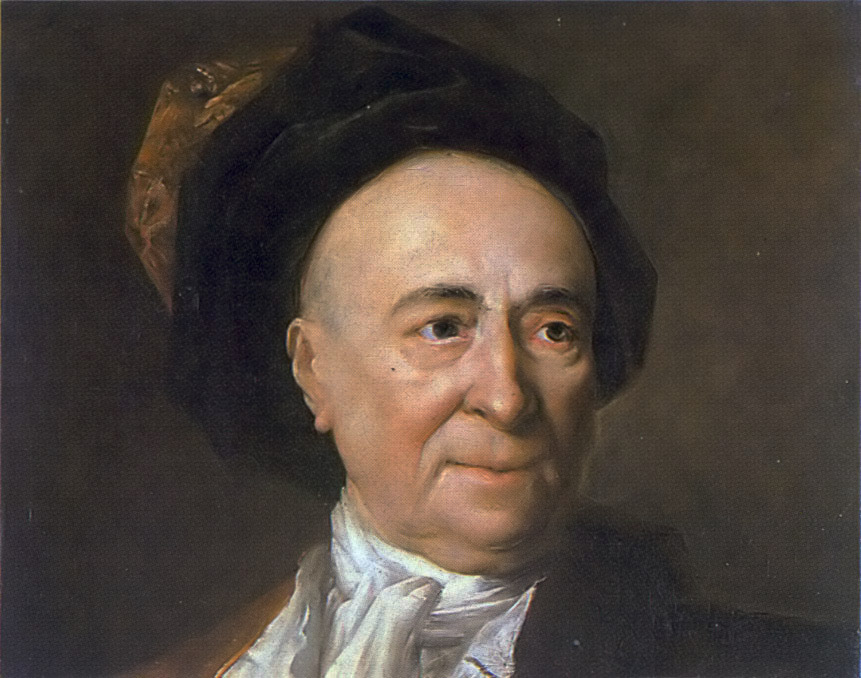
On 2 January 1681, Madame de Sévigné (1626 – 1696) wrote from Paris:
“We have here a comet which is also well extended.
It has the most beautiful tail it is possible to see.
All the great personages are alarmed and believe that the sky well occupied with their loss gives warnings by this comet.”
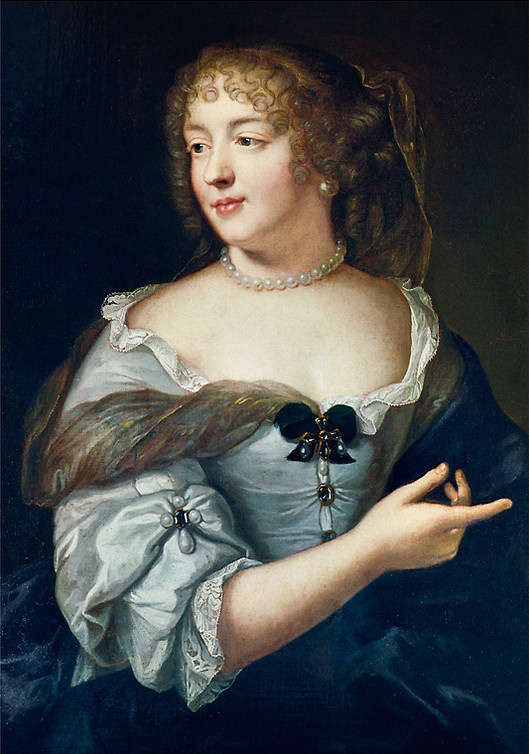
The enlightened Pierre Bayle (1647 – 1706) published his first book Lettre sur la comete de 1680 (“Letter on the Comet of 1680”) in 1682, which was expanded in 1683 as Pensées diverses sur la comete de 1680 (“Different Thoughts on the Comet of 1680”).
There he contradicted the superstitious beliefs associated with comets and promoted the idea that all knowledge must be subject to constant critical scrutiny.
Bayle defended the Christian faith, but at the same time designed the basis of a non-religious morality or ethics, whereby he assumed – contrary to the then generally held opinion – that an atheist did not necessarily have to act immorally.
Bayle elaborates a critique of superstition and tradition, criticizing the habit of the time of beginning by extrapolating on a fact before having studied it in an attempt to understand it.
Thus, the comet arrives at the same time as terrestrial misfortunes, therefore it is the cause of them, or even announces them.
To this Bayle replies that if the comet were a sign of impending misfortune or that it simply caused them by the fact of appearing in the sky, that would amount to saying that the man who comes out in front of his door is the cause of what so many people passed in the street where he lives.)

Like Wetter’s men, the wife and I ascended Säntis to look up at the sky.
Our adventure was advertised as a chance to view the splendour of the cosmos, an explanation of the constellations in all their glory.
Ascend at sunset, fancy dinner in the Säntis Restaurant, out to the Observation Desk to look up at the stars.
Sounded promising.
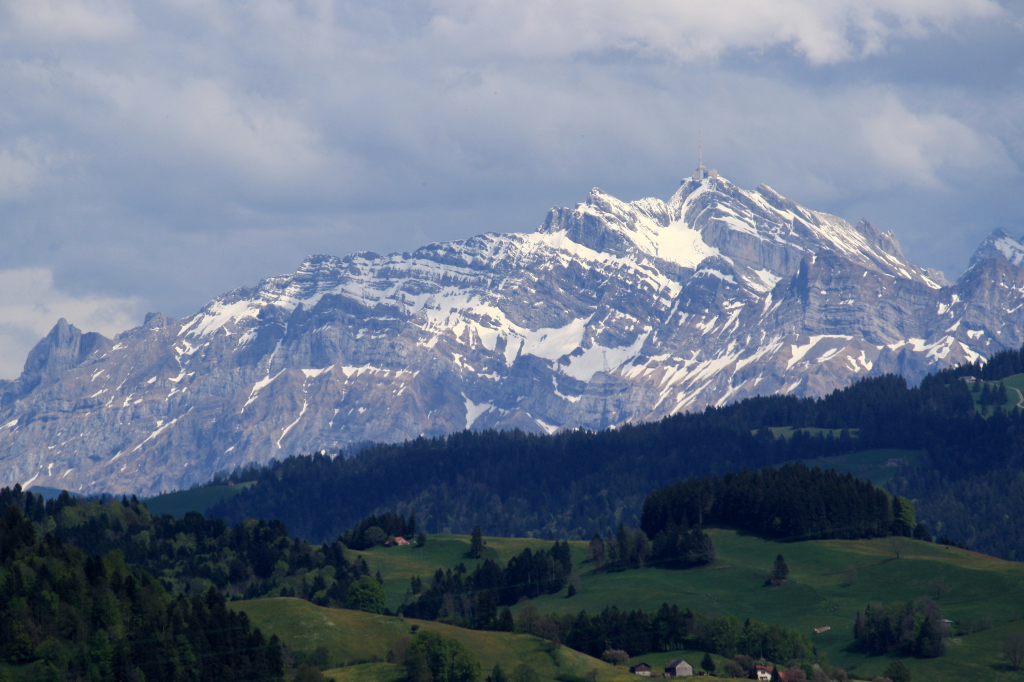
In 1802, mountain enthusiasts erected a cairn on the summit (copper engraving by Johann Baptist Isenrich and drawing by the German romantic Albert Weiler).
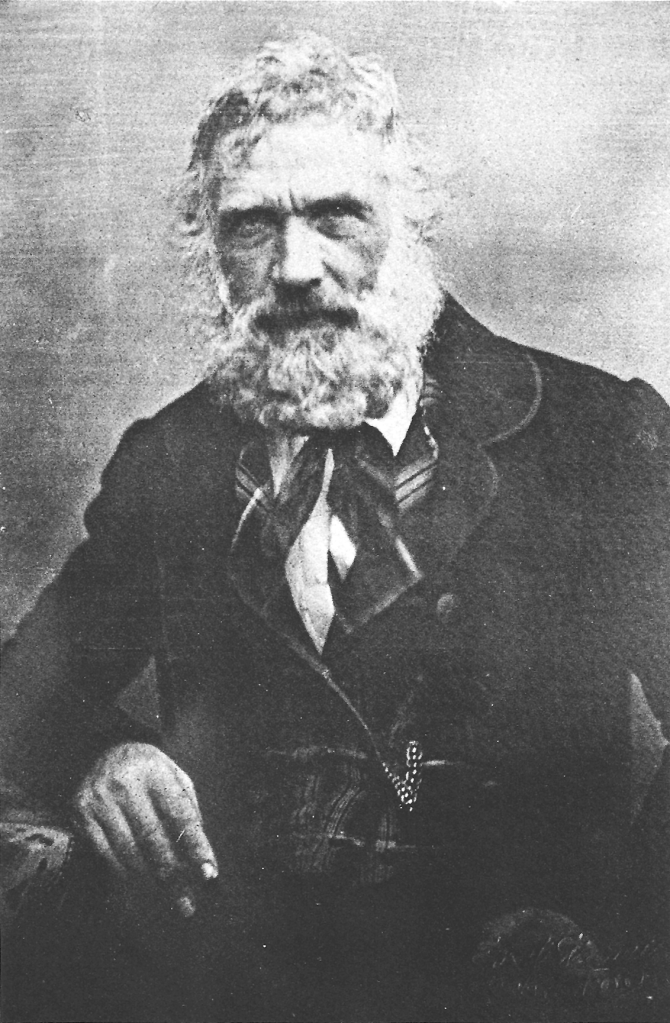
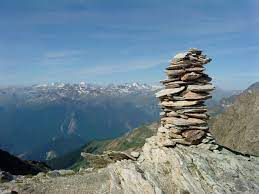
In 1842 the first refuge – a wooden shack with a bar – was built near the Säntis summit on the wind-protected east side.
This was replaced by a solid inn in 1846.
Around 1850, when the weather was nice, up to a hundred guests, including Richard Wagner, ate there.

From 1882 until the weather station was completed in 1887, the inn also served as accommodation for the weather station.
Around 1900, up to a thousand guests were reaching the summit every day.

On the occasion of the World Economic Forum in Davos, US First Lady Hillary Clinton visited the summit of Säntis on the afternoon of 2 February 1998.


The mountain is well developed:
Since 1935 its summit has been accessible by cable car from Schwägalp, hiking trails from there, from Wasserauen, Wildhaus, Unterwasser or via other routes.
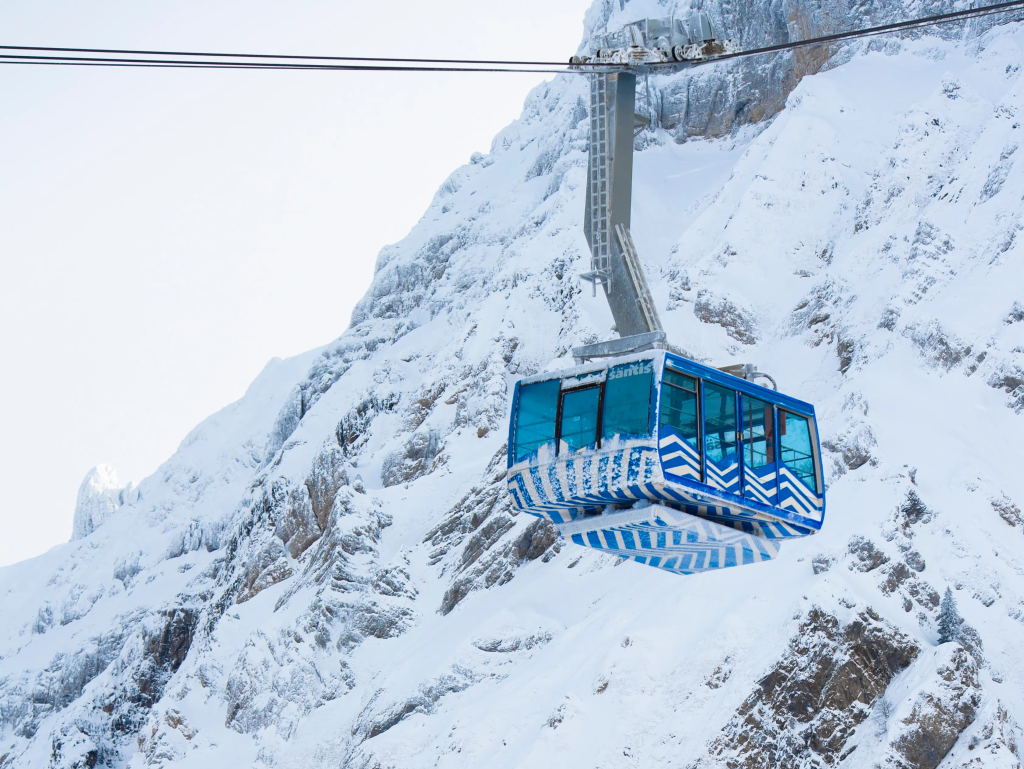
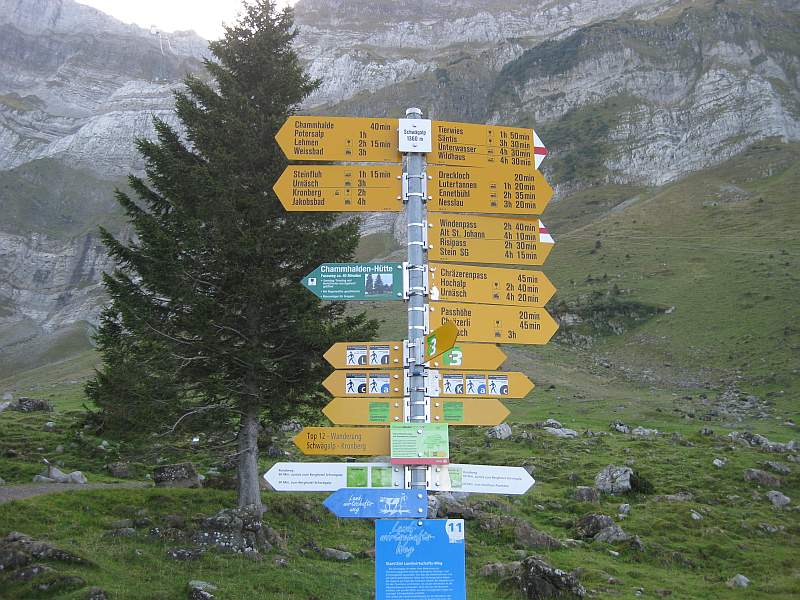
On 10 January 2019, during a heavy snowfall in the Alps, an avalanche coming from Säntis hit part of the Hotel at Schwägalp, which had been newly built in 2015.
The location was previously considered avalanche safe, but in an area designated as endangered.
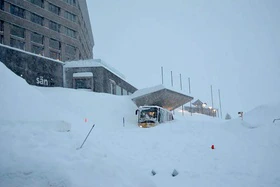
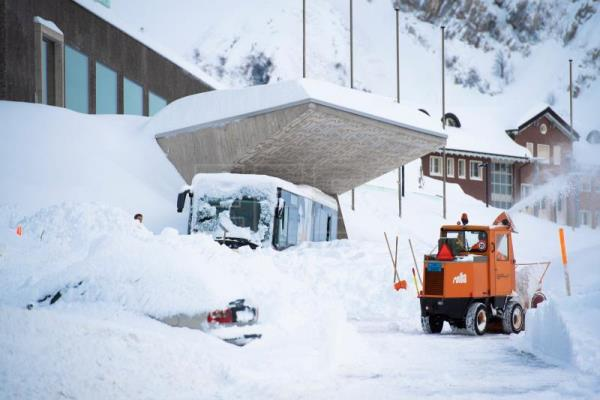

A second avalanche on Säntis damaged the lowest support of the Säntisbahn on the night of 13 -14 January 2019.
Operations had to be suspended for several months until 29 May 2019 for repairs.
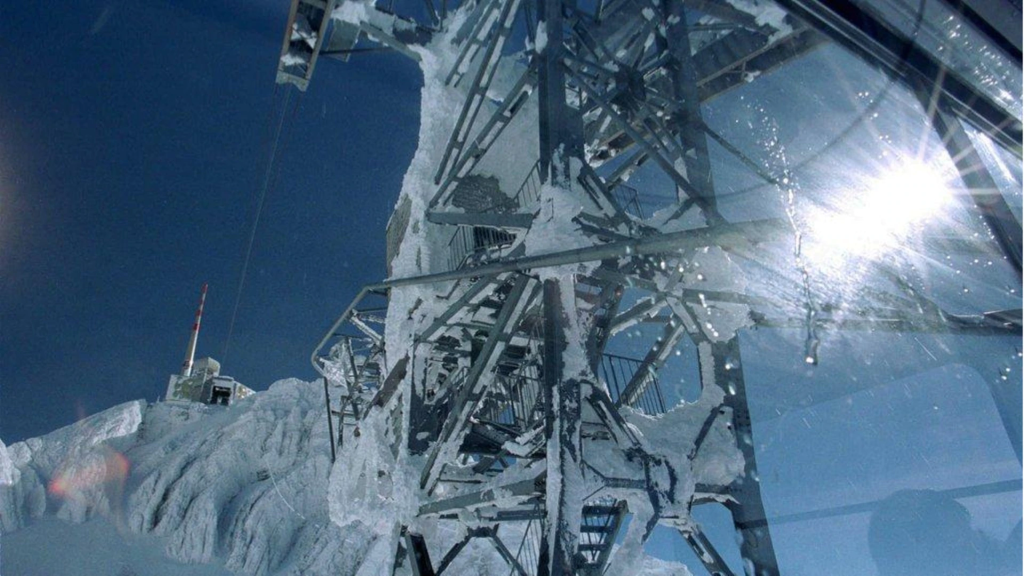
Knowing that our hotel for the night was the aforementioned Schwägalp hotel and the Säntisbahn had both been prone to avalanche damage did not engender warm and cuddly feelings within me.
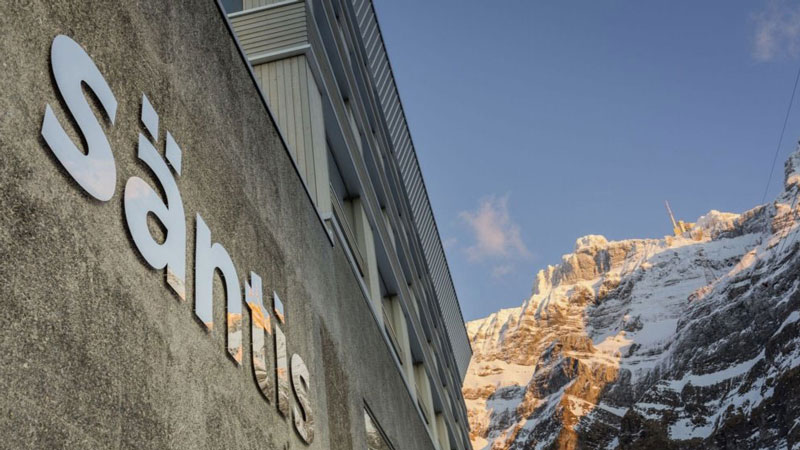
The International Meteorological Congress of Rome in 1879 declared it a necessity to build weather stations on adequate and accessible summits.
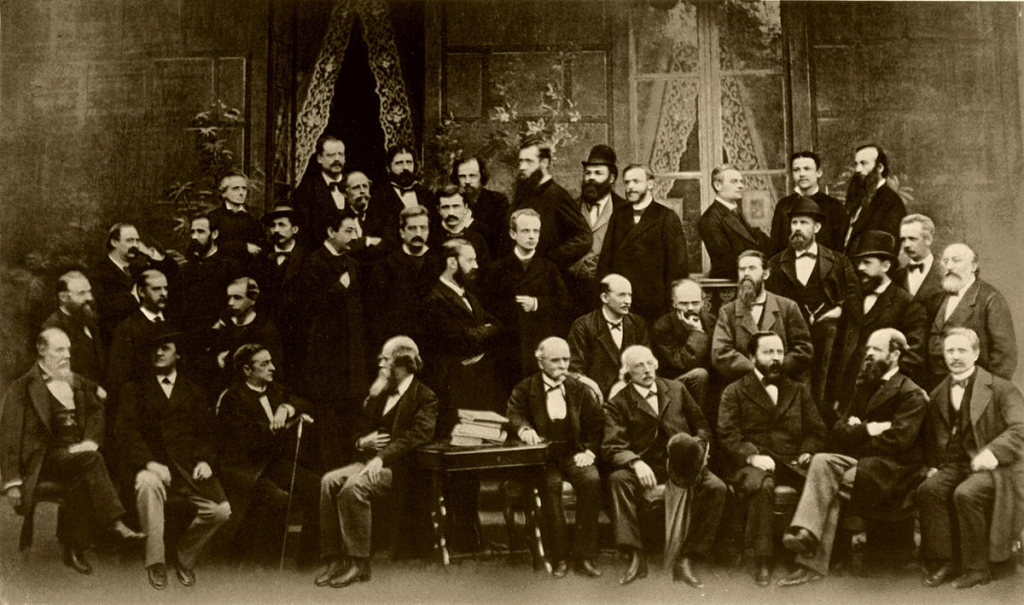

Therefore, the Swiss built a weather station on Säntis.
The position of the northern ridge proved to be ideal for such an endeavour.
The weather station was commissioned in autumn of 1882.
The Meteo Swiss measuring station is at an altitude of 2,501 metres above sea level.

When the contact with the weatherman couple Heinrich and Lena Haas on the Säntis was interrupted on Tuesday, 21 February 1922, hardly anyone would have been very worried, because the telegraph and telephone line had been damaged again and again by snow load and wind.
Rather worrying was that Mrs. Haas had complained on Sunday to the wife of the Säntis porter Rusch about an uninvited guest.
On the morning of 21 February, she had sought advice from the head of the St. Gallen Telegraph Office on how best to deal with the unpleasant guest.
It was clear that it was a native Bavarian named Gregor Kreuzpointner, who had also applied with Haas in 1919 for the post of Säntis weatherman.
On Wednesday, father and son Rusch tried to climb Säntis, but had to return due to the extreme snow conditions.
It was only on Saturday that they were able to set off for the second time to the observatory on the Säntis together.

On the way they found no damage to the line.
Only an old ski track led from the mountain summit down into the valley.
Once at the top, no one was waiting for them.
No smoke rose from the fireplace.
The front door was not locked.
They only heard the pathetic whispering of the dog “Sturm“.
They found the dog trapped in the completely devastated study – and next to the standing desk lay the lifeless Lena Haas in her own blood.
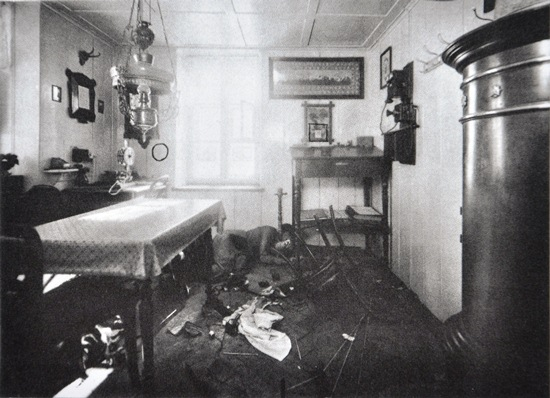
Next to the standing desk under the window lies the body of Lena Haas.
“The devastation at the scene was wreaked havoc by the storm dog, which was trapped for four days. The impact site marked with a circle comes from the murder weapon, a Browning with the caliber 7.65.” The tear-off calendar marked with a square indicates the time of the murder: 21 February 1922.
Expecting bad things, they went in search of Heinrich Haas.
They climbed up to the second floor and through the connecting tunnel to the summit plateau.
There they found the body of the weather station master in front of the wind gauge house.

This was located on the summit plateau at the Windmesserhäuschen (wind gauge shed).
The picture was taken with a tripod, the tripod legs and their shadows are recognizable.
“In this context, the Criminal Investigation Department points out that the recently purchased photo equipment with an up-to-date tripod finally enables an exact signaling of the crime scene, i.e. detailed and overview images.
On the basis of the photographic inventory, the trace of the perpetrator can be rolled up from the end point.
The photographs serve as evidence for the court.“
The only possible perpetrator was the bankrupt Gregor Kreuzpointner, who was known to them and had been with them since 16 February.
The files show that he received financial help from Heinrich Haas in order to pay his debts and buy a business from a tired shoemaker, through which he could continue to finance his expensive ventures into the mountains, where he could be his own master.
Haas was his last hope.
It can be assumed that he did not achieve his goal and that a dispute broke out as a result of which old wounds burst open.
He may have made Haas responsible for his unfortunate situation, because Haas had been elected Weather Warden in his place, although it was hopeless.
A deep disappointment that reappeared, combined with anger and hatred, must have had such a destructive effect on a financially and socially unsuccessful person like Kreuzpointner that his fuse probably blew and a fatal short circuit occurred.
Kreuzpointner was wanted as a suspected double murderer.
On the run, he managed to steal Lena’s silver jewelry.
In Heiden, under mysterious circumstances, he handed over the murder weapon – a Browning caliber 7.65 – to an uninvolved third party, who delivered the weapon to the police.
On 4 March 4, Kreuzpointner’s body was found – he had hung himself in an abandoned barn below the Schwägalp.
Since none of the affected communities agreed to bury Kreuzpointner, the body was sent to the Medical Faculty of the University of Zürich for research purposes.
Since Kreuzpointner had evaded criminal proceedings, the course of events and the motive for the crime could never be fully clarified.
Kreuzpointner was in financial difficulties, and he probably blamed Haas for his misfortune, because he had not been given the post of weatherman on Säntis three years earlier.

This portrait was distributed after the double murder.
Who is their author, unfortunately, could not be clarified.
Heinrich Haas was a trained baker, but was working as a tram conductor in Zürich when he discovered the announcement of a weather station on the Säntis in a newspaper advertisement.
As a native of Appenzell and an enthusiastic mountaineer, he applied for the post without hesitation.
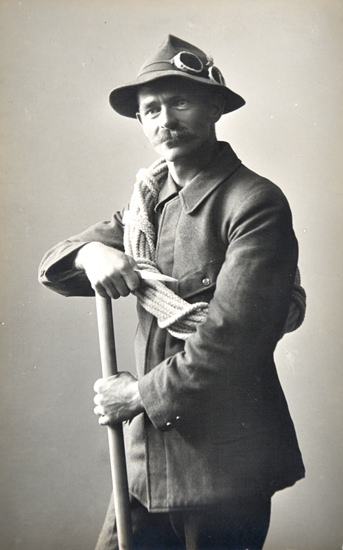
Above: Heinrich Haas
The position had been advertised for a married couple (which is probably why Kreuzpointner was out of the question).
Haas was the ideal candidate and so he got the job.

And some who knew the new weatherman only superficially may have mocked him as a “chatterer”. Admittedly, Haas liked to talk a lot, but everything he spoke testified to a profound, hot love for the mountains.“
In October 1919, Heinrich moved into the observatory on the Säntis with his wife and two children.
However, the children Bertheli and Lenchen had to live with Lena Haas-Räss’s mother in the valley below during their school days.
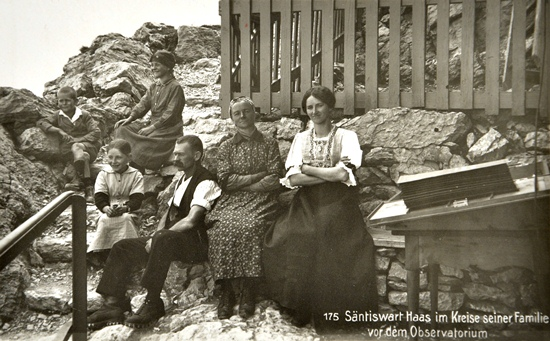
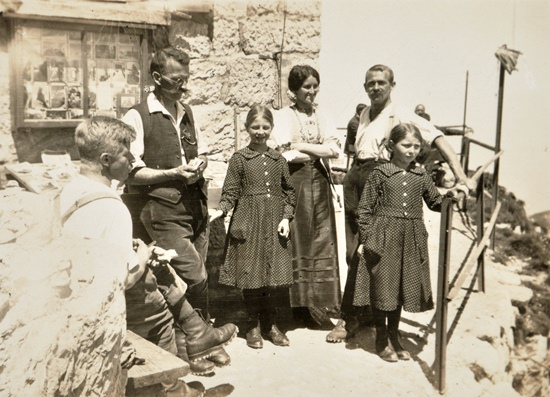
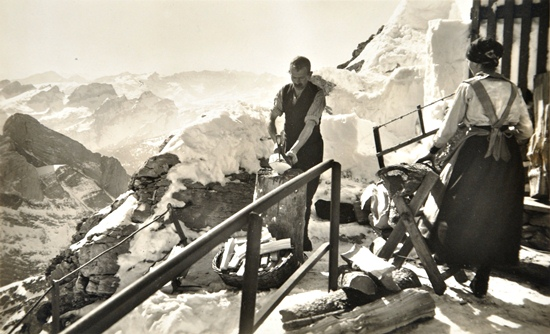
Here, Lena saws wood and Heinrich splits it.
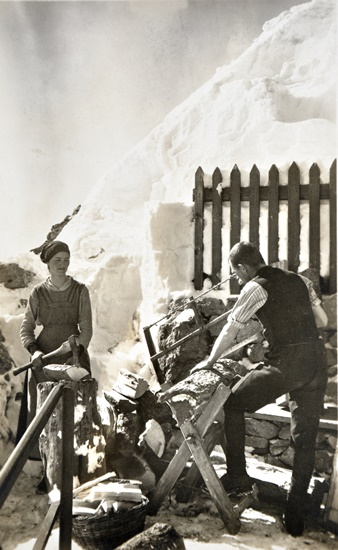
On the back of this photograph and the one just above it, Heinrich Haas is explicitly mentioned as the photographer.
This would mean that the shots were taken by Haas with a self-timer.

Everywhere with Heinrich, the dog “Sturm“, who would later become the only witness to the double murder.
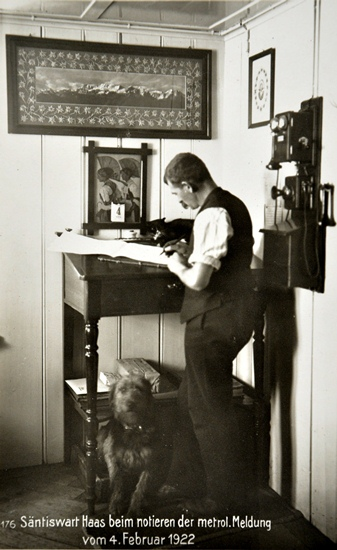
Also in this picture you can see “Sturm” again.
Two and a half weeks later, Lena Haas was shot in this room and “Sturm” would “wreak havoc” next to the body of Lena Haas, as described in the police report.

From here, the connecting tunnel led to the summit plateau.

This connecting tunnel ended under the small gable roof in the wind gauge house.
The body of weatherman Haas was later found here.

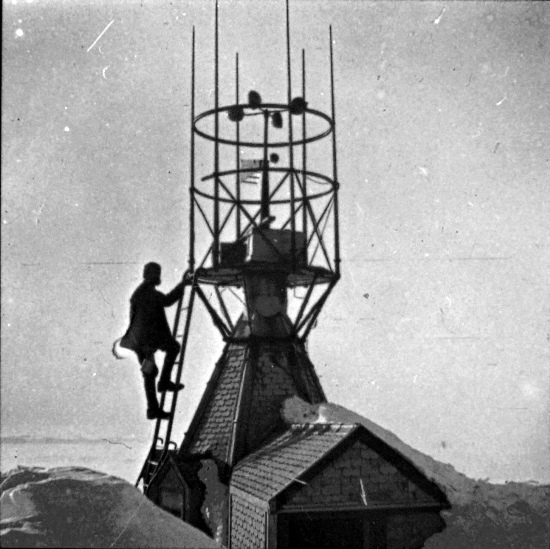
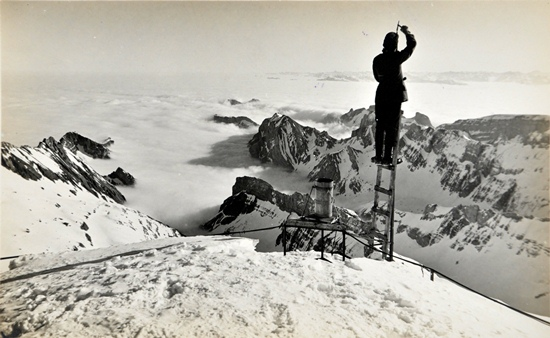
At the corner, the Pluviometer for measuring the amount of precipitation.

They brought firewood and food to the summit.
Here, Säntisträger Rusch and his son are welcome by the weatherman.
They were later to find the murdered couple.
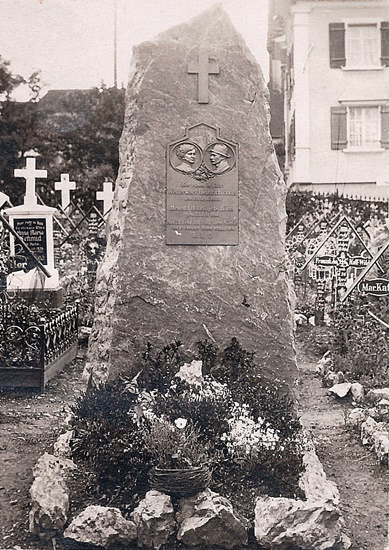
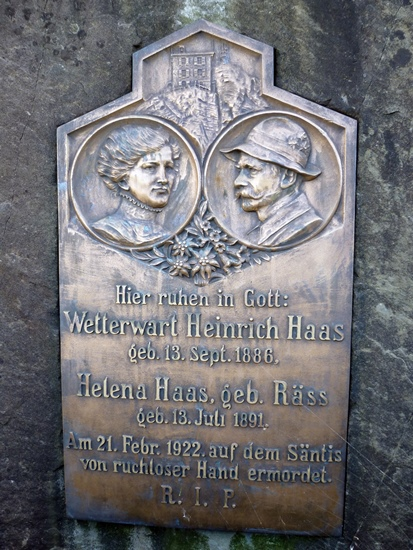
The inscription is incorrect:
Lena Haas was not called Helena, but Maria Magdalena.

This photograph was probably taken only after the death of the parents:
The children are already older and they wear black clothes.
The Säntismord (Säntis Murder) is the basis of the feature film Der Berg by Markus Imhoof.
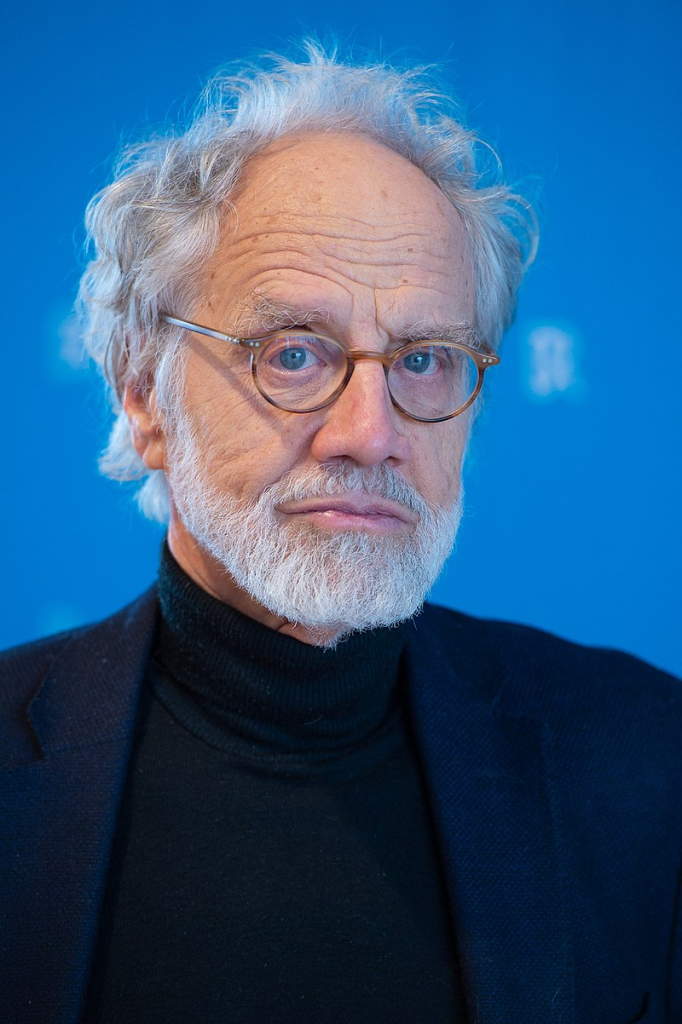
A drama was written for the film that could take place anywhere in the world in the seclusion of a mountain.
Although real events about the murders on the Säntis were chosen as the starting point, the ending is quite different:
One of the main characters in the film, which is also enriched with scenes of jealousy, is called Gregor Kreuzpointner and is shot by the weatherman at the end.
This caused confusion and anger, especially in the land below the Säntis.
In addition, it was suggested, especially in the media, that the drama on the Säntis actually took place as it is portrayed in the film.

The Säntis transmitter is a 123 meter high transmission tower made of reinforced concrete on Säntos.
The tower is used by the Swisscom broadcast company to distribute radio and television programs throughout northeastern Switzerland and is not normally open to the public.
Guided tours are possible by prior arrangement.

In addition, the tower handles directional radio links for television program feeds, radio broadcasting and services for the Global System for Mobile Communications (GSM) and serves as a measuring station for the Federal Office for Meteorology and Climatology.
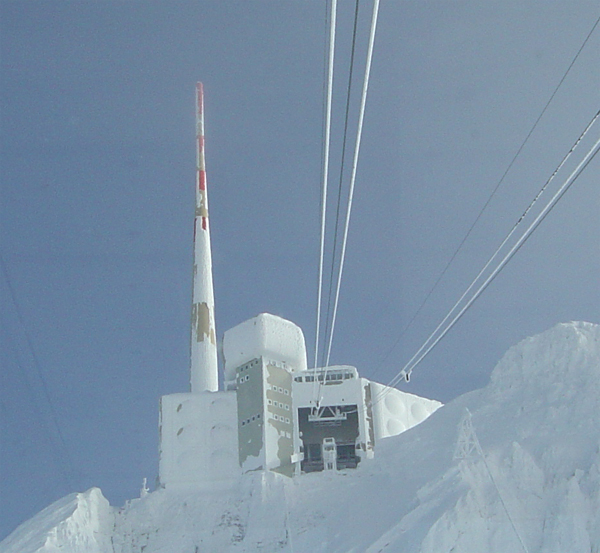
In 1955, the Federal Council asked the National Council and the Council of States to approve a loan of SFR 890,000 for the construction of a telecommunications building.

The predecessor of today’s transmission tower on Säntis was built by the PTT (Post Telegraph and Telephone) in 1956, was 18 meters high and was officially inaugurated in 1958.

In 1957 the first UKW (VHF) (ultra shortwave) radio station (DRS 2)(now Radio SRF 2 Kultur) went into operation.
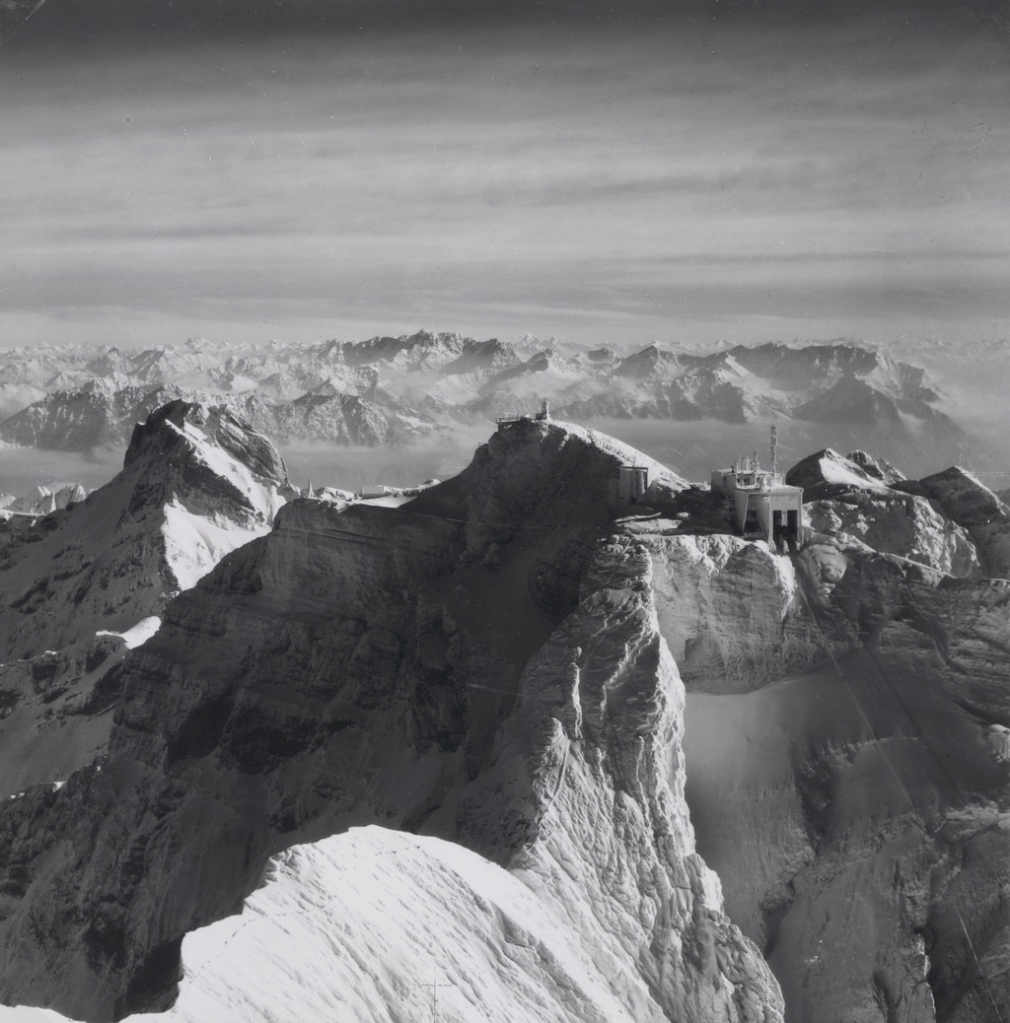
After a competition in 1968, the project contract for extensions was awarded and after two years of preparatory work, construction began in 1971, as the old transmission tower from 1955 had to be renovated several times due to the extreme weather conditions.
In 1975 the new transmission center was put into operation.
At that time it was the largest building of its kind in Europe.
The television programs of French- and Italian-speaking Switzerland (Suisse / Svizzera) were rebroadcast in 1976.
The first construction project application “Säntis 2000“, which aimed to expand the southern cavern, build a new antenna tower and renovate the weather station, was submitted in 1992.

Work on the project began in 1995.
In 1997, the old tower was demolished and the new, 123-meter high antenna tower was put into operation.
The opening ceremony took place on 17 June 1998.
As part of the restructuring of the Swisscom Group in 2002, the subsidiary Swisscom Broadcast AG became the owner of the transmission system.
After the broadcasting of digital television (Digital Video Broadcasting – Terrestrial (DVB-T) in Switzerland) started in 2007, analogue television programs were switched off.
On 3 June 2019, broadcasting of digital television programs ended.

The antenna of the new transmission tower is encased in glass fiber reinforced plastic and can be heated to prevent ice from falling onto the visitor terrace below.
The diameter of the mast base, which weighs 4,164 tons , is 5.49 meters and the diameter of the spire is 1.82 meters.
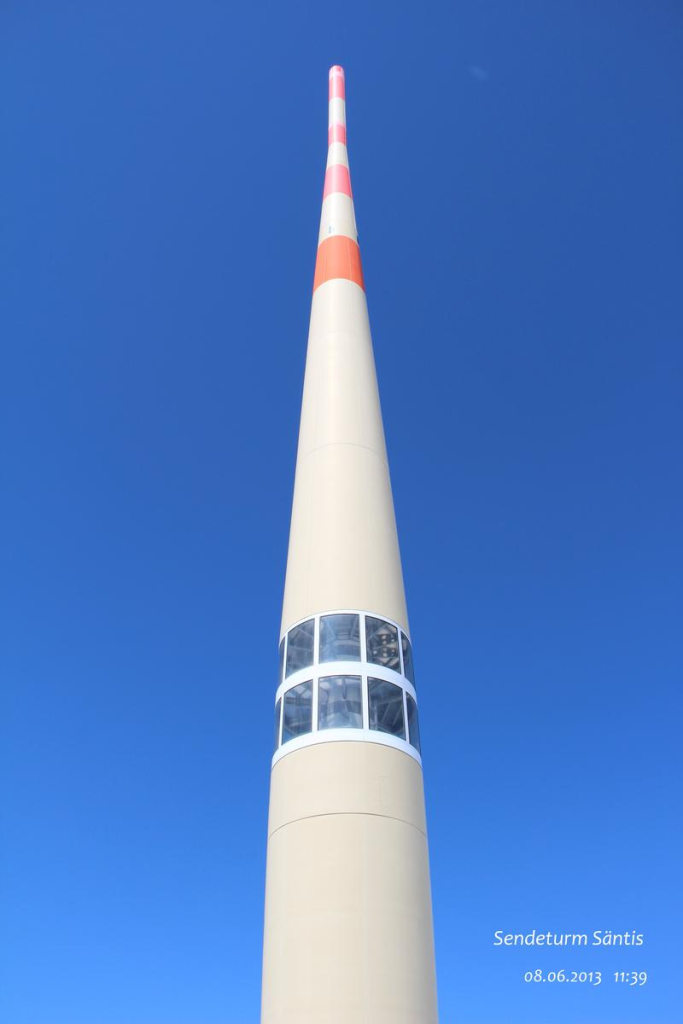
A large part of central and eastern Switzerland is supplied by this transmitter.
The transmitter can also be received in large parts of southern Germany and neighboring countries.
In excellent conditions, the station can even be received noise-free in some parts of the German state of Hesse.
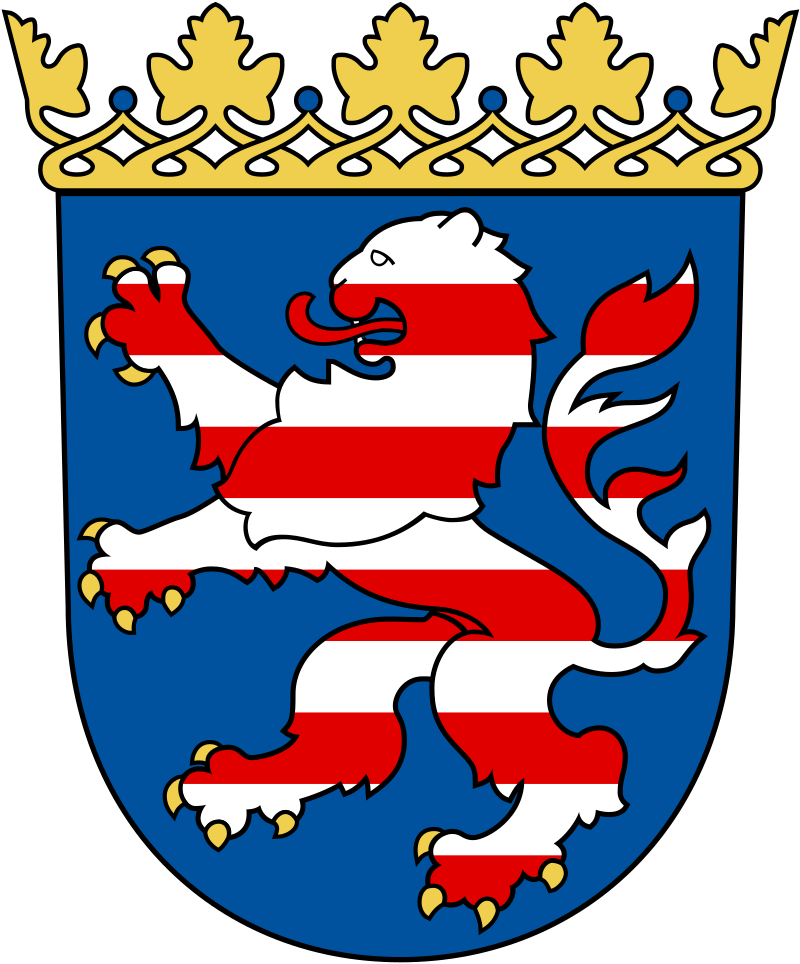
There is also a radio link to the Pfänder transmitter in Austria.

The Säntis Tower broadcasts five radio programs.
The Säntis transmitter is the television tower with the highest number of lightning strikes in Europe:
From summer 2010 to June 2011, around 50 strikes were registered.
With the exception of the 84-meter high antenna tower, no part of the building rises above the summit to ensure a clear view from all sides.
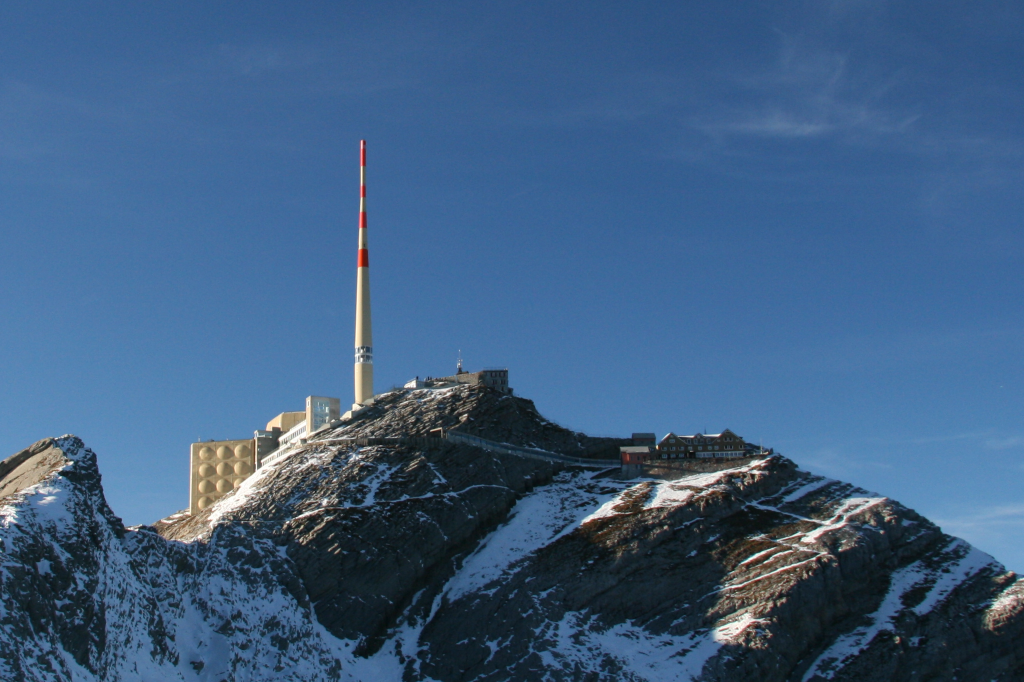
Today, the summit is easily accessible by aerial tramway from Schwägalp.
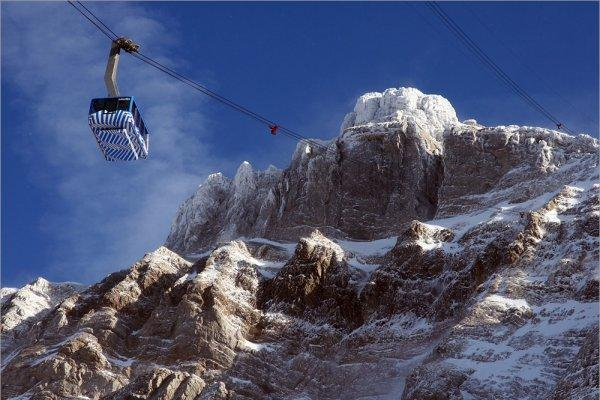
Säntis has been a popular destination for tourists since the mid 19th century.
However, even though many ideas to make the summit more easily accessible existed since those days, it took almost another century for them to materialize.
Many approaches, using various types of railways starting from several nearby towns, were tried, but ultimately failed.
One project planned to access Säntis from Wasserauen or Unterwasser by rack-and-pinion railway.
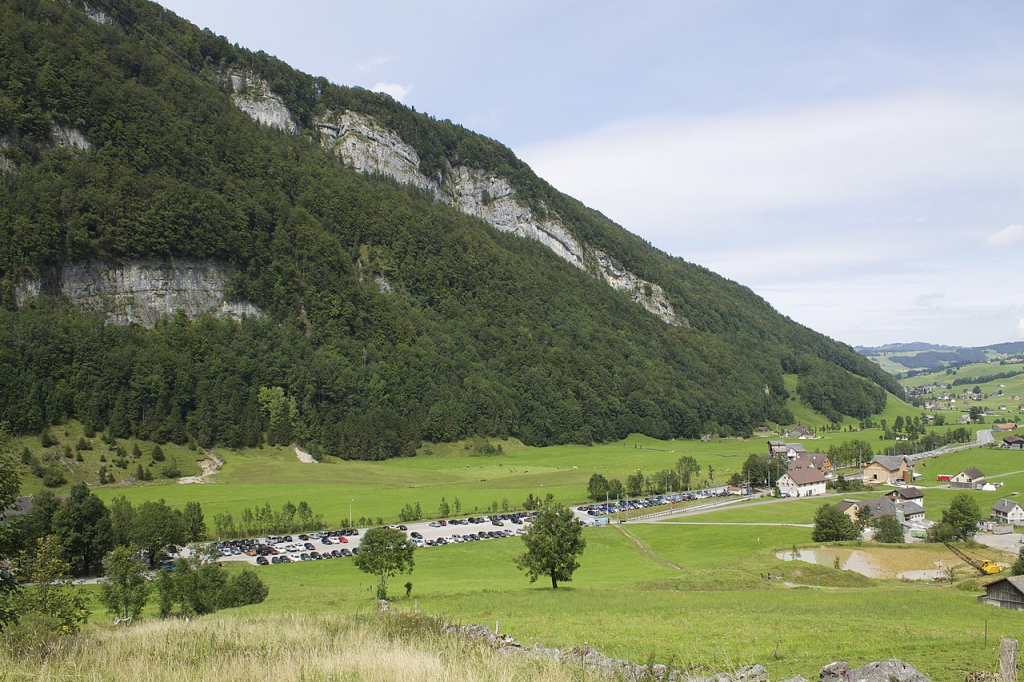
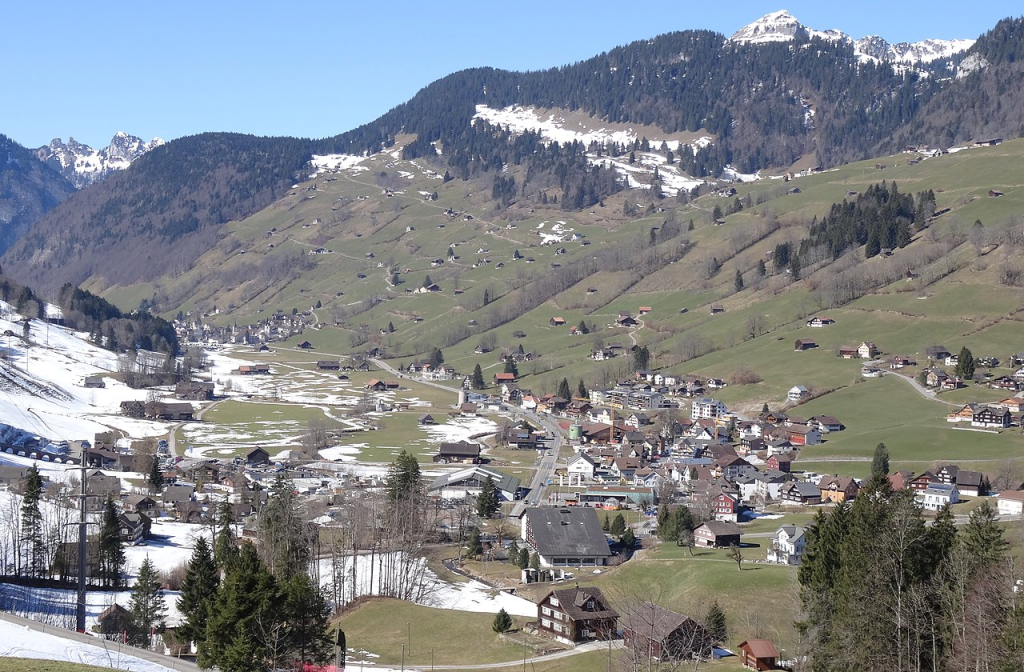
While the lower section of this project between Appenzell and Wasserauen was built and is still part of today’s active railway network, the rest of it was halted due to a lack of funding.
Finally, local businessman Dr. Carl Meyer of Herisau came forward with the idea to construct an aerial tramway from the base of the mountain, at Schwägalp, and build a mountain road from the nearby town of Urnäsch for easier access to its lower terminal.
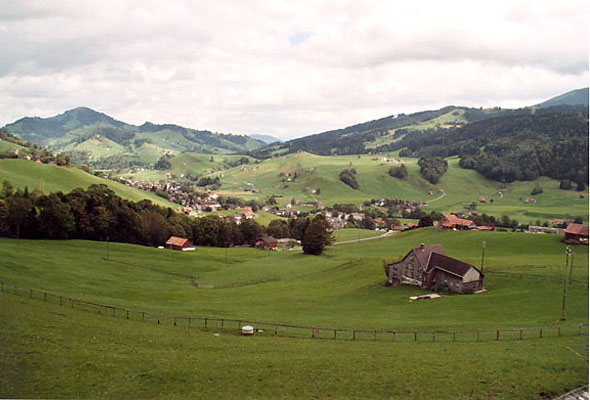
On 22 September 1933, his project was ultimately selected for construction and Meyer was awarded with the necessary licences by the federal government.
The first cable car from Schwägalp to Säntis was built between 1933 and 1935 by Leipzig-based Bleichert Transportanlagen GmbH.
Finally, on 1 July 1935, the aerial tramway started operations.

The original cabins were replaced by larger ones in 1960.
The entire aerial tramway installation was replaced between 1968 and 1976.
In 2000, new cabins were commissioned.
The aerial tramway Luftseilbahn Schwägalp – Säntis is one of the most frequented tramways in Switzerland.
It has a total length of 2,307 meters.
The altitude gain between the terminals is 1,123 meters.
The journey takes roughly eight minutes.

Begin with the positive.
The special Zodiac Menu Gemini at the Säntis Restaurant was truly a delightful feast:
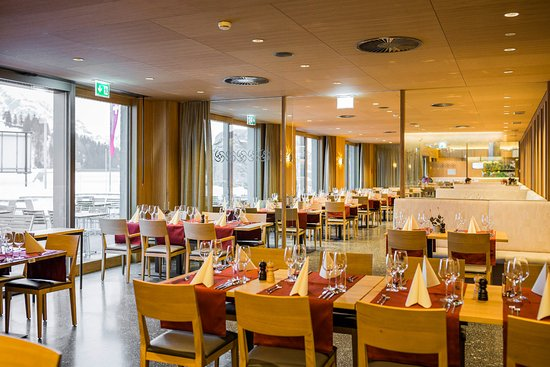
- Carpaccio with Schwägalp cheese
- Säntis Riesling (wine) soup
- Cream cheese mousse in a puffed pastry star
- Fried char fillet
- Pumpkin ravoli and roasted parsnips
- Pink roasted veal tips with apple-horseradish sauce, noodles and vegetables
- White chocolate mousse and mint muffin with mandarin parfait


It was even then an odd moment.
Corona was still a concern and everyone wore masks except when seated at the tables eating.

I had arrived back on Swiss soil, after an absence of 46 days not seeing the wife, and this evening was our first travelling adventure since my return.

I had been living in Eskişehir since 1 March 2021, we were reunited back in Switzerland on 16 July, we travelled to and returned from the island of Elba (Italy) (26 July to 1 August), and I flew back to Turkey on 4 August.

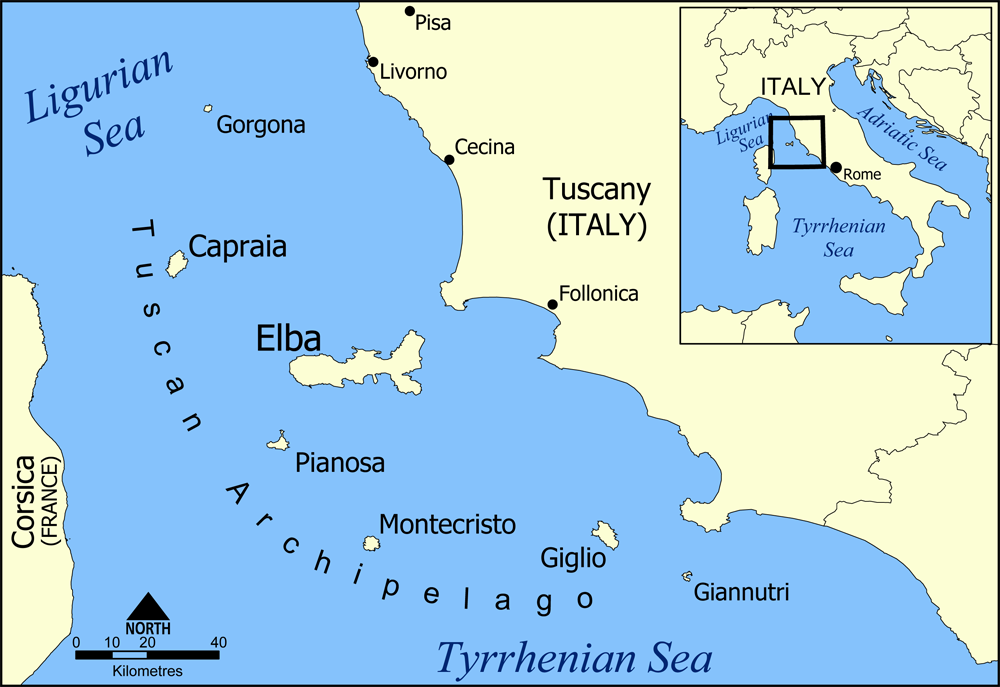

There are challenges to a long-distance relationship:
- the coping with having to say goodbye again and again
- the potential loss of romantic feelings for your partner
- the temptation to give up on your relationship
- the emotional rollercoaster stages of a long distance relationship
- the growth made while living apart and the awkwardness of getting reacquainted
- communicating while apart
- trusting your partner when they are away
- the realization that most long distance relationships end

Dinner in Konstanz (Germany) on the night of my return was nice, but it was not until I was back in my bed, back in my room, back in our apartment, did the journey from Eskişehir feel completed.
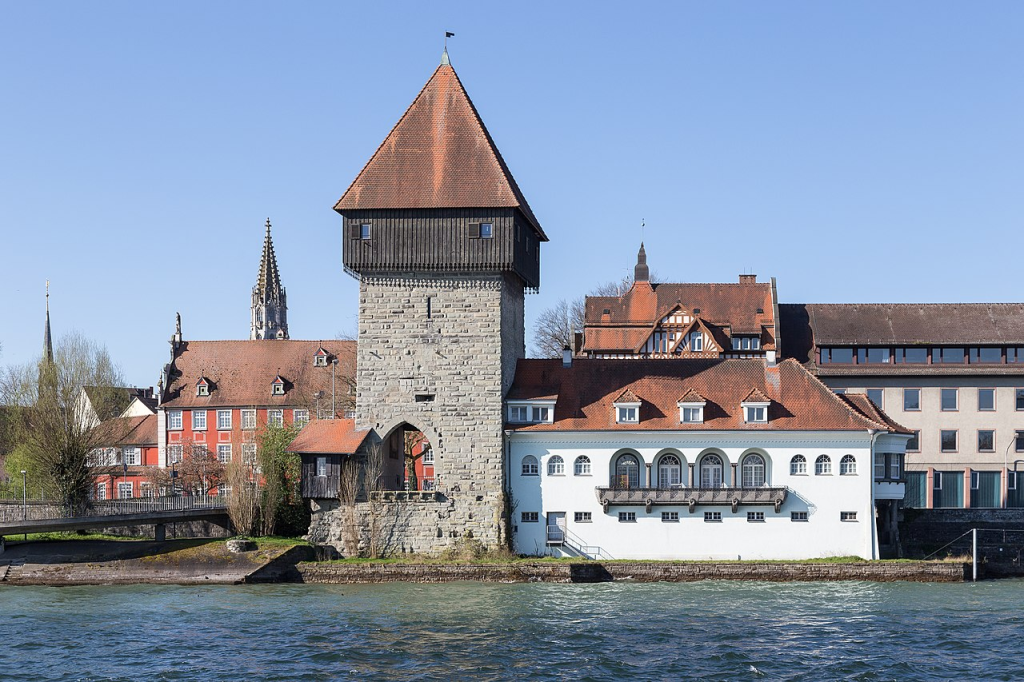
29 December and 30 December prior to the drive to Schwägalp were concerned with the details that real life distracts us with, especially in those terrible Corona days.
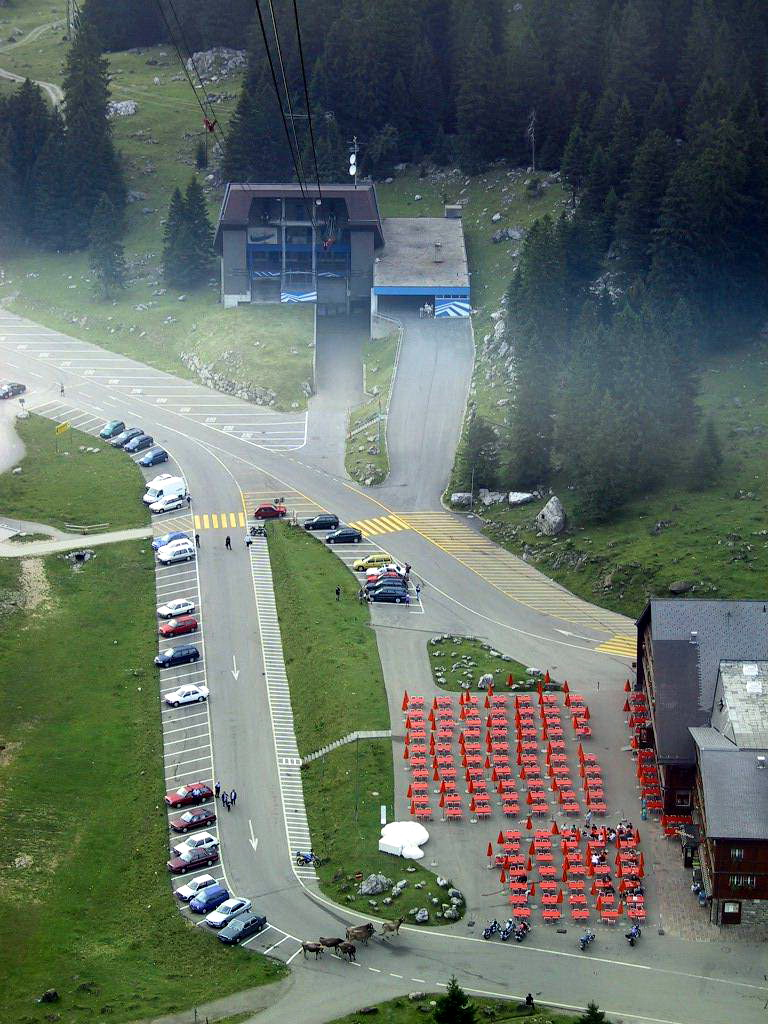
It is the oddest of sensations to simultaneously know someone intimately and yet this same person across the table from you is even more strange to you now than was ever before.
I cannot imagine what she may have been thinking of me.
I sometimes wonder if men barely exist in a woman’s world, if her dependency on a man is akin to a tourist’s dependency on an airline.
The convenience of a man is missed but is there true agony felt?
I can only hope.

We cope, we continue, in our separate lives, because time and distance cannot capture the silent tapestry that each day apart creates within each individual.
Five-minute Skype sessions cannot communicate the seamless way, the overall effects, of a life lived independently.
The pain of losing the sight and touch of a loved one being physically present becomes more and more numb as time passes.
Who is this stranger with so familiar a face and manner?

In my eyes
Indisposed
In disguises no one knows
Hides the face
Lies the snake
And the sun in my disgrace
Boiling heat
Summer stench
‘Neath the black, the sky looks dead
Call my name
Through the cream
And I’ll hear you scream again
Black hole sun
Won’t you come
And wash away the rain?
Black hole sun
Won’t you come
Won’t you come
Won’t you come

“A black hole is a billion times larger than a sun, it’s a void, a giant circle of nothing, and then you have the Sun, the giver of all life.
It is a combination of bright and dark, this sense of hope and underlying moodiness.“

Stuttering
Cold and damp
Steal the warm wind, tired friend
Times are gone
For honest men
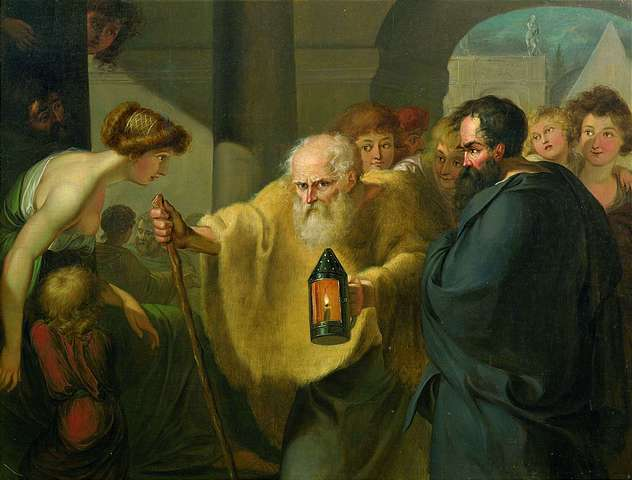
“It’s really difficult for a person to create their own life and their own freedom.
It’s going to become more and more difficult, and it’s going to create more and more disillusioned people who become dishonest and angry and are willing to f— the next guy to get what they want.
There’s so much stepping on the backs of other people in our profession.“
Chris Connell

Sometimes, far too long for snakes
In my shoes
Walking sleep
In my youth, I pray to keep
Heaven send
Hell away
No one sings like you anymore
“Black Hole Sun” is a song by the American rock band Soundgarden.
Written by frontman Chris Cornell, the song was released in 1994 as the 3rd single from the band’s 4th studio album Superunknown (1994).
It is one of the band’s most popular and recognizable songs.
The video follows a suburban neighborhood and its vain inhabitants with comically exaggerated grins, which are eventually swallowed up when the Sun suddenly turns into a black hole, while the band performs the song somewhere in an open field.
In the video, Cornell can be seen wearing a fork necklace given to him by Shannon Hoon of Blind Melon.
Richard Shannon Hoon (1967 – 1995) was an American singer-songwriter and musician.
He was the lead singer of the band Blind Melon from 1990 until his death in 1995.
After a disappointing performance at Numbers club in Houston on 20 October 1995, Hoon undertook an all-night drug binge.
The next day, Blind Melon was scheduled to play a show in New Orleans at Tipitina’s.
The band’s sound engineer, Lyle Eaves, went to the tour bus to awaken Hoon for a sound check, but Hoon was unresponsive.
An ambulance arrived and Hoon was pronounced dead at the scene, at the age of 28.
His death was attributed to a cocaine overdose.

Christopher John Cornell (né Boyle) (1964 – 2017) was an American singer and musician best known as the lead vocalist and rhythm guitarist for the rock bands Soundgarden and Audioslave.

He also had a solo career and contributed to soundtracks.

Cornell was also the founder and frontman of Temple of the Dog, a one-off tribute band dedicated to his late friend Andrew Wood.
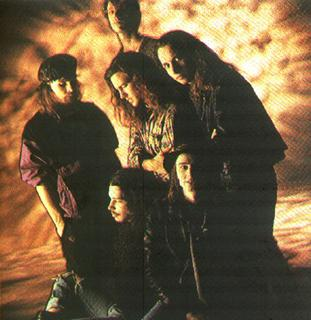
Andrew Patrick Wood (1966 – 1990) was an American musician.
He was the lead singer and lyricist for the alternative rock bands Malfunkshun and Mother Love Bone.
During his time in Malfunkshun, Wood started relying heavily on drugs, entering rehab in 1985.
Due to his struggle with drug addiction, Wood checked himself into rehab in 1989, hoping to get clean for the release of Mother Love Bone‘s debut album.
He died in Seattle at the age of 24, after being found in a comatose state by his girlfriend following a heroin overdose.

Cornell struggled with depression for most of his life.
He was found dead in his Detroit hotel room in the early hours of 18 May 2017, after performing at a Soundgarden concert an hour earlier at the Fox Theatre.

His death was ruled a suicide by hanging.
“No one seems to get this, but ‘Black Hole Sun’ is sad.“

Now, I understand what you tried to say to me
And how you suffered for your sanity
And how you tried to set them free
They would not listen, they did not know how
Perhaps they’ll listen now

Black hole sun
Won’t you come
And wash away the rain?
Black hole sun
Won’t you come
Won’t you come
Black hole sun
Won’t you come
And wash away the rain?
Black hole sun
Won’t you come
Won’t you come (Black hole sun, black hole sun)
Won’t you come (Black hole sun, black hole sun)
Won’t you come (Black hole sun, black hole sun)
Won’t you come? (Black hole sun, black hole sun)
Hang my head
Drown my fear
Till you all just disappear

Black hole sun
Won’t you come
And wash away the rain?
Black hole sun
Won’t you come
Won’t you come
Black hole sun
Won’t you come
And wash away the rain?
Black hole sun
Won’t you come
Won’t you come (Black hole sun, black hole sun)
Won’t you come (Black hole sun, black hole sun)
Won’t you come (Black hole sun, black hole sun)
Won’t you come (Black hole sun, black hole sun)
Won’t you come (Black hole sun, black hole sun)
Won’t you come (Black hole sun, black hole sun)
Won’t you come
Won’t you come

Starry, starry night
Flaming flowers that brightly blaze
Swirling clouds in violet haze
Reflect in Vincent’s eyes of china blue

Officially, the temperature atop the Mountain was -8° C, but this is no way accounts for the wind chill factor, rendering the observation terrace an extremely unpleasant -14°C (perhaps lower).
Frostbite was immediate to anyone foolish enough to leave parts of their bodies exposed to the elements.
The stars were barely perceptible with all the snow blustering about the ground.
The urge to linger and take photographs was dampened by the cold and the darkness.
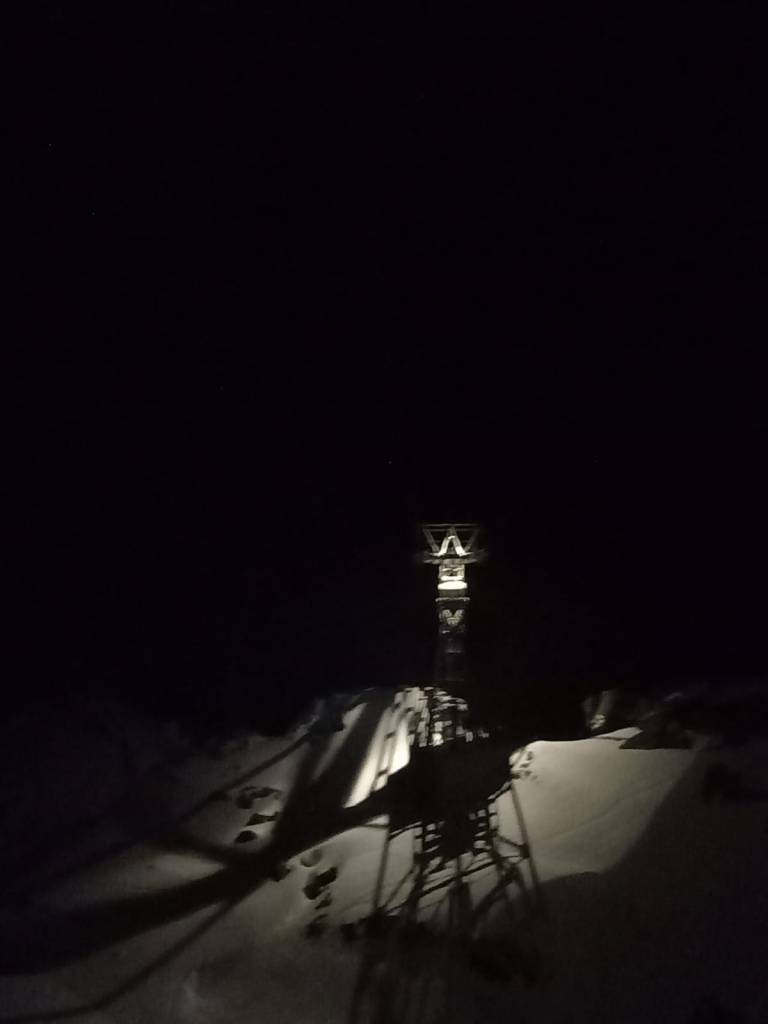
Inside, as consolation, an audiovisual presentation solely in German.

It has always amused me how nations that claim to be bilingual (such as Belgium and Canada) or multilingual (such as Switzerland and India) tend to only use the language of the locale rather than offer the polyglot possibilities of which it boasts of providing.


I sit and watch and some of what is said filters through.

Whenever life gets you down, Mrs. Brown,
And things seem hard or tough,
And people are stupid, obnoxious or daft,
And you feel that you’ve had quite eno-o-o-o-o-ough…..

Just remember that you’re standing on a planet that’s evolving
And revolving at 900 miles an hour.
It’s orbiting at 19 miles a second, so it’s reckoned,
The Sun that is the source of all our power.
Now the Sun, and you and me, and all the stars that we can see,
Are moving at a million miles a day,
In the outer spiral arm, at 40,000 miles an hour,
Of a galaxy we call the Milky Way.
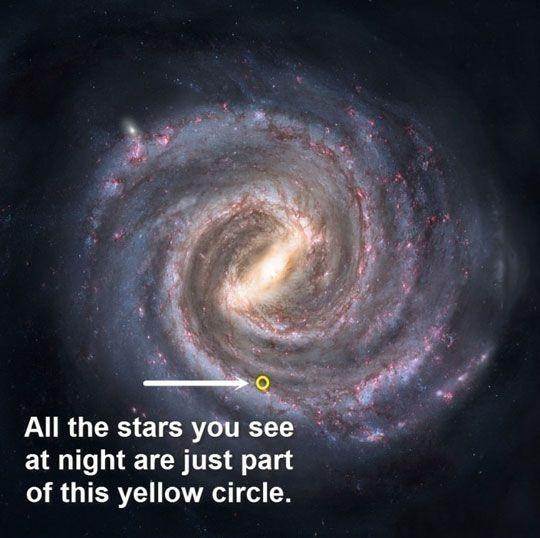
Our galaxy itself contains a hundred billion stars;
It’s a hundred thousand light years side to side;
It bulges in the middle sixteen thousand light years thick,
But out by us it’s just three thousand light years wide.
We’re thirty thousand light years from Galactic Central Point,
We go ’round every two hundred million years;
And our galaxy itself is one of millions of billions
In this amazing and expanding universe.

Our universe itself keeps on expanding and expanding,
In all of the directions it can whiz;
As fast as it can go, at the speed of light, you know,
Twelve million miles a minute and that’s the fastest speed there is.
So remember, when you’re feeling very small and insecure,
How amazingly unlikely is your birth;
And pray that there’s intelligent life somewhere out in space,
‘Cause there’s bugger all down here on Earth!

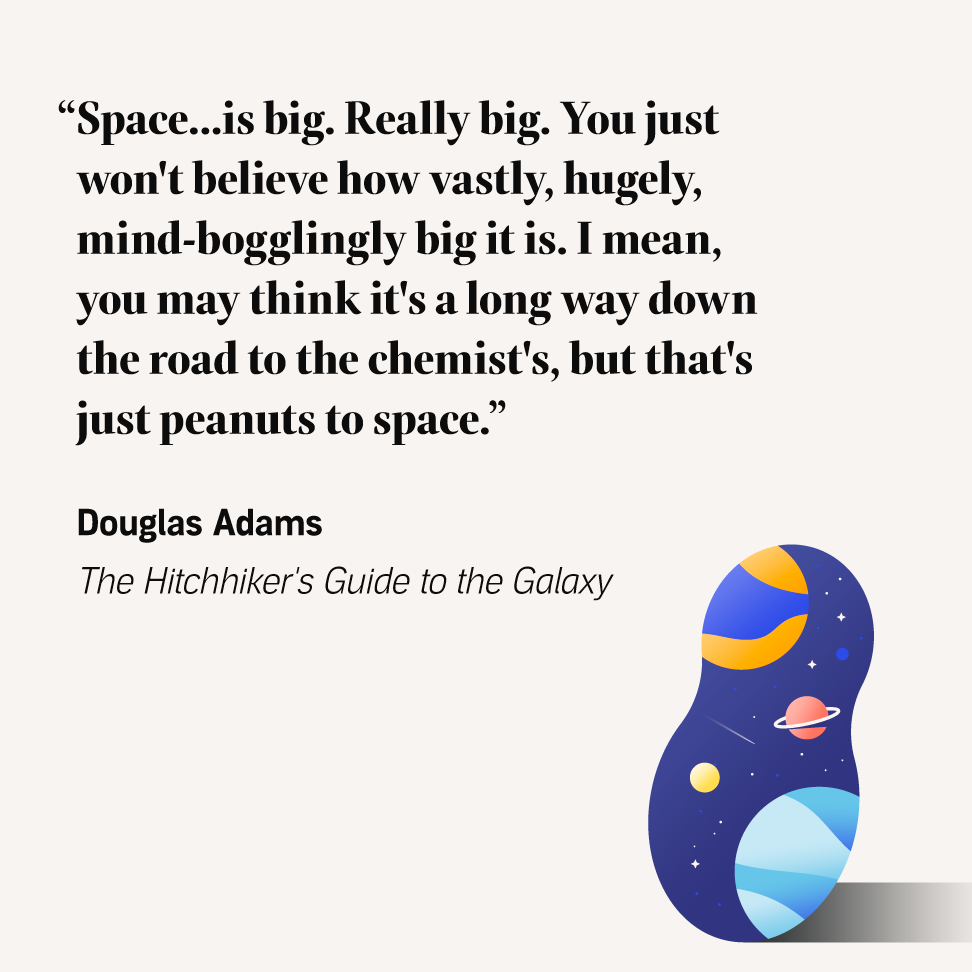
“Far out in the uncharted backwaters of the unfashionable end of the western spiral arm of the Galaxy lies a small disregarded yellow sun.
Orbiting this at a distance of roughly ninety-two million miles is an utterly insignificant little blue green planet whose ape-descended life forms are so amazingly primitive that they still think digital watches are a pretty neat idea.”

“This planet has – or rather had – a problem, which was this:
Most of the people living on it were unhappy for pretty much of the time.
Many solutions were suggested for this problem, but most of these were largely concerned with the movement of small green pieces of paper, which was odd because on the whole it wasn’t the small green pieces of paper that were unhappy.”

A concept that is always difficult to wrap my head around is the jaw-dropping idea that you and I, and everything we can observe around us, are made of the dust and gas blasted spaceward by exploding ancient stars.
And from the stardust and drifting gas, the extraordinary diversity of living things, including animals like you and me, emerged.
You and I are the cosmos ourselves.
We are stardust.
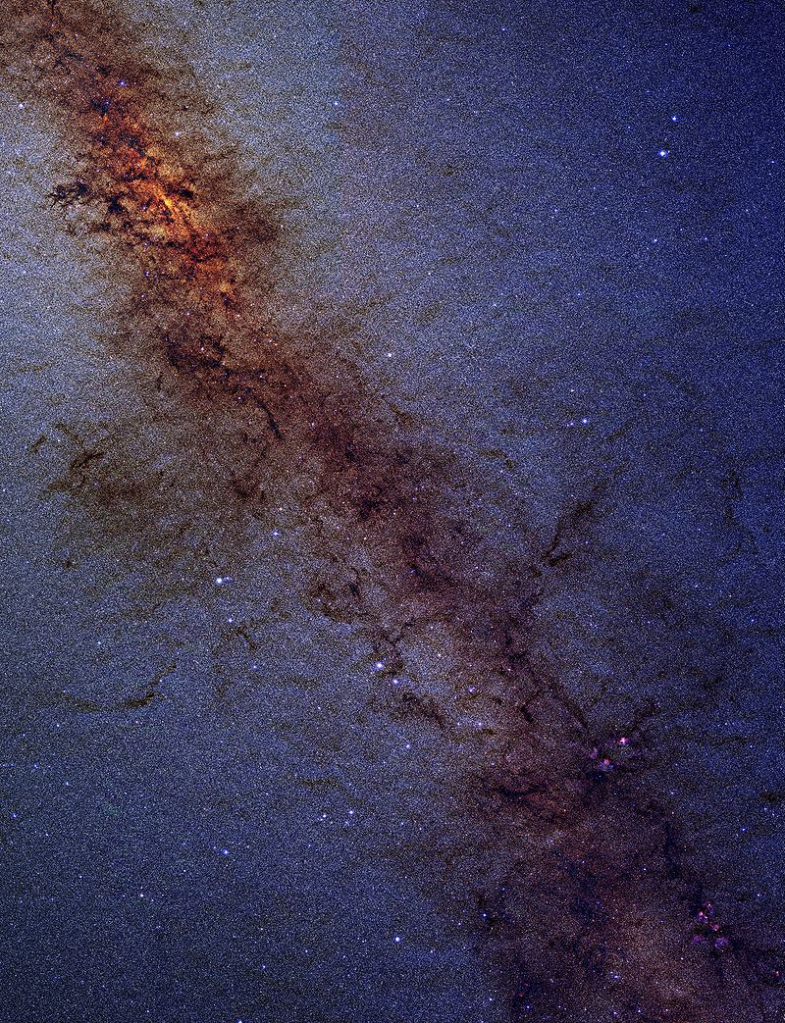
I came upon a child of God
He was walking along the road
When I asked him, where are you going?
This he told me
I’m going down to Yasgur’s farm
Think I’ll join a rock and roll band
I’ll camp out on the land
I’ll try and set my soul free
We are stardust, we are golden
And we’ve got to get ourselves back to the garden
Then can I walk beside you
I have come here to lose the smog
And I feel just like a cog
In something turning
Well, maybe it’s the time of year
Or maybe it’s the time of man
And I don’t know who I am
But life’s for learning
We are stardust, we are golden
And we’ve got to get ourselves back to the garden
By the time I got to Woodstock
They were half a million strong
Everywhere there were songs
And celebration
And I dreamed I saw the bombers
Riding shotgun in the sky
Turning into butterflies
Above our nation
We are stardust, we are golden
And we’ve got to get ourselves back to the garden
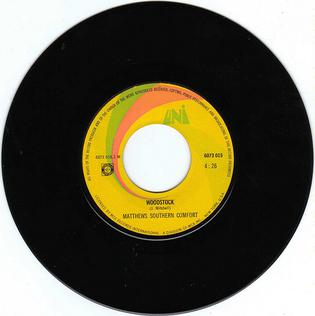
From the comfortable surface of Earth, our deep-thinking ancestors observed our planet and its relationship, their relationship, to the night sky and the Sun.
They learned where to live and how to survive.
From the icy blackness of space, our spacecraft, built by our best scientists and engineers, make further observations that relentlessly show us Earth is like no other place in the Solar System, and remains (as far we know at present) the only place where we can live and thrive.
By understanding the changes here over recent millennia, we can see that, if we are going to continue to thrive, we must preserve our environment.
Otherwise, we will go extinct, like 90% of the species that gave it a go on Earth before we showed up.

A cosmic perspective induces all of us to compare Earth to our neighbouring worlds out there.
It is one thing to consider Earth as a pretty big place, especially if you tried to walk around it.

It is another thing to think that 1,300 Earths would fit inside a sphere the size of Jupiter and over a million Earths would fit inside the volume of the Sun.
And this is just the Solar System.
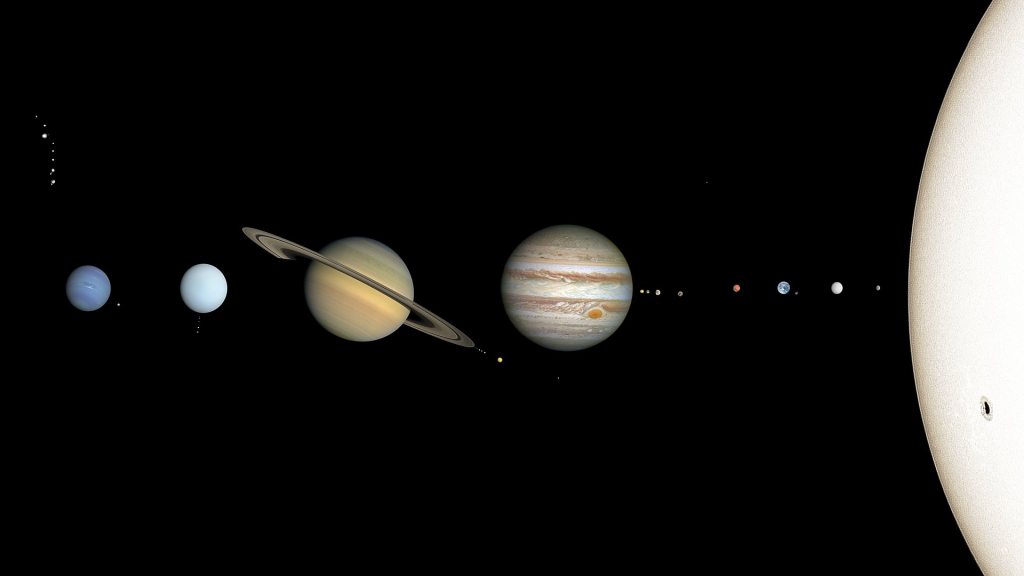
With 2 trillion estimated galaxies and uncountable numbers of stars, the Universe is filled with wild examples of exoplanets, stars, black holes, nebulae, galaxy clusters and more, which scientists are still probing.
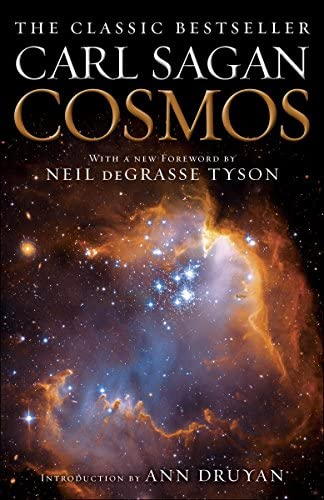
Ilsa, I’m no good at being noble, but it doesn’t take much to see that the problems of three little people don’t amount to a hill of beans in this crazy world.
Someday you’ll understand that.

We did not see the stars this evening.
I rarely see the stars in the night sky here in Eskişehir.
That doesn’t matter.
We are stardust, dust in the wind, and nothing else matters.
I close my eyes
Only for a moment and the moment’s gone
All my dreams
Pass before my eyes, a curiosity
Dust in the wind
All they are is dust in the wind
Same old song
Just a drop of water in an endless sea
All we do
Crumbles to the ground, though we refuse to see
Dust in the wind
All they are is dust in the wind—-
Oh–
Don’t hang on
Nothing lasts forever but the earth and sky
It slips away
All the money won’t another minute buy
Dust in the wind
All we are is dust in the wind
Dust in the wind
All we are is dust in the wind—-

Many things are gained in the progression of one’s years: income (hopefully), experience and wisdom (often but not always), but what is most difficult about aging is what is lost: bodily certainties like constant weight, perfect eyesight, a lovely mane of hair, innocence and childlike trust and faith, a sense of wonder and awe at the glory of existence.
More importantly the losses most keenly felt are the losses of friends and family.
Parents die.
Relationships end.
Cancer strikes one and spares another.
The good die young and the evil rot away slowly.
Strokes strike suddenly and who was is now no more.
Last week at WSE in Eskişehir, the husband of one of our cleaners gone.

At Yavuzçehre, in Denizli, last week a beloved colleague died from uninvited, unexpected brain hemorrhaging.

Yesterday here, today away.
Every moment is precious.
Everyone is precious.
Live each moment as if it were your last, their last.
It might very well be.
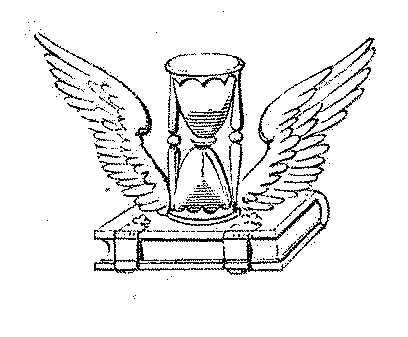
So close, no matter how far
Couldn’t be much more from the heart
Forever trusting who we are
And nothing else matters
Never opened myself this way
Life is ours, we live it our way
All these words, I don’t just say
And nothing else matters
Trust I seek and I find in you
Every day for us something new
Open mind for a different view
And nothing else matters
Never cared for what they do
Never cared for what they know
But I know
So close, no matter how far
It couldn’t be much more from the heart
Forever trusting who we are
And nothing else matters
Never cared for what they do
Never cared for what they know
But I know
I never opened myself this way
Life is ours, we live it our way
All these words, I don’t just say
And nothing else matters
Trust I seek and I find in you
Every day for us something new
Open mind for a different view
And nothing else matters
Never cared for what they say
Never cared for games they play
Never cared for what they do
Never cared for what they know
And I know, yeah, yeah
So close, no matter how far
Couldn’t be much more from the heart
Forever trusting who we are
No, nothing else matters

Colors changing hue
Morning fields of amber grain
Weathered faces lined in pain
Are soothed beneath the artist’s loving hand
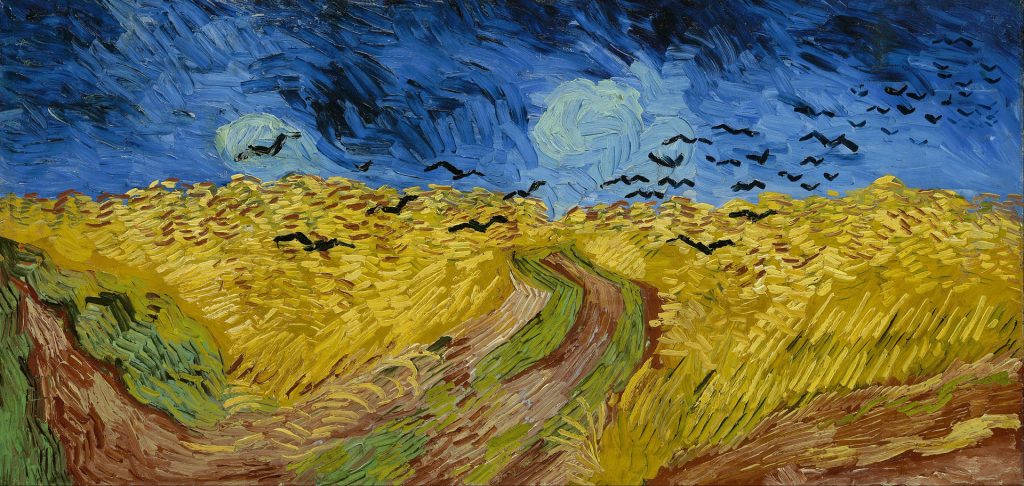
Now, I understand, what you tried to say to me
How you suffered for your sanity
How you tried to set them free
They would not listen, they did not know how
Perhaps they’ll listen now
For they could not love you
But still your love was true
And when no hope was left inside
On that starry, starry night
You took your life as lovers often do
But I could have told you, Vincent
This world was never meant for one
As beautiful as you

Starry, starry night
Portraits hung in empty halls
Frameless heads on nameless walls
With eyes that watch the world and can’t forget
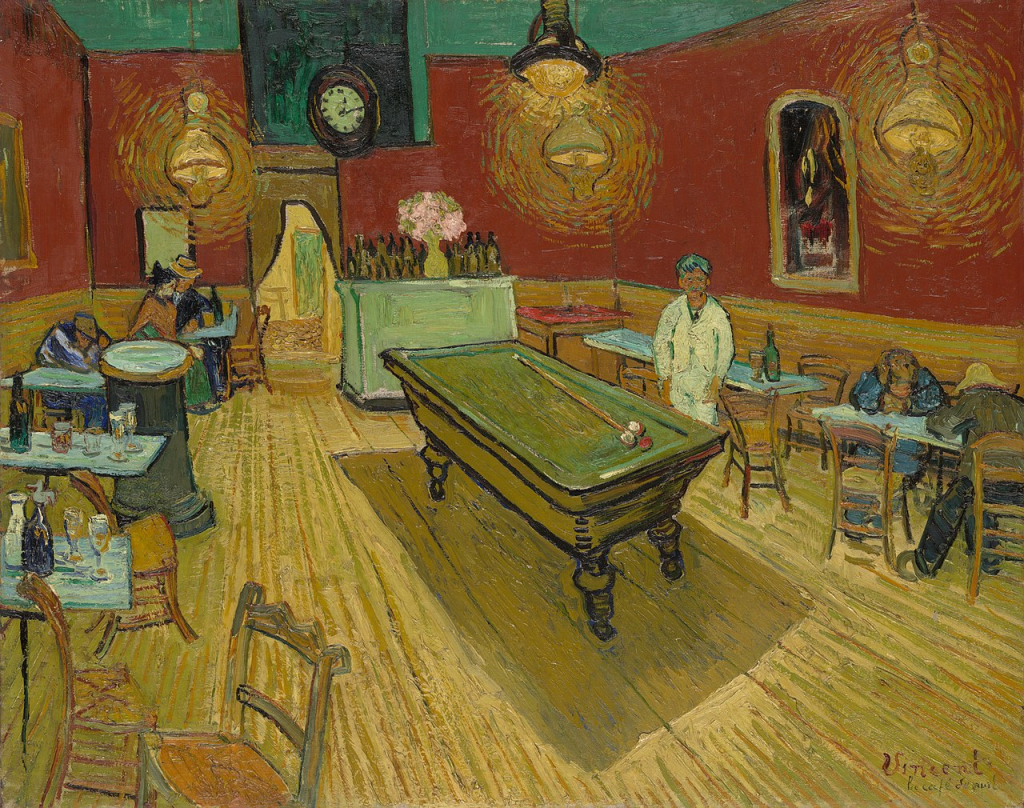
Like the strangers that you’ve met
The ragged men in ragged clothes
The silver thorn of bloody rose
Lie crushed and broken on the virgin snow

Now, I think I know what you tried to say to me
How you suffered for your sanity
How you tried to set them free
They would not listen, they’re not listening still
Perhaps they never will
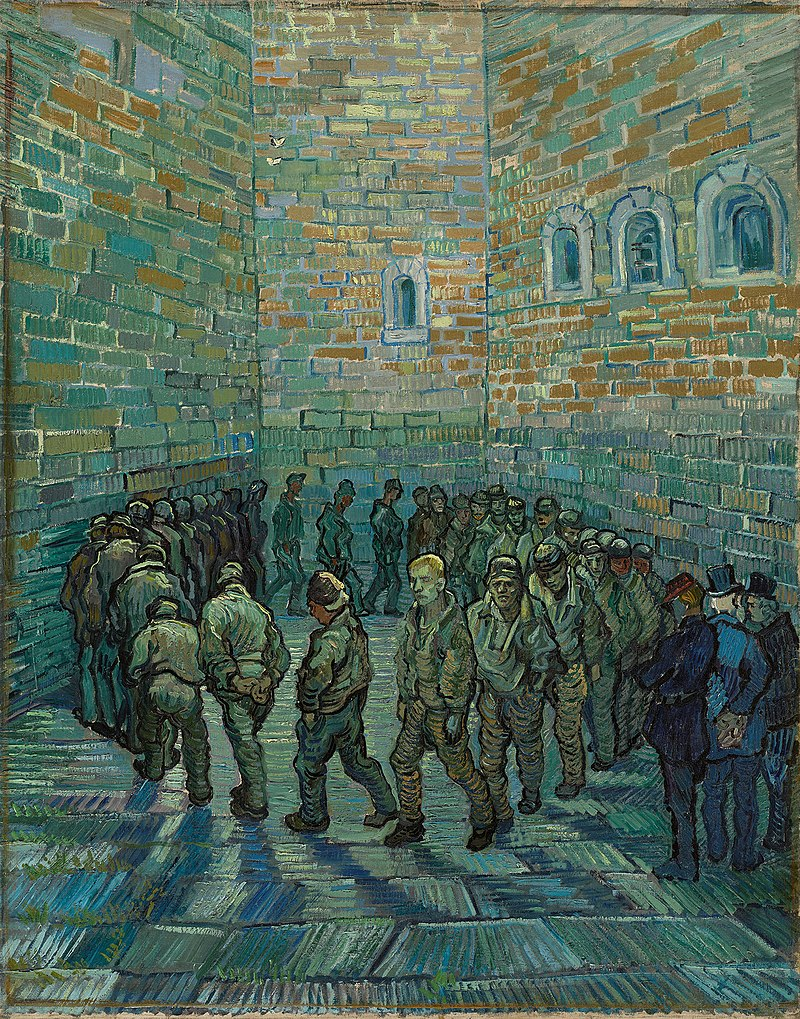
Sources: Wikipedia / Google / Lonely Planet, The Universe / photobibliothek.ch, “Double murder on the Säntis in 1922” / Rough Guide to Switzerland / Douglas Adams, The Hitchhiker’s Guide to the Galaxy / Stephen Blake, Loving Your Long Distance Relationship / Humphrey Bogart, Casablanca / Eric Idle, “The Galaxy Song“, Monty Python and the Meaning of Life / Kansas, Dust in the Wind / Metallica, Nothing Else Matters / Don McLean, Vincent / Joni Mitchell, Woodstock / Soundgarden, Black Hole Sun / Esther Vilar, The Manipulated Man
